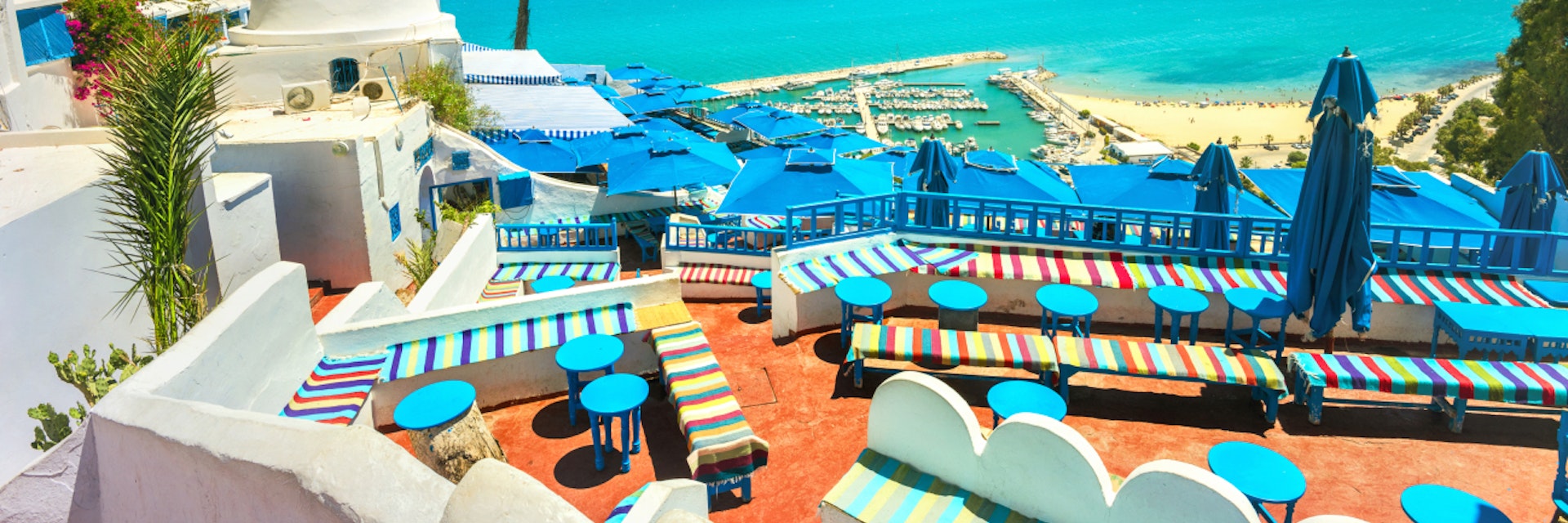
Shutterstock / Valery Bareta
It may be but a slim wedge of North Africa’s vast horizontal expanse, but Tunisia has enough history and diverse natural beauty to pack a country many times its size. With a balmy, sand-fringed Mediterranean coast, scented with jasmine and sea breezes, and where the fish on your plate is always fresh, Tunisia is prime territory for a straightforward sun-sand-and-sea holiday. But beyond the beaches, it’s a thrilling, underrated destination where distinct cultures and incredible extremes of landscape – forested coastlines, Saharan sand seas in the south – can be explored in just a few days.

Your next trip starts here
Go from dreaming to planning with trip planning options made to help you craft your ideal itinerary.
Attractions
Must-see attractions.
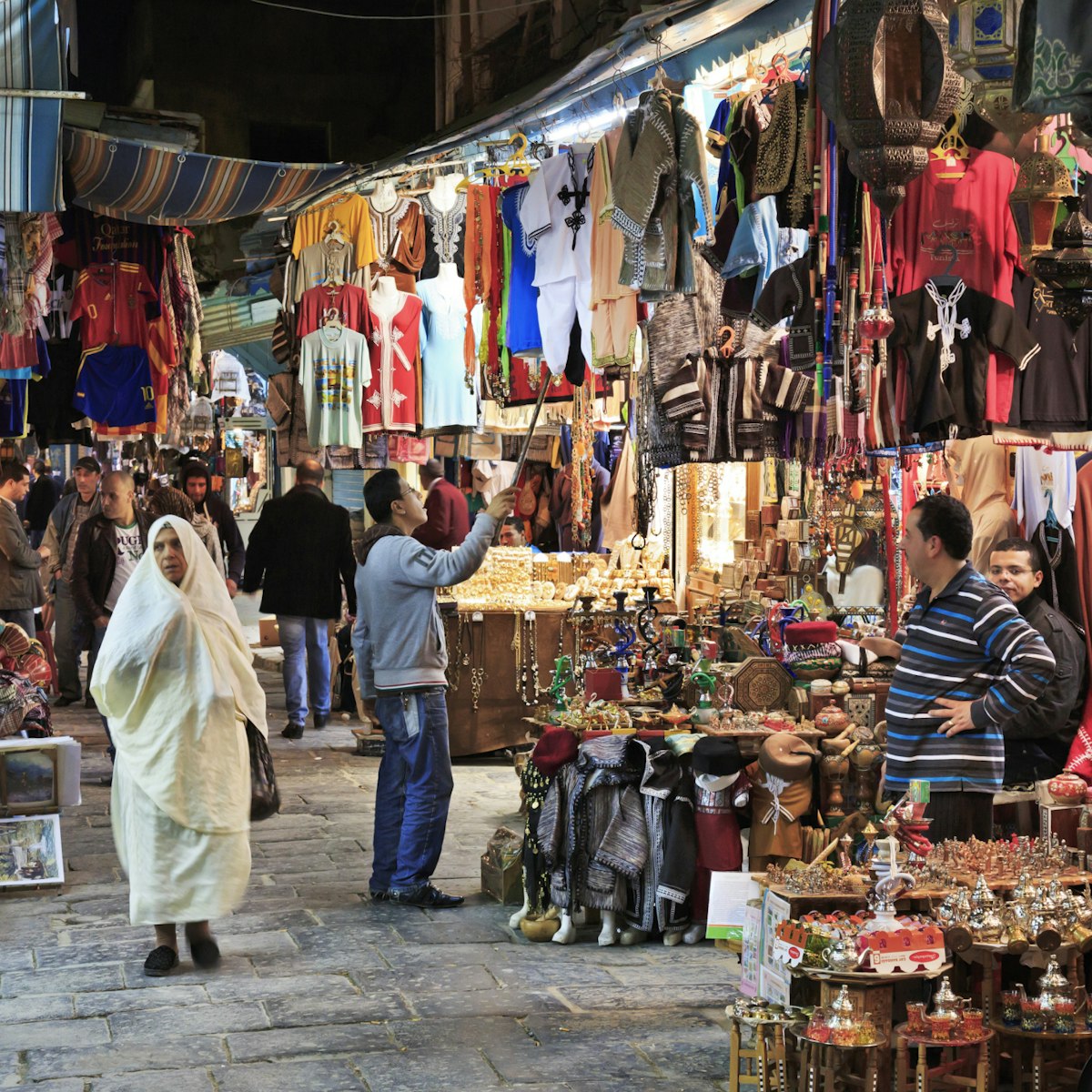
This sprawling maze of ancient streets and alleyways is one of the most impressive medieval medinas in North Africa and one of Tunisia's great treasures…
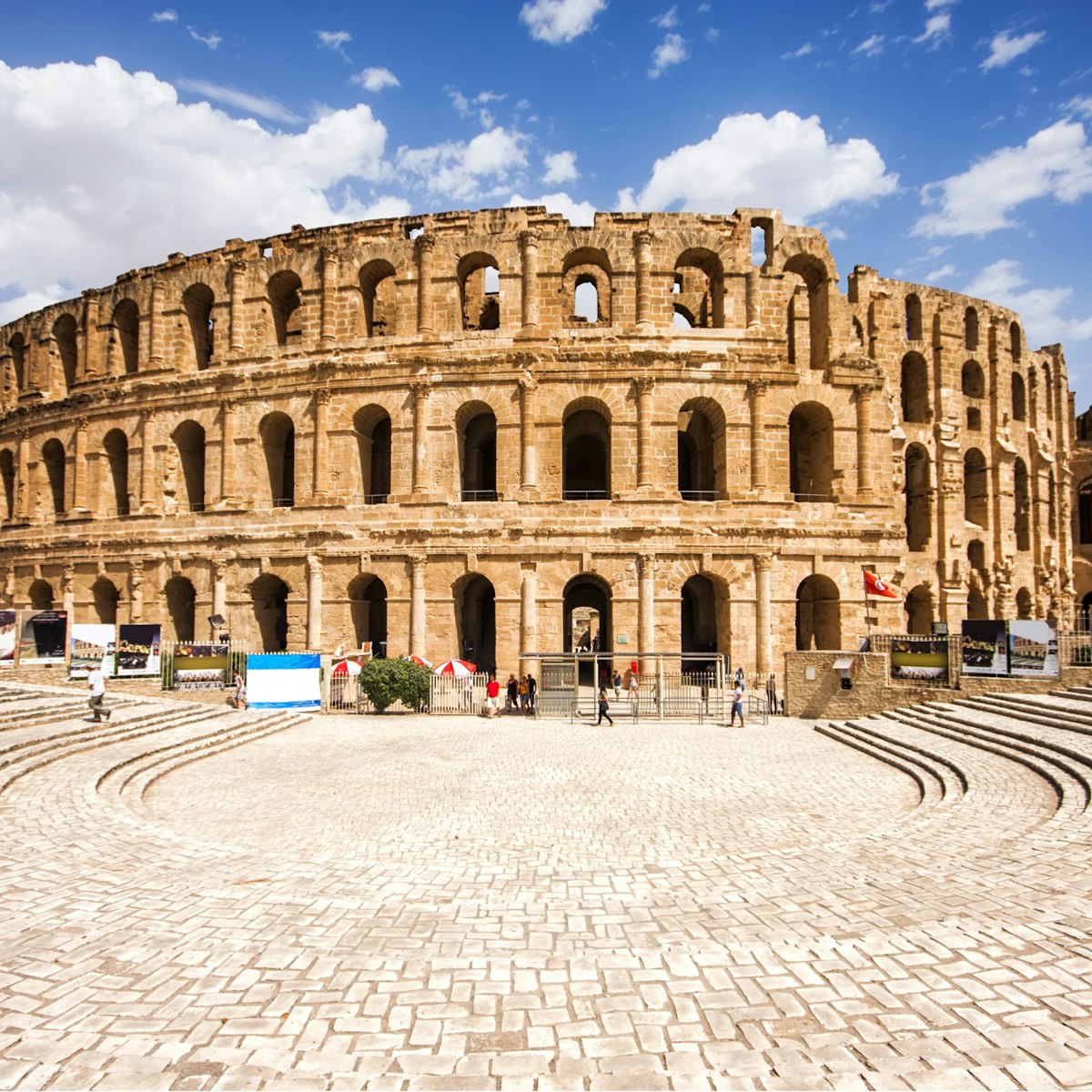
El Jem Amphitheatre
This Unesco World Heritage–listed colosseum was the second-largest in the Roman world (after Rome's); it was 149m long by 124m wide, with three tiers of…
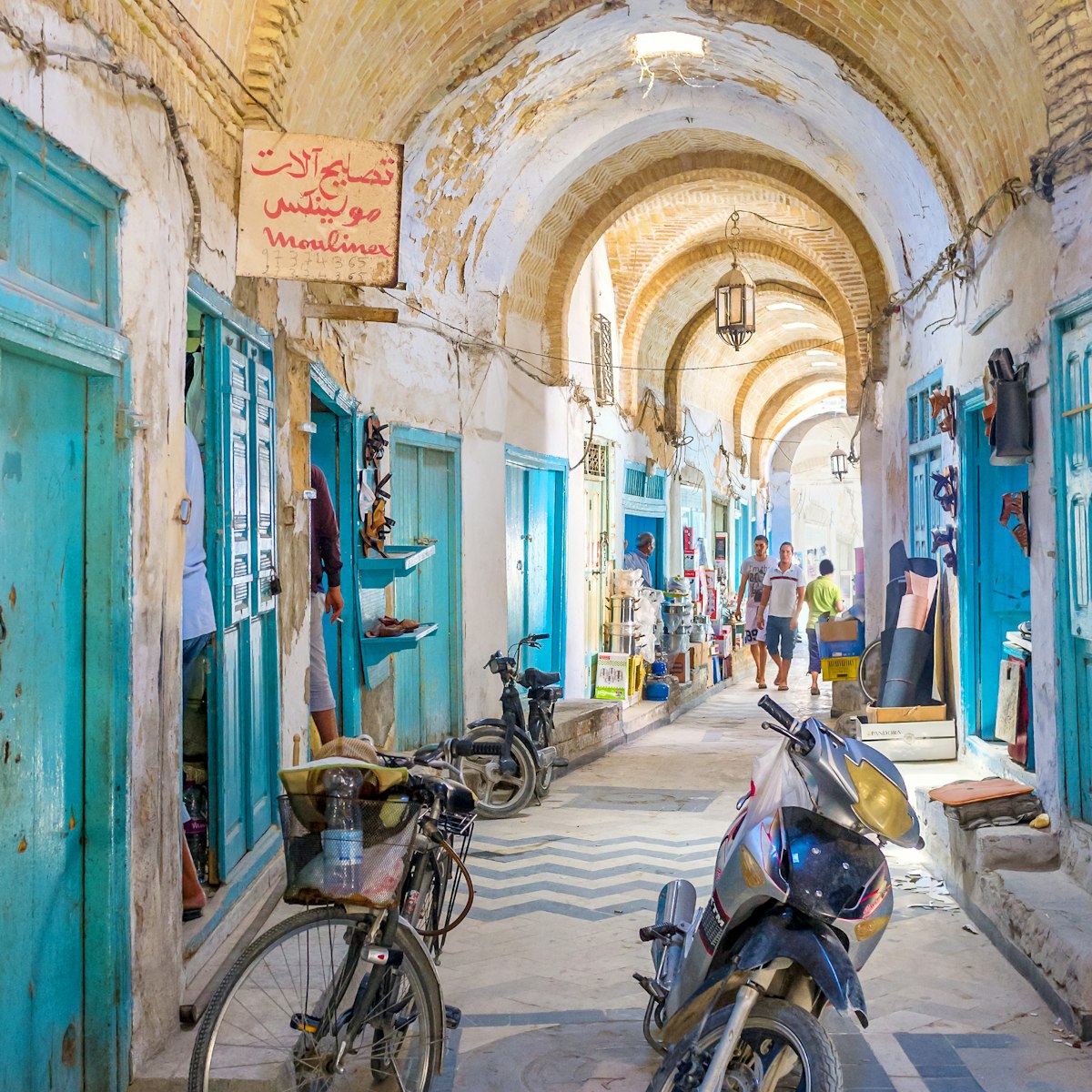
Kairouan’s medina feels like it ebbs and flows to a different rhythm to modern Tunisia. Long protected by its monumental walls and babs (gates), most of…

Sousse Archaeological Museum
Located inside the 11th-century kasbah, this museum showcases an extraordinary collection of 2nd- and 3rd-century Roman mosaics, one of the best in the…
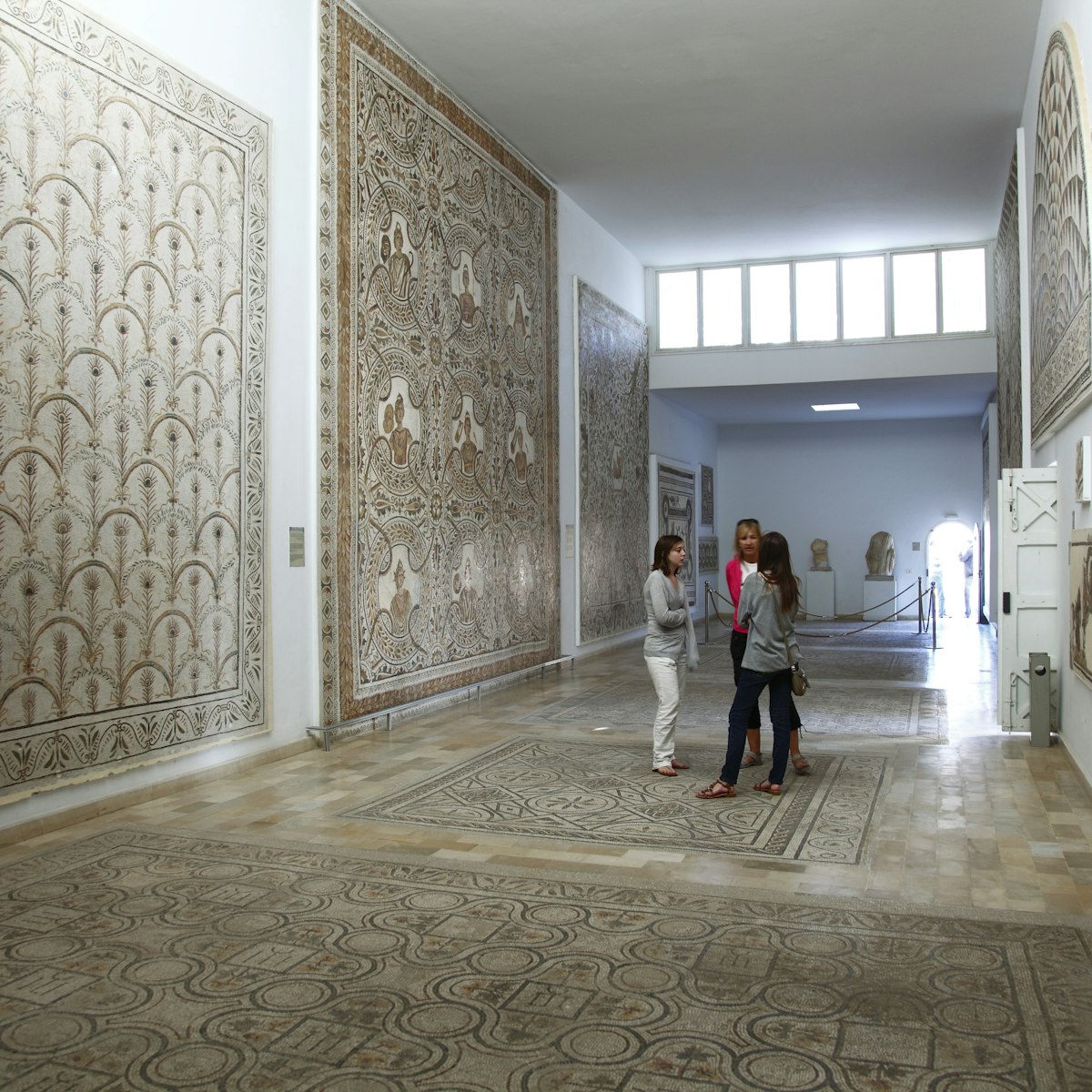
Archaeological Museum
A 1km walk from the El Jem Amphitheatre (follow the signs), this museum showcases an exceptional collection of Roman mosaics. All are richly coloured, in…
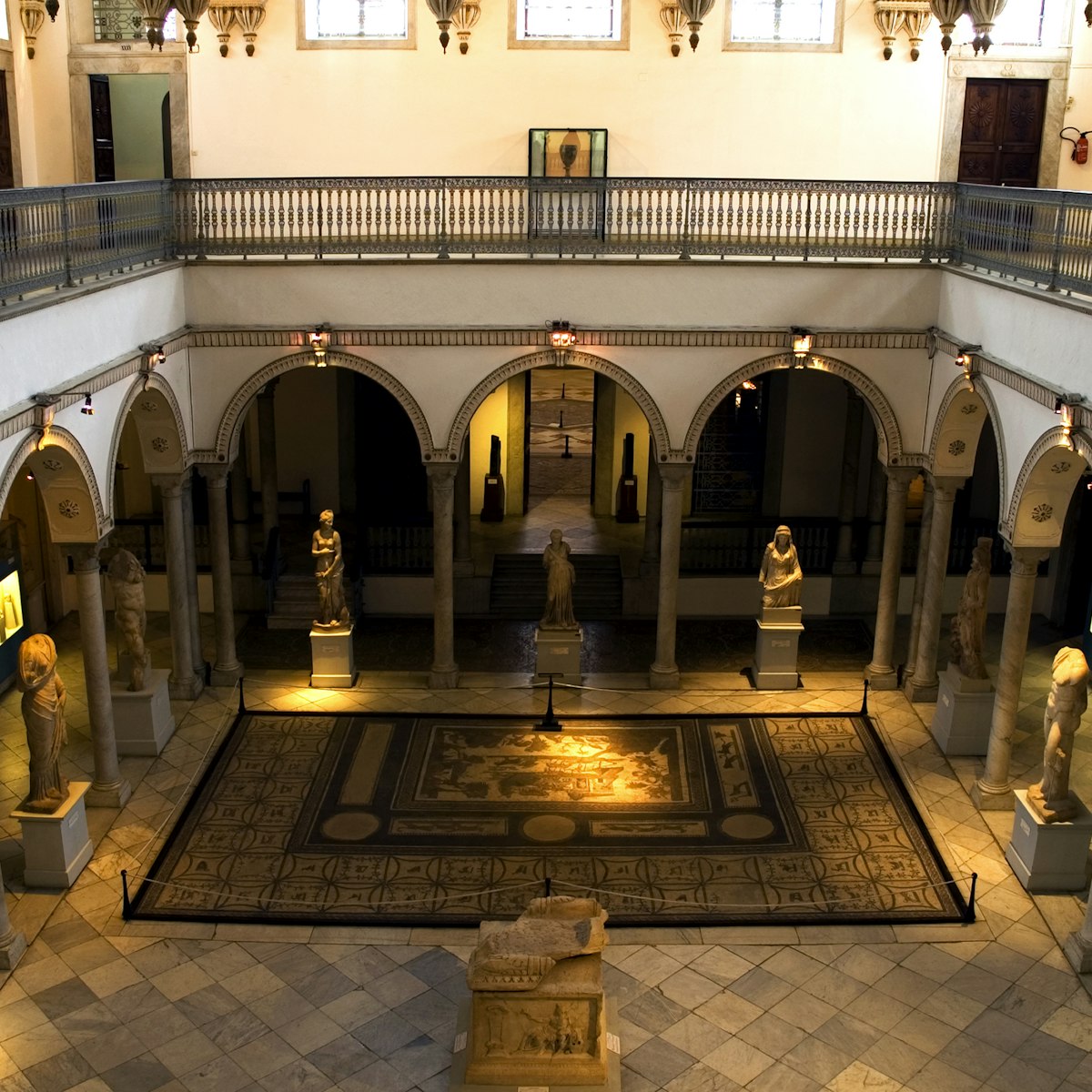
Bardo Museum
The main draw at the Tunisia's top museum is its magnificent collection of Roman mosaics. These provide a vibrant and fascinating portrait of ancient…
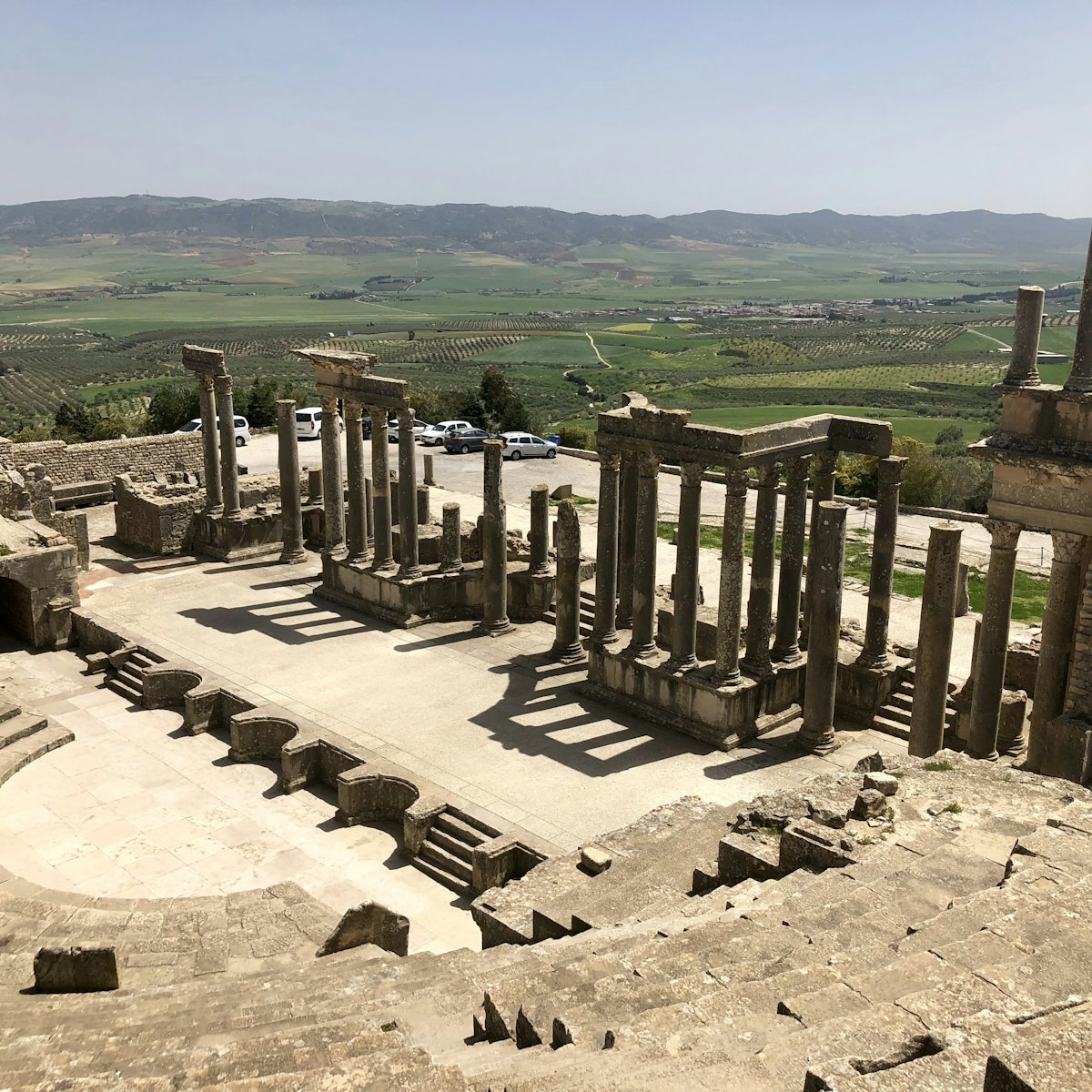
Arguably the most magnificent Roman site in Africa, Dougga’s ancient remains – a Unesco World Heritage site since 1997 – are startlingly complete, giving…
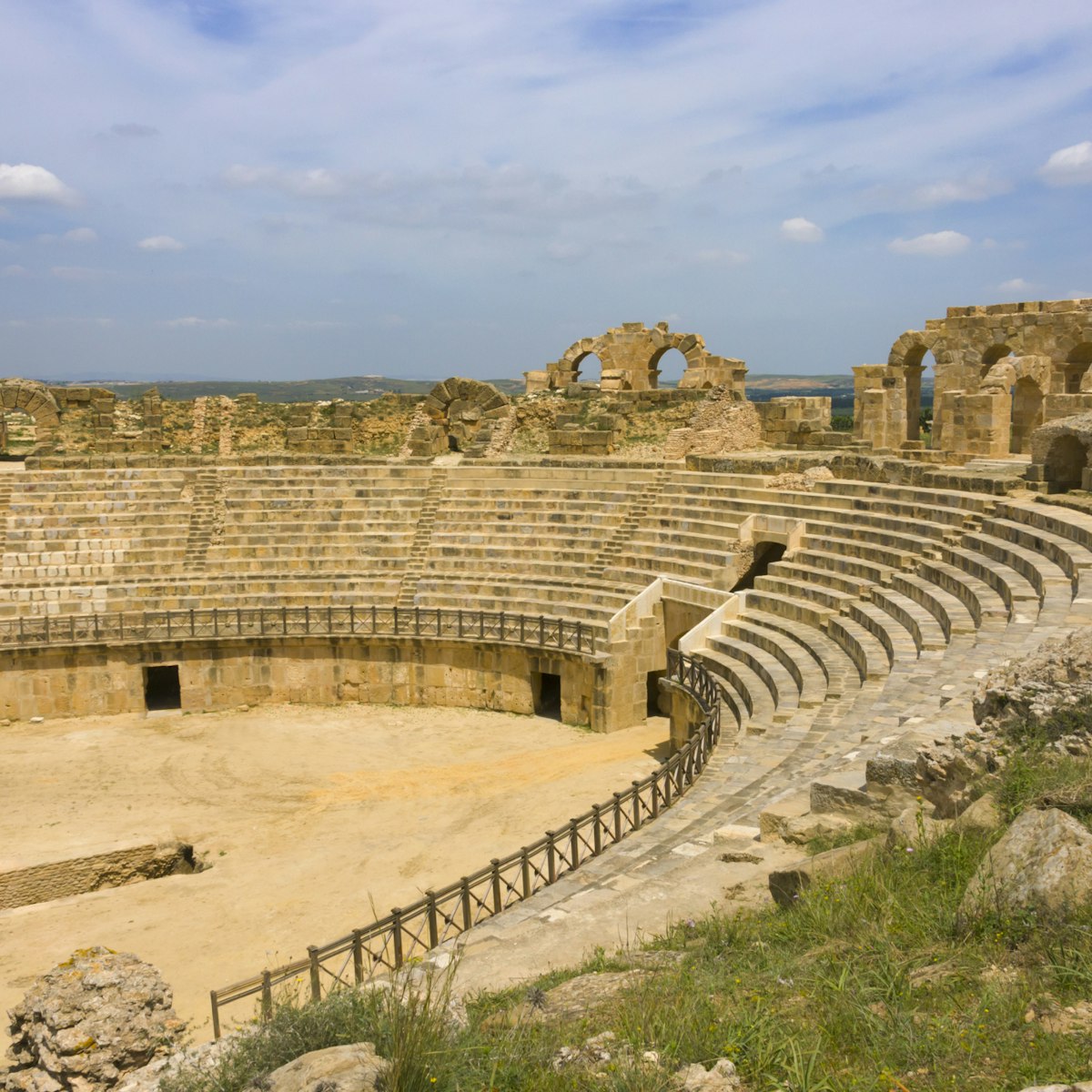
On the cultivated amber slopes of Mt Mekrima, the fascinating but little-visited ruins of ancient Uthina are the remains of one of the Roman Empire's…
Latest stories from Tunisia
Filter by interest:
- All Interests
- Adventure Travel
- Art & Culture
- Beaches, Coasts & Islands
- Food & Drink
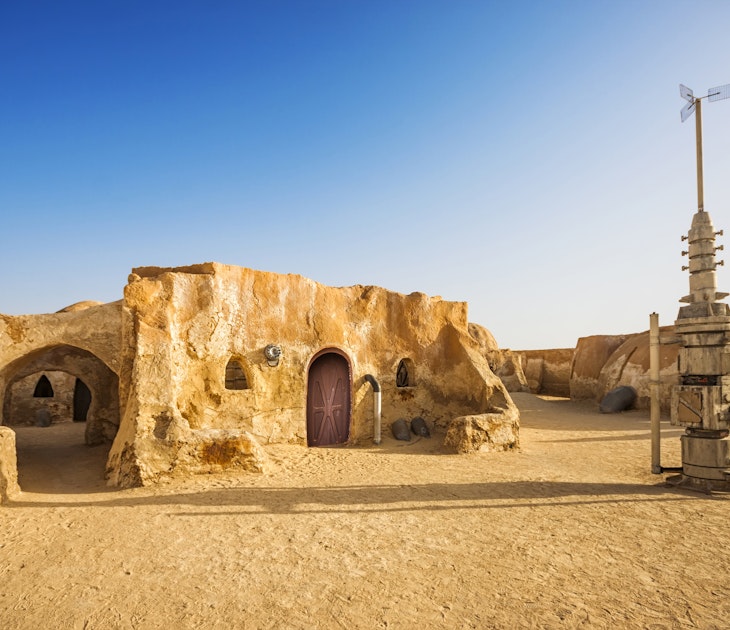
Dec 7, 2020 • 2 min read
It will cover more than 15 sites across 10 regions and will highlight films including Star Wars, Monty Python: The Life of Brian and Indiana Jones.
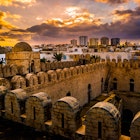
Jun 12, 2020 • 1 min read
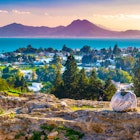
Nov 20, 2019 • 6 min read
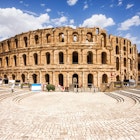
Nov 13, 2019 • 5 min read
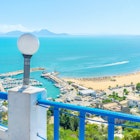
Apr 17, 2019 • 6 min read
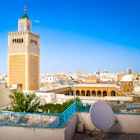
Mar 14, 2019 • 7 min read

Feb 22, 2019 • 5 min read
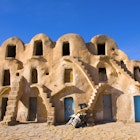
Feb 19, 2019 • 8 min read

Jan 4, 2019 • 5 min read
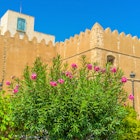
Nov 8, 2018 • 6 min read
in partnership with getyourguide
Book popular activities in Tunisia
Purchase our award-winning guidebooks.
Get to the heart of Tunisia with one of our in-depth, award-winning guidebooks, covering maps, itineraries, and expert guidance.
Tunisia and beyond
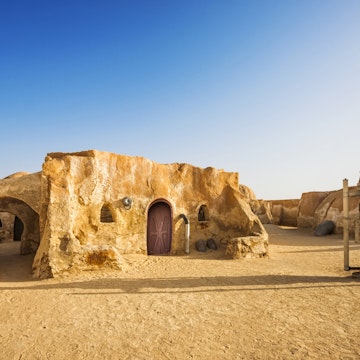
Tunisia travel guide. Expert advice and tourist information covering Tunis, Sahara Desert, Djerba, Star Wars pilgrimages, Chott el Djerid salt lake, Sidi Bou Said, Kairouan, archaeological and heritage sites (Roman amphitheatre of El Jem, Ancient Carthage, Ribat of Monastir fort), museums, beaches, camel trekking, kitesurfing, wildlife, nightlife
Related products

Leopard’s Tale
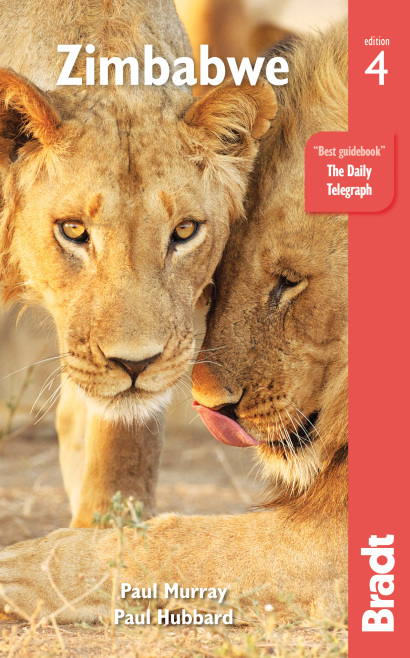
Sao Tome & Principe
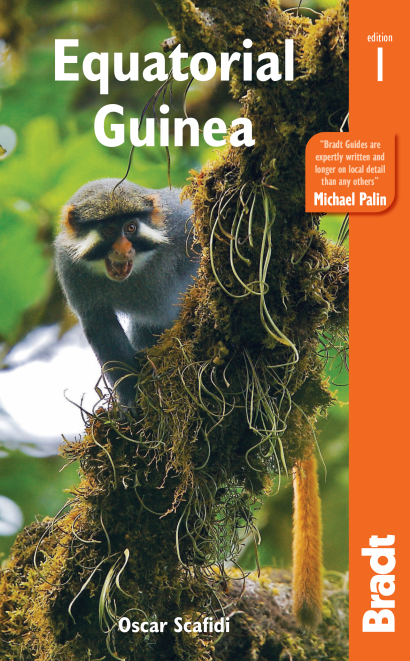
Equatorial Guinea
About this book.
Written by long-term resident, adventurer and experienced travel writer Oscar Scafidi, this brand new Bradt publication is the most up-to-date, comprehensive travel guidebook to Tunisia produced by a mainstream publisher. Taking account of this North African country’s recent political and social flux, and covering each of the nation’s 24 governorates, the book’s listings for hotels, restaurants and activities cater for all types of travellers and budgets. Complemented by 80 detailed maps and advice on navigating bureaucracy, this guide provides all the practical information you need to visit or explore here. The birthplace of the Arab Spring in 2010, Tunisia is readily accessible from European cities. From relaxing on Mediterranean beaches to camel-trekking or quad-biking in the Sahara Desert and marvelling at the moonscapes of Chott el Djerid salt lake, this fascinating nation crams much excitement and interest into a small area. In the 2,000-year-old capital of Tunis, originally a Berber settlement, you can haggle in the ancient Medina, browse artefacts at the Bardo National Museum or enjoy fresh seafood at waterfront restaurants. Archaeology afficionados will hardly know where to begin in Africa’s fourth-richest country for UNESCO World Heritage Sites: the remnants of Ancient Carthage, perhaps, or superbly preserved Roman ruins, such as the world’s second-largest amphitheatre of El Jem? Djerba, where Berbers, Muslims and the world’s oldest Jewish community have co-existed for centuries, is a world-renowned kitesurfer’s paradise. Sunseekers have over 1,000km of coastline on which to bask – why not sip cocktails at the upmarket resort of Gammarth, just north of Tunis – while hedonists can party at a mammoth 30-hour rave in the desert at Ong Jmal. Meanwhile, film buffs can make pilgrimages to sets used in the Star Wars movies or explore canyons used by Steven Spielberg’ for an Indiana Jones film, and culture vultures can visit Islamic sites such as the Ribat of Monastir fort or 7th-century city of Kairouan. With a language appendix covering Tunisian Arabic and French, detailed context that helps visitors travel with awareness and sensitivity, and in-depth travel information, Bradt’s Tunisia is an indispensable practical companion to exploring this exciting country.
About the Author
Oscar Scafidi (www.youtube.com/c/ScafidiTravels) lived in Tunisia for three years while writing Bradt’s first guide to the country, criss-crossing the country for over 30,000km in his 4×4 (and only getting stuck in the Sahara desert once!). His Tunisia-focused YouTube channel features over a hundred videos showcasing the nation’s most exciting tourism destinations, and he has worked with USAID and the Tunisian Ministry of Tourism on sustainable tourism development projects in the country. A travel writer, risk consultant and international educator, he has lived, worked and travelled in over thirty African countries including Tunisia, Sudan, Angola and Madagascar. Such experiences enabled him to author Bradt’s guidebooks to Angola and Equatorial Guinea, and write about intriguing destinations such as Somalia, Afghanistan, Liberia and Timor Leste. Scafidi has also written a travel narrative, Kayak the Kwanza, about completing the first source-to-sea navigation of Angola’s longest river, a journey exceeding 1,300km.
Additional Information
PART 1 GENERAL INFORMATION Chapter 1 Background Information Chapter 2 Practical Information
Part II THE GUIDE Chapter 3 Tunis Governorate Chapter 4 North-East Sub-Region Chapter 5 Centre-East Sub-Region Chapter 6 South-East Sub-Region Chapter 7 South-West Sub-Region Chapter 8 Centre-West Sub-Region Chapter 9 North-West Sub-Region Appendices Language Further information Index
You may also like…
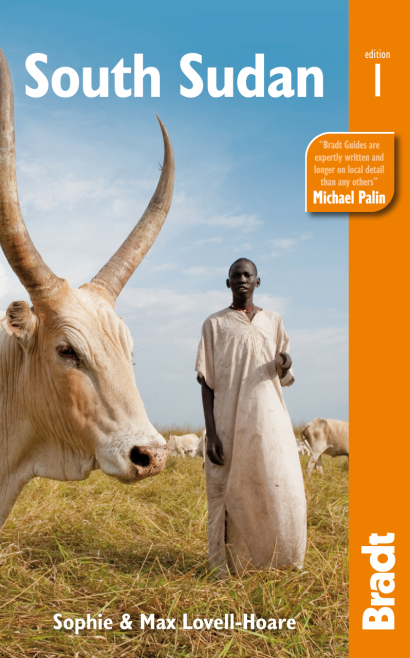
South Sudan
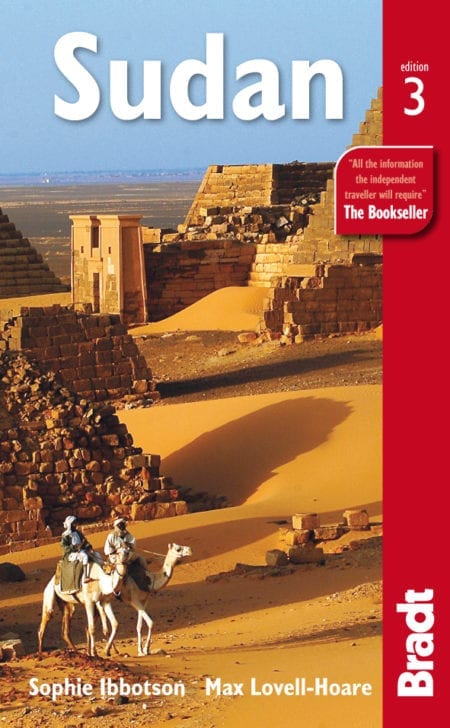
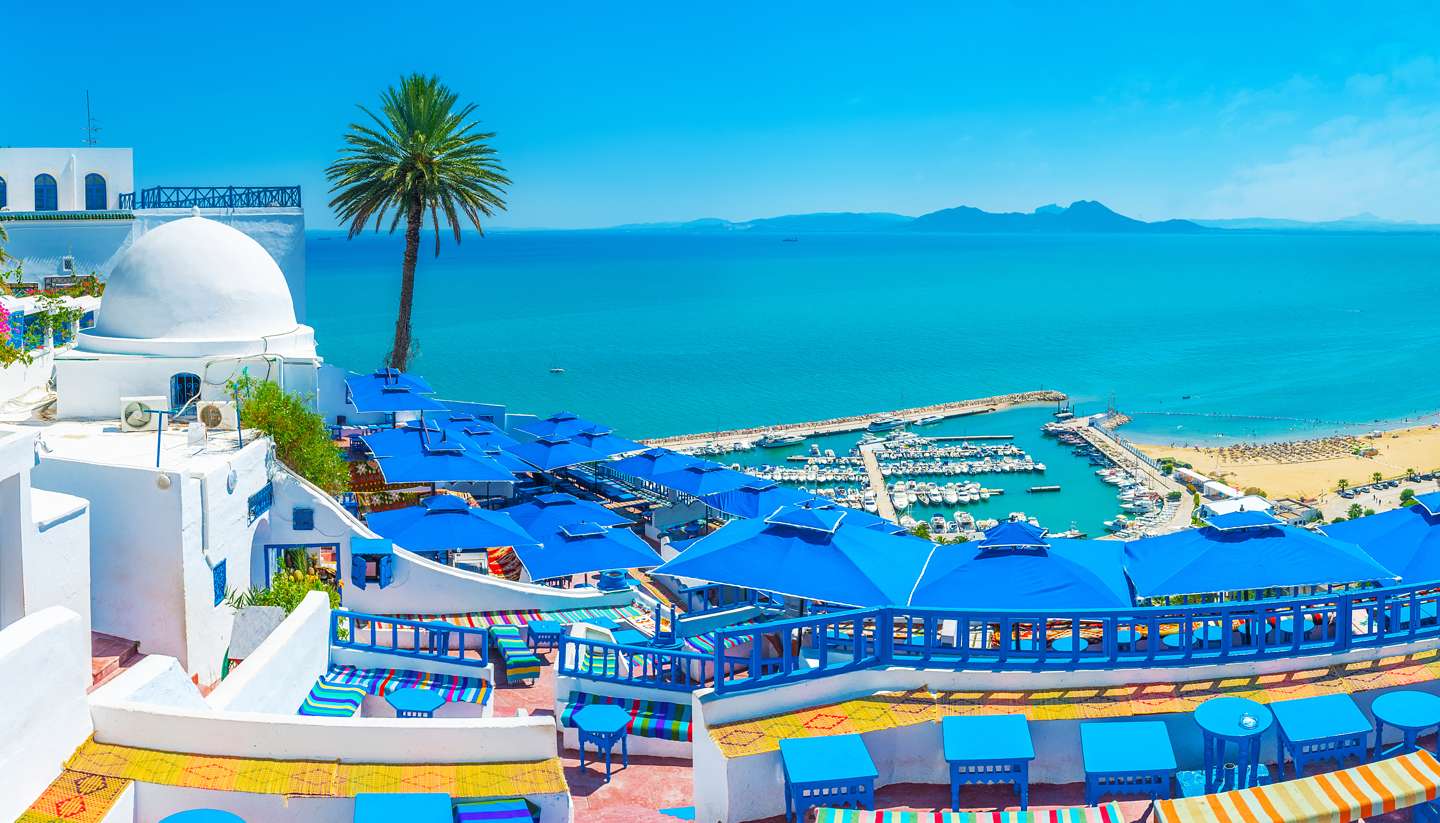
Introducing Tunisia
About tunisia.
- Images of Tunisia
- History, language & culture
- Weather & geography
- Doing business & staying in touch
Plan your trip
- Travel to Tunisia
- Where to stay
While you’re there
- Things to see & do
- Shopping & nightlife
- Food & drink
- Getting around
Before you go
- Passport & visa
- Public Holidays
- Money & duty free
Book your flights
- Tunis Carthage International Airport
- Djerba beaches
- Hammamet beaches
- Port el-Kantaoui beaches
- Sousse beaches
Tunisia travel guide
From broad sweeps of beach overlooked by a tumble of sugar-cube houses, to grand ancient ruins and the vast, rolling dunes of the Sahara, Tunisia encapsulates everything that’s enticing about North Africa.
Lose yourself in the maze of medina alleyways inTunis, explore the Maghreban mosques of Kairouan and stand on the shimmering salt flats of Chott El Jerid. Tuck into freshly baked brik at a bustling street market, pretend to be a Roman gladiator at El Jem’s impressive amphitheatre and hoist yourself onto a camel for a trip into the desert.
Traditionally, sun-seeking tourists came to Tunisia for its beaches – lining the Mediterranean, the long, rambling coastline is impressive. There are also tiny coastal villages where fishermen haul in the day’s catch on quiet beaches and cobblestone streets are lined with blooming bougainvillea.
But Tunisia is so much more than a seaside destination where visitors lounge on the sands all day long. Join the locals at a café after the last notes of the call to prayer have faded, or puff on apple-scented shisha as you watch old men play dominos. Alternatively, get scrubbed and steamed on a marble slab under the tiled domes of a hammam. Or haggle in the souks, sipping glasses of mint tea while you barter for the best price. Suffice to say the age-old traditions of Tunisian life are still alive and well.
Regarded as one of North Africa’s most politically moderate countries, Tunisia balances traditional Islamic culture with modern influences. Beyond the ancient medina, the cities are full of restaurants, cafes and bars, many of which have a European air about them.
Though tourism took a hit in recent years after a number of suicide attacks on tourists and the authority. The Tunisian government is working to improve security in major cities and tourist resorts.
163,610 sq km (63,170 sq miles).
11,375,220 (UN estimate 2016).
67.4 per sq km.
President Kaïs Saïed since 2019.
Ahmed Hachani since August 2023.
Travel Advice
The Foreign, Commonwealth & Development Office (FCDO) advises against all travel to:
- the Chaambi Mountains National Park and the designated military operations zones of Mount Salloum, Mount Sammamma and Mount Mghila
- the militarised zone south of the towns of El Borma and Dhehiba
- within 20km of the rest of the Libya border area north of Dhehiba
- the town of Ben Guerdane and immediate surrounding area
In addition and for security reasons, the FCDO advises against all but essential travel to:
- within 75km of the Libyan border, including Remada, El Borma and the town of Zarzis
- the governorate of Kasserine, including the town of Sbeitla
- within 10km of the border with Algeria south of Kasserine governorate
- within 30km of the border in El Kef and Jendouba governorates south of the town of Jendouba, including the archaeological site of Chemtou
- areas north and west of the town of Ghardimaou in Jendouba governorate, including El Feidja National Park
- within 10km of Mount Mghila
- Mount Orbata
Military activity in the region
On 13 April 2024 Iran carried out military action against Israel.
On 19 April, there have been reports of explosions in Iran, and unconfirmed reports of explosions in Syria and Iraq.
Monitor this travel advice and other media as the situation is changing fast. Follow and contact FCDO travel on Twitter , Facebook and Instagram . You can also get email notifications when this travel advice is updated.
Read FCDO advice on how to deal with a crisis overseas.
Before you travel, check the ‘Entry requirements’ section for Tunisia’s current entry restrictions and requirements. These may change with little warning. Monitor this advice for the latest updates and stay in contact with your travel provider.
It is more important than ever to get travel insurance and check it provides sufficient cover. See the FCDO’s guidance on foreign travel insurance .
Since 1 July, the city of Sfax has witnessed several days of civil unrest, including reports of injuries, arrests and one death, related to heightened tensions between local residents and migrants from sub-Saharan Africa. Security forces in Sfax and the region are on high alert. Further disturbances could occur with little or no warning and impact other Black people perceived to be of sub-Saharan African origin.
Terrorists are still very likely to try to carry out further attacks in Tunisia, including against UK and Western interests. There have been a number of self-initiated attacks in 2023. On 3 July a National Guard officer was attacked with a knife in the La Goulette area of Tunis.
In June, a police officer was stabbed and killed outside the Brazilian Embassy in Tunis. In May, a fatal shooting took place on the island of Djerba, near to where Tunisian and international visitors were taking part in the annual Jewish pilgrimage at the El Ghriba synagogue. Three security personnel and two civilians were killed, and ten people were injured.
Security forces remain on a high state of alert in Tunis and other places. You should be vigilant at all times, including around religious sites and festivals. Crowded areas, government installations, transportation networks, businesses with Western interests, and areas where foreign nationals and tourists are known to gather may be at higher risk of attack. You should be particularly vigilant in these areas and follow any specific advice of the local security authorities. In more remote areas of the country, including tourist sites in southern Tunisia, security forces’ response times to an incident may vary. Follow the advice of the Tunisian security authorities and your travel company if you have one. See Terrorism
Parliamentary elections took place in December 2022 and January 2023 and the new Parliament opened in March 2023.
Protests occur in Tunisia with little or no warning, and can sometimes become violent. They usually take place in central areas of Tunis and other major cities, and in the vicinity of government buildings, often but not always on weekends or around prominent national anniversary dates. In response to the current situation in Israel and the Occupied Palestinian Territories, peaceful demonstrations have occurred in some Tunisian cities, including outside some Western embassies. Avoid all protests, and move away from gathered crowds. Keep up to date with developments through the media and follow the instructions given by the Tunisian authorities as well as your hotel and tour operator, if you have one. See Political and security situation
You can contact the emergency services by calling:
- 197 (police - when in cities and towns)
- 193 (national guard - when in rural areas or small villages)
- 190 (ambulance)
- 198 (civil protection - for assistance at incidents, such as car accidents, to provide medical assistance and response to fire).
If you’re abroad and you need emergency help from the UK government, contact the nearest British embassy, consulate or high commission . Consular support may be limited in parts of Tunisia.
Coronavirus travel health
Check the latest information on risk from COVID-19 for Tunisia on the TravelHealthPro website
See the TravelHealthPro website for For COVID-19 general advice for travellers .
You should contact local authorities for information on testing facilities. A test can be organised on the Ministry of Health webpage (available in French only).
Entry and borders
See Entry requirements to find out what you will need to do when you arrive in Tunisia.
Be prepared for your plans to change
No travel is risk-free as a result of COVID-19. Countries may restrict travel or bring in new rules at short notice, for example due to a new COVID-19 variant. Check with your travel company or airline for any transport changes which may delay your journey home.
If you test positive for COVID-19, you may need to stay where you are until you test negative. You may also need to seek treatment there.
Plan ahead and make sure you:
- can access money
- understand what your insurance will cover
- can make arrangements to extend your stay and be away for longer than planned
Travel in Tunisia
Travellers are advised to check the status of their flights before arriving at the airport.
Healthcare in Tunisia
For contact details for English speaking doctors visit our list of healthcare providers .
Your emotional and mental wellbeing is important. Read guidance on how to look after your mental wellbeing and mental health .
View Health for further details on healthcare in Tunisia.
For information on financial support you can access whilst abroad, visit our financial assistance guidance .
Political situation
A state of emergency is in effect in Tunisia, imposed after a suicide attack on a police bus in 2015. It has been extended a number of times, most recently in February 2022. The state of emergency means that there continues to be a heightened countrywide security presence, including security checkpoints in and around some cities and tourists resorts, as well as on main roads and at borders.
President Kais Saied ratified a new constitution in 2022, following the suspension of parliament in 2021 and its dissolution in 2022. Parliamentary elections took place in December 2022 and January 2023. The new Parliament re-opened in March 2023.
Demonstrations, Protests and Strikes
Demonstrations and protests occur in Tunisia quite often with little or no warning. They can sometimes become violent. Larger demonstrations and protests usually take place in central areas of Tunis and other major cities, and in the vicinity of government buildings. Demonstrations can be called at short notice, and are often at weekends. There are certain prominent national dates on which demonstrations traditionally occur. In response to the current situation in Israel and the Occupied Palestinian Territories, peaceful demonstrations have occurred in some Tunisian cities, including outside some Western embassies.
Avoid demonstrations and protests wherever possible and follow the advice of the local authorities. Some demonstrations in the past have turned violent. If you do find yourself unexpectedly near a demonstration or protest, move away from the area.
You should keep up to date with developments through the media and follow the instructions given by the Tunisian authorities as well as your hotel and tour operator, if you have one.
Strikes take place in Tunisia periodically, sometimes called at short notice that can cause disruption to public transport (including air travel and ports), as well as road networks and borders.
Curfews can be imposed at short notice in response to events. You should follow the guidance of local authorities when travelling around the country.
Local travel
You should check the latest guidance of local authorities and subscribe to the Travel Advice updates before moving around the country, to be aware of local events taking place and how that might impact your internal travel.
Mobile phone coverage can be patchy or unavailable in more remote areas, particularly in the south of Tunisia. Check before travelling, and/or consider downloading maps for offline use.
Some online or GPS maps may not be accurate in remote areas.
Border areas
There is a heightened Tunisian security presence at the borders with Libya and Algeria due to cross border terrorist activity and fighting in Libya. Border crossings are sometimes closed temporarily without notice. Some violent incidents have occurred.
See FCDO travel advice for Libya and Algeria .
Chaambi Mountains
The FCDO advise against all travel to the Chaambi Mountains National Park area, as well as Mount Salloum, Mount Sammamma, and Mount Mghila (all designated military operations zones). The FCDO advise against all but essential travel to all other areas within 10km of Mount Mghila.
Tunisian security forces continue to conduct operations. Security personnel have been killed and severely wounded in attacks and by booby-trap explosives in these areas.
Incidents of mugging, pick pocketing, bag-snatching and petty theft occur. Take sensible precautions to protect yourself and your belongings. Where possible, avoid carrying all your important documents, money and other valuables in the same bag. You should remain alert to potential confidence tricks.
Personal attacks are rare but they do occur.
There have been several recent reports of assaults and theft in Tunis. Harassment of foreign women in Tunis is also reported to have increased. These have occurred in a variety of areas, including busy public places at night, and quieter public parks and beaches during the daytime.
You are advised to maintain at least the same level of personal security awareness as in the UK and take care when walking or travelling alone.
Security screenings
Some British nationals of South Asian descent have been subject to additional screening or refused entry by immigration authorities at airports, including Enfidha, on alleged security grounds. See entry requirements for further details.
Discrimination and harassment
Though not commonly experienced by visitors, racial discrimination may be an issue, particularly in public places. Following public comments on irregular migration in February 2023, there was a temporary spike in verbal and physical assaults against those thought to be sub-Saharan African migrants. There have also been recent anti-migrant protests in certain coastal towns, including Sfax.
Road travel
You can drive in Tunisia with a valid International Driving Permit (IDP) for up to one year. You will need to have a 1968 IDP to drive in Tunisia. 1949 IDPs previously issued by the UK may no longer be accepted in Tunisia. You will not be able to buy an IDP outside the UK, so get one before you travel.
If you’re living in Tunisia, it may be possible to drive on a UK licence for up to one year, providing that you meet a number of conditions and submit an application to the Tunisian Ministry of Transport. Please check the conditions and application process with the Tunisian Ministry of Transport . For any longer periods, you will need to apply for a Tunisian driving licence.
A green card is proof that you have vehicle insurance when driving abroad. You need to carry a green card to prove you have the minimum insurance cover in Tunisia.
Driving standards can be erratic. There is very little lane discipline and often confusion about the right of way, especially at roundabouts. There are few pedestrian crossings and traffic lights are sometimes ignored. Take care when driving in towns as pedestrians tend to walk on the roads and have the right of way. Take particular care when crossing roads on foot, even where there is a signal allowing you to do so.
Roads are of a reasonable standard although large potholes can appear quickly following heavy rain, and most towns and villages have large speed bumps.
Driving at night can be hazardous particularly out of towns due to a lack of road lighting, unlighted vehicles, and animals on the roads in rural areas. Exercise caution and slow down when approaching sand drifts on roads.
You may come across military or police security checks. If you do, approach slowly, don’t cross boundaries without permission and be prepared to present photo ID if asked.
Demonstrations can occasionally affect road travel.
You should check the availability of fuelling stations before travelling long distances in remote areas.
Rail travel
Rail travel is generally safe, although safety standards tend to be lower than those in the UK. There is a risk of petty crime on trains.
Terrorists are very likely to try to carry out attacks in Tunisia and there have been a number of attacks in recent years.
There is a high threat of terrorist attack globally affecting UK interests and British nationals, including from groups and individuals who view the UK and British nationals as targets. You should remain vigilant at all times.
UK Counter Terrorism Policing has information and advice on staying safe abroad and what to do in the event of a terrorist attack. Find out how to reduce your risk from terrorism while abroad.
The main terrorist threat is from Al Qaeda in the Islamic Maghreb and Libya-based extremists with links to Daesh (formerly referred to as ISIL). Despite some improvements in border security, Tunisia has a porous border with Libya, where there is a continuing conflict, an absence of security, and where Islamist terrorist groups operate. Tunisian security forces have repeatedly been targeted in terrorist-related incidents, mainly in border areas including in the Chaambi Mountains.
A nationwide state of emergency, first imposed after a suicide attack on a police bus in November 2015, remains in place. Follow the advice of local security officials, including in and around religious sites.
Crowded areas, government installations, transportation networks, businesses with Western interests, and areas where foreign nationals and tourists are known to gather may be at higher risk of attack. You should follow any specific advice of the local security authorities. In more remote areas of the country, including tourist sites in southern Tunisia, security forces’ response times to an incident may vary.
There’s a heightened risk of terrorism against aviation interests. Additional security measures have been in place on flights departing from Tunisia to the UK since March 2017. You should co-operate fully with security officials.
The Tunisian authorities regularly report that they have disrupted planned attacks and terrorist cells and made arrests. The Tunisian authorities have improved security in tourist resorts and their ability to respond to a terrorist incident. Tunisian security forces have also improved and are better prepared to tackle terrorist threats than they were at the time of the 2015 attacks. But further attacks remain likely, including in places visited by foreigners such as tourist resorts. Attacks may be carried out by individuals unknown to the authorities, whose actions may be inspired by terrorist groups. There have been a number of self-initiated attacks in recent months.
Recent incidents include:
- on 3 July a National Guard officer was stabbed in a knife attack in the Goulette area of Tunis.
in May 2023, a fatal shooting took place on the island of Djerba, near where Tunisian and international visitors were taking part in the annual Jewish pilgrimage at the El Ghriba synagogue. Three security personnel and two civilians were killed, and ten people were injured.
in June 2022, two security officers were injured in a knife attack by an assailant near a synagogue in central Tunis.
in January 2022, January three passengers on a tram at Bab Alioua station in Tunis were injured after a knife attack.
in November 2021, police shot and wounded an assailant who attacked them with a knife and axe in front of the Interior Ministry on Habib Bourguiba avenue, central Tunis.
in September 2020, two officers of Tunisia’s National Guard were attacked by three assailants in Sousse. Security forces later killed all three attackers.
in March 2020, a suicide bombing targeting a police patrol near the US Embassy in Tunis killed one police officer and injured four more, as well as a civilian.
in October 2019, a French national was stabbed to death in Zarzouna, northern Tunisia, by an individual who then attacked a Tunisian soldier.
in June 2019, there were 2 suicide bombings targeting security personnel in central Tunis; 3 people, including the perpetrators, were killed.
in October 2018, 15 security personnel and 5 civilians were injured in a bombing on Avenue Habib Bourguiba in central Tunis.
in July 2018, militants attacked security forces near Ghardimaou, close to the Algerian border. A number of Tunisian National Guard officers were killed. This follows separate media reports in early July 2018 of Tunisian security forces disrupting a terrorist group in Hammamet.
in June 2015, 38 foreign tourists were killed, including 30 British nationals, in a terrorist attack at Port El Kantaoui near Sousse.
- in March 2015, 21 tourists were killed, including a British national, in a terrorist attack at the Bardo Museum in the centre of Tunis.
There is a threat of kidnapping by groups operating in North Africa, particularly from Libya, Mauritania and groups originating in the Sahel. This includes Al Qaeda in the Islamic Maghreb (AQ-IM) and Daesh-affiliated groups, who may travel across the region’s porous border. There is a heightened risk of kidnap in border and remote desert areas of North Africa. Terrorist groups have kidnapped foreigners, government officials and civilians in the region for financial gain and for political leverage. Further kidnaps are likely.
Those engaged in tourism, humanitarian aid work, journalism or business sectors are viewed as legitimate targets. If you’re kidnapped, the reason for your presence is unlikely to serve as a protection or secure your safe release.
The long-standing policy of the British government is not to make substantive concessions to hostage takers. The British government considers that paying ransoms and releasing prisoners increases the risk of further hostage taking. The Terrorism Act (2000) also makes payments to terrorists illegal.
Local laws reflect the fact that Tunisia is an Islamic country. Respect local traditions, customs, laws and religions at all times and be aware of your actions to ensure that they don’t offend, especially during the holy month of Ramadan or if you intend to visit religious areas.
Dress codes
In the coastal holiday resorts the dress code is very much like any European city or tourist area, although topless sunbathing on beaches may cause offence. If you are visiting religious sites or more remote areas of Tunisia, you should dress more modestly.
Possession, use and trafficking of controlled drugs are all serious criminal offences. The possession of even a small amount of ‘soft’ drugs could result in a prison term.
Exporting antiquities
You should get permission from Customs authorities before removing antiquities from Tunisia. Failure to get permission could result in lengthy delays on departure, a fine and/or imprisonment.
Carrying I.D.
Carry a form of photo ID at all times (for example a copy of your passport) and be prepared to show this to uniformed security officials if asked to do so.
Buying property
British nationals wishing to buy property in Tunisia have often been advised to do so through a Tunisian ‘friend’ on the basis that it is illegal for foreign nationals to purchase property in Tunisia. If you are considering purchasing property in Tunisia, you should consult a local lawyer who will be best placed to offer advice. Don’t make private arrangements, which may be illegal and could result in large financial loss.
Homosexuality is a criminal offence in Tunisia. See our information and advice page for the LGBT+ community before you travel.
Photography and drones
Do not take photographs near sensitive political or military sites.
Any drones brought to Tunisia without prior permission will be confiscated by the Tunisian authorities on arrival in the country and stored until the owner’s departure. Ownership of drones is licensed and gaining a licence is a lengthy process.
This page has information on travelling to Tunisia.
This page reflects the UK government’s understanding of current rules for people travelling on a full ‘British Citizen’ passport from the UK, for the most common types of travel.
The authorities in Tunisia set and enforce entry rules. If you’re unsure how Tunisia’s entry requirements apply to you, contact its UK embassy, high commission or consulate
All travellers
On arrival in Tunisia, you may be asked to share your contact details and travel information with the authorities.
Evidence of a hotel reservation is required to enter the country, and a small number of visitors have been denied entry into Tunisia, or delayed, for not being able to provide sufficient evidence of accommodation. This policy is not applied uniformly, and in most cases, if asked, an explanation of alternative accommodation arrangements will be accepted.
Some British nationals of South Asian descent have been delayed, temporarily detained, or denied entry into the country by Tunisian immigration authorities at airports. This can cause distress and inconvenience. The British Embassy has raised this issue with Tunisian authorities.
Entry to Tunisia is decided by Tunisian authorities, and the British Embassy cannot override decisions to refuse entry. However, if you have been subject to the above practices and wish to report it to us, contact the Consular team at British Embassy Tunis on +216 71 108 700.
Check your passport and travel documents before you travel
Passport validity.
If you are visiting Tunisia, your passport should be valid for the full duration of your stay. You don’t need any additional period of validity beyond this.
Dual British-Tunisian nationals should enter and leave Tunisia on their Tunisian passports.
Check with your travel provider to make sure your passport and other travel documents meet their requirements.
For stays longer than 90 days, you will need a visa. You should contact the Tunisian Embassy in London for information on how to apply,
If you stay in Tunisia for longer than the authorised period, you will have to pay a fine. This rule may not apply if you are vulnerable or if circumstances oblige you to remain in the country.
If you have a health condition, or you are pregnant, you may need specialist healthcare abroad. Check whether your destination country can provide the healthcare you may need and ensure you have appropriate travel insurance for unexpected medical evacuation or local treatment.
See the Coronavirus travel health and Healthcare sections in the Coronavirus page for COVID-19 health information.
At least 8 weeks before your trip, check the latest country-specific health advice from the National Travel Health Network and Centre (NaTHNaC) on the TravelHealthPro website. Each country-specific page has information on vaccine recommendations, any current health risks or outbreaks, and factsheets with information on staying healthy abroad. Guidance is also available from NHS (Scotland) on the FitForTravel website .
General information on travel vaccinations and a travel health checklist is available on the NHS website. You may then wish to contact your health adviser or pharmacy for advice on other preventive measures and managing any pre-existing medical conditions while you’re abroad.
The legal status and regulation of some medicines prescribed or purchased in the UK can be different in other countries. If you’re travelling with prescription or over-the-counter medicine, read this guidance from NaTHNaC on best practice when travelling with medicines . For further information on the legal status of a specific medicine, you should contact the Tunisian Embassy.
While travel can be enjoyable, it can sometimes be challenging. There are clear links between mental and physical health, so looking after yourself during travel and when abroad is important. Information on travelling with mental health conditions is available in our guidance page . Further information is also available from the National Travel Health Network and Centre (NaTHNaC) .
Medical treatment
There’s no provision for free medical attention for foreign nationals in Tunisia. All doctors’ fees, medication and hospitalisation in private clinics have to be paid for on the spot (and sometimes in advance of treatment). These costs can be quite high. Make sure you have adequate travel health insurance and accessible funds to cover the cost of any medical treatment abroad and repatriation.
If you’re bringing prescription medicines, carry a note from your GP confirming that the medication has been prescribed for an existing condition. If you have any specific concerns about taking certain types of medication with you to Tunisia, contact the Tunisian Embassy in London.
If you need emergency medical assistance during your trip, dial 190 and ask for an ambulance. You should contact your insurance/medical assistance company promptly if you are referred to a medical facility for treatment.
ATMs are widely available. Almost all ATMs will accept Visa cards, and many (including Bank of Tunisia and BIAT) will also accept Maestro cards for cash withdrawals.
UK issued credit and debit cards are accepted in an increasing number of shops, restaurants and hotels, though there can be connectivity problems. In places that do take cards, there can be problems authorising Mastercard purchases. Travellers Cheques are accepted in some hotels but not others.
It is strictly prohibited to take Tunisian dinars out of the country. To exchange any Tunisian dinars left over at the end of your stay into Sterling or other hard currency you will need to show the receipt from the bank where you first withdrew or bought the dinars. Please note that receipts from cash machines are not accepted.
If you’re abroad and you need emergency help from the UK government, contact the nearest British embassy, consulate or high commission . If you need urgent help because something has happened to a friend or relative abroad, contact the FCDO in London on 020 7008 5000 (24 hours).
Foreign travel checklist
Read our foreign travel checklist to help you plan for your trip abroad and stay safe while you’re there.
Travel safety
The FCDO travel advice helps you make your own decisions about foreign travel. Your safety is our main concern, but we can’t provide tailored advice for individual trips. If you’re concerned about whether or not it’s safe for you to travel, you should read the travel advice for the country or territory you’re travelling to, together with information from other sources you’ve identified, before making your own decision on whether to travel. Only you can decide whether it’s safe for you to travel.
When we judge the level of risk to British nationals in a particular place has become unacceptably high, we’ll state on the travel advice page for that country or territory that we advise against all or all but essential travel. Read more about how the FCDO assesses and categorises risk in foreign travel advice .
Our crisis overseas page suggests additional things you can do before and during foreign travel to help you stay safe.
Refunds and cancellations
If you wish to cancel or change a holiday that you’ve booked, you should contact your travel company. The question of refunds and cancellations is a matter for you and your travel company. Travel companies make their own decisions about whether or not to offer customers a refund. Many of them use our travel advice to help them reach these decisions, but we do not instruct travel companies on when they can or can’t offer a refund to their customers.
For more information about your rights if you wish to cancel a holiday, visit the Citizen’s Advice Bureau website . For help resolving problems with a flight booking, visit the website of the Civil Aviation Authority . For questions about travel insurance, contact your insurance provider and if you’re not happy with their response, you can complain to the Financial Ombudsman Service .
Registering your travel details with us
We’re no longer asking people to register with us before travel. Our foreign travel checklist and crisis overseas page suggest things you can do before and during foreign travel to plan your trip and stay safe.
Previous versions of FCDO travel advice
If you’re looking for a previous version of the FCDO travel advice, visit the National Archives website . Versions prior to 2 September 2020 will be archived as FCO travel advice. If you can’t find the page you’re looking for there, send the Travel Advice team a request .
Further help
If you’re a British national and you have a question about travelling abroad that isn’t covered in our foreign travel advice or elsewhere on GOV.UK, you can submit an enquiry , or contact us on Twitter or Facebook . We’re not able to provide tailored advice for specific trips.

Book a Hotel
© Columbus Travel Media Ltd. All rights reserved 2024
- Africa & Middle East
DK Eyewitness Tunisia

Published by DK Eyewitness Travel
Rrp: $17.99, about dk eyewitness tunisia.
DK Eyewitness Travel Guide: Tunisia is your in-depth guide to the very best of this country in North Africa. Whether you want to lounge on its picture-perfect beaches, visit the ruins in Carthage and other treasures the ancient Romans left behind, or cross the vast Sahara on camelback as the sun sets, Tunisia proves to be a beguiling country steeped in a strong culture and history that truly has a little bit of everything to offer. Discover DK Eyewitness Travel Guide: Tunisia : + Detailed itineraries and "don't-miss" destination highlights at a glance. + Illustrated cutaway 3-D drawings of important sights. + Floor plans and guided visitor information for major museums. + Guided walking tours, local drink and dining specialties to try, things to do, and places to eat, drink, and shop by area. + Area maps marked with sights. + Insights into history and culture to help you understand the stories behind the sights. + Hotel and restaurant listings highlight DK Choice special recommendations. With hundreds of full-color photographs, hand-drawn illustrations, and custom maps that illuminate every page, DK Eyewitness Travel Guide: Tunisia truly shows you this country as no one else can. About DK Eyewitness Travel Guides : For more than two decades, DK Eyewitness Travel Guides have helped travelers experience the world through the history, art, architecture, and culture of their destinations. Expert travel writers and researchers provide independent editorial advice, recommendations, and reviews. With guidebooks to hundreds of places around the globe available in print and digital formats, DK Eyewitness Travel Guides show travelers how they can discover more. DK Eyewitness Travel Guides : the most maps, photography, and illustrations of any guide. Awards: Wanderlust Travel Awards 2009-2015 Reviews: "Known... for its four-color maps, photos and illustrations, the [DK] Eyewitness Guides are extremely user-friendly for travelers who want their information delivered in a concise, visual way." - Chicago Tribune "The best option... Color photos, maps, and diagrams bring the place to life." - The Philadelphia Inquirer
We’re on the road right now – join in on the fun and follow @thebrokebackpacker on IG!
- Meet the Team
- Work with Us
- Czech Republic
- Netherlands
- Switzerland
- Scandinavia
- Philippines
- South Korea
- New Zealand
- South Africa
- Budget Travel
- Work & Travel
- The Broke Backpacker Manifesto
- Travel Resources
- How to Travel on $10/day
Home » Africa » Backpacking Tunisia Travel Guide (BUDGET TIPS • 2024)
Backpacking Tunisia Travel Guide (BUDGET TIPS • 2024)
Nestled in a dreamy corner of Africa, lies a small but mighty land boasting sand, sea and copious amounts of tea.
Sublime scenery . Unforgettable hospitality.
Tunisia is a special, special place.
Lush forests disappear South into the stillness of the Sahara , flanked by a coastline of pristine beaches and fascinating islands.
Home to a unique blend of North African and Mediterranean cultures, surreal archeological sites and access to the desert on a budget, Tunisia is a broke backpacker’s dream.
Navigating this cultural and physical landscape may appear tricky, but with a few tips and tricks, you’ll have all the tools you need to venture off and explore this tasty slice of North Africa, which is exactly what you’ll find in this backpacking Tunisia travel guide .
… The desert calls!
(And any Star Wars fans, do add an extra week…)
Why Go Backpacking in Tunisia?
Being honest, visiting Tunisia hadn’t crossed my mind, until I found myself heading down Italy and wondering what to do next.
As it turns out, Tunisia is home to the world’s most magnificent front doors. If this isn’t enough, behind those doors, live the most fantastically friendly people: nowhere else have I felt such a universally-warm welcome.
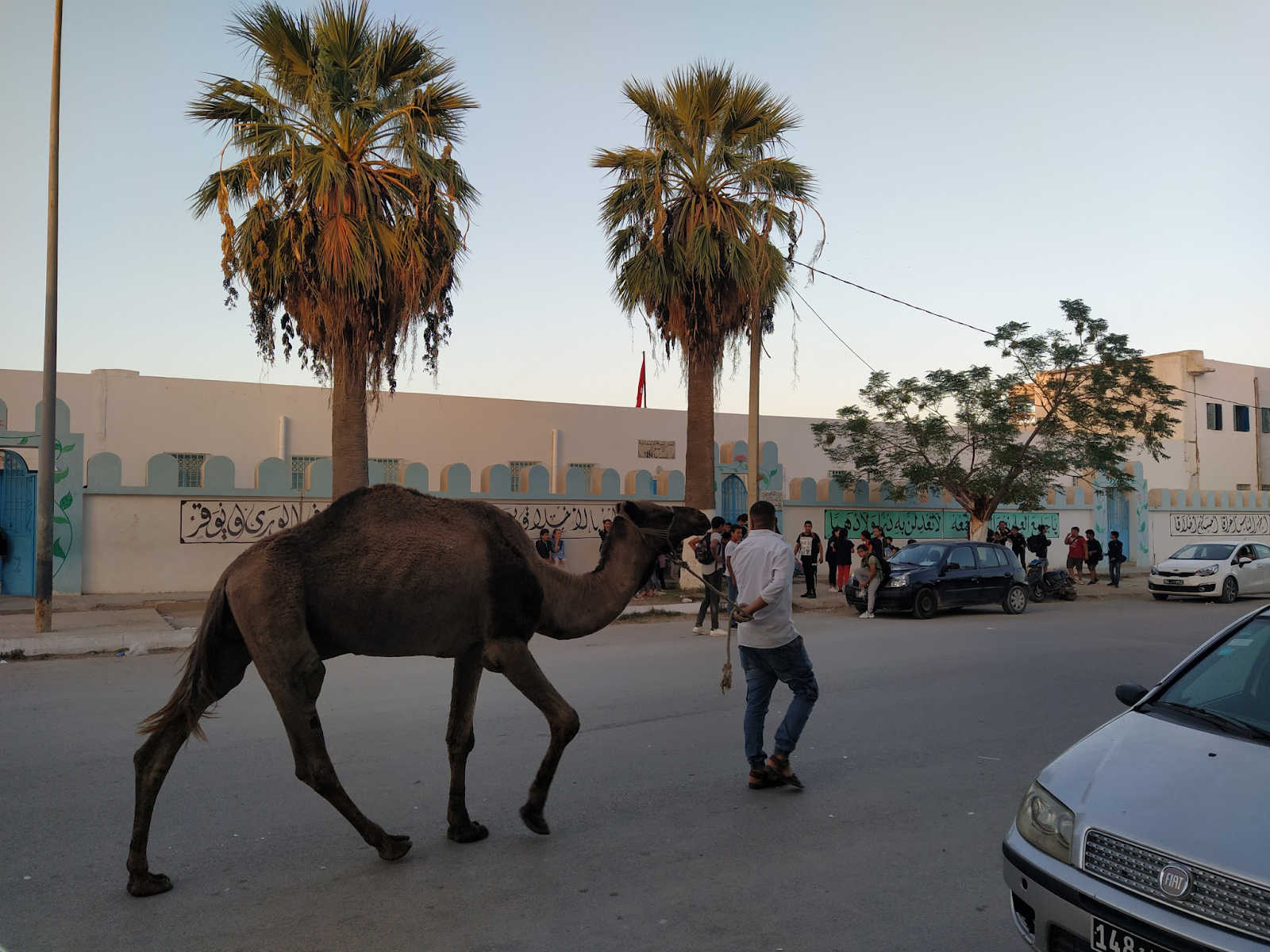
My main tip for backpacking Tunisia is to be open to adventure: you never know where the day may take you, and that is part of the beauty of travelling here. I could fill this guide exemplifying the kindness of Tunisian people, but that’s best discovered yourself.
So don’t think twice: book that ferry or flight, and head to North Africa. Chats with locals over tea will capture your heart, and the Saharan landscape will take your breath away. I guarantee you that budget backpacking Tunisia will leave you wanting to return.
Best Travel Itineraries for Backpacking Tunisia
If you have a week or even less to explore, there’s good news: the desert dream is remarkably accessible. You’ll have time to set forth across the countryside, to and from Tunis in the North .
A month would allow you to cover both the wide range of historical sites and natural beauty spots on offer pretty extensively.
Either of these itineraries will ensure you experience the best of Tunis, the tranquillity of the south, and immerse yourself in Tunisia’s rich history.
However, don’t be afraid to construct your own route. Using these itineraries as a guide, but sporadically wandering off, would be a juicy way to explore.
Plus, have a go on various modes of transport during your trip. Trains, buses and louages (don’t worry, all will be explained … ), each deserve their place on a Tunisian adventure.
You may even find yourself hitching a lift on a tractor, if your heart so desires…
A word of caution: Tunisian summertime is VERY warm, particularly in the desert. Some tours may not operate from June to August, so if you’re set on the Sahara, the summer months are best avoided.
1 Week in Tunisia: A Descent to the Desert…
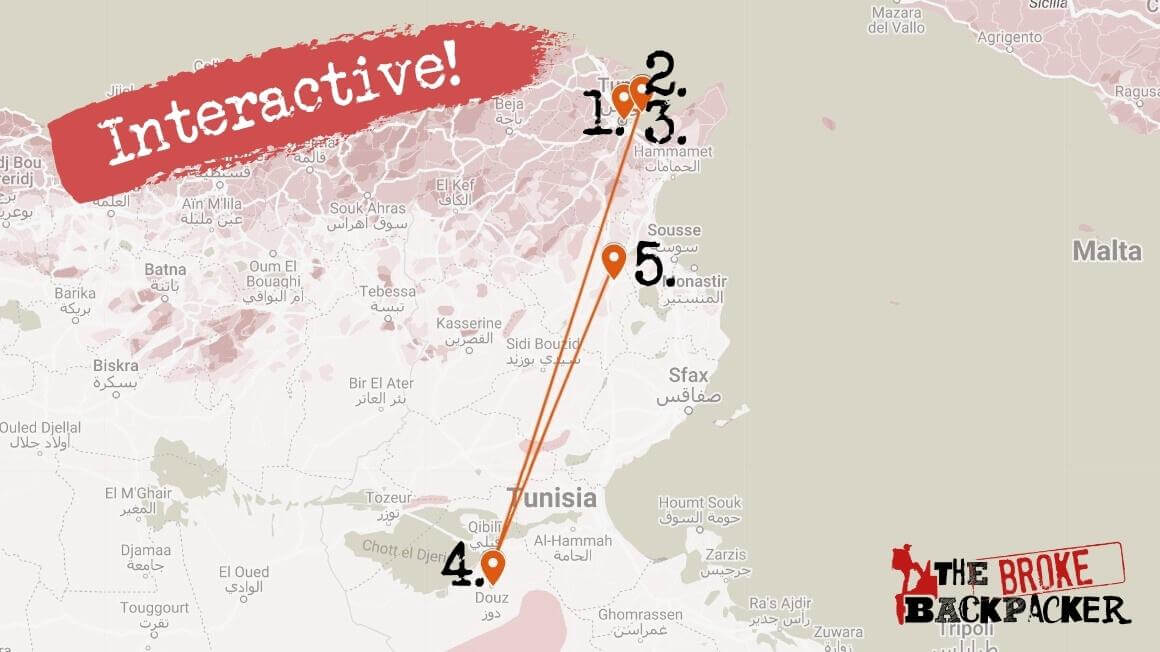
Most travellers will arrive in Tunis , either by air or sea.
Wander the vibrant capital and suburbs: Sidi Bou Said is a beautiful seaside town, with buildings of white and brilliant blue. Carthage , an ancient capital, is home to a remarkable span of ruins from days of former glory. Both are a short metro ride from Tunis.
To reach the Sahara, take a louage (shared minivan) down to Douz for a sandy excursion. From here, experience a night in a traditional Bedouin camp.
Make time for a visit to the extraordinary Kairouan and the Great Mosque, founded over 13 centuries ago.
Return to Tunis for most onward travel options. It’s probably around this time you’ll be thinking about when your next Tunisian adventure might be.
That’s one week, and no less than THREE different Unesco World Heritage Sites!
1 Month in Tunisia: A Legendary Loop
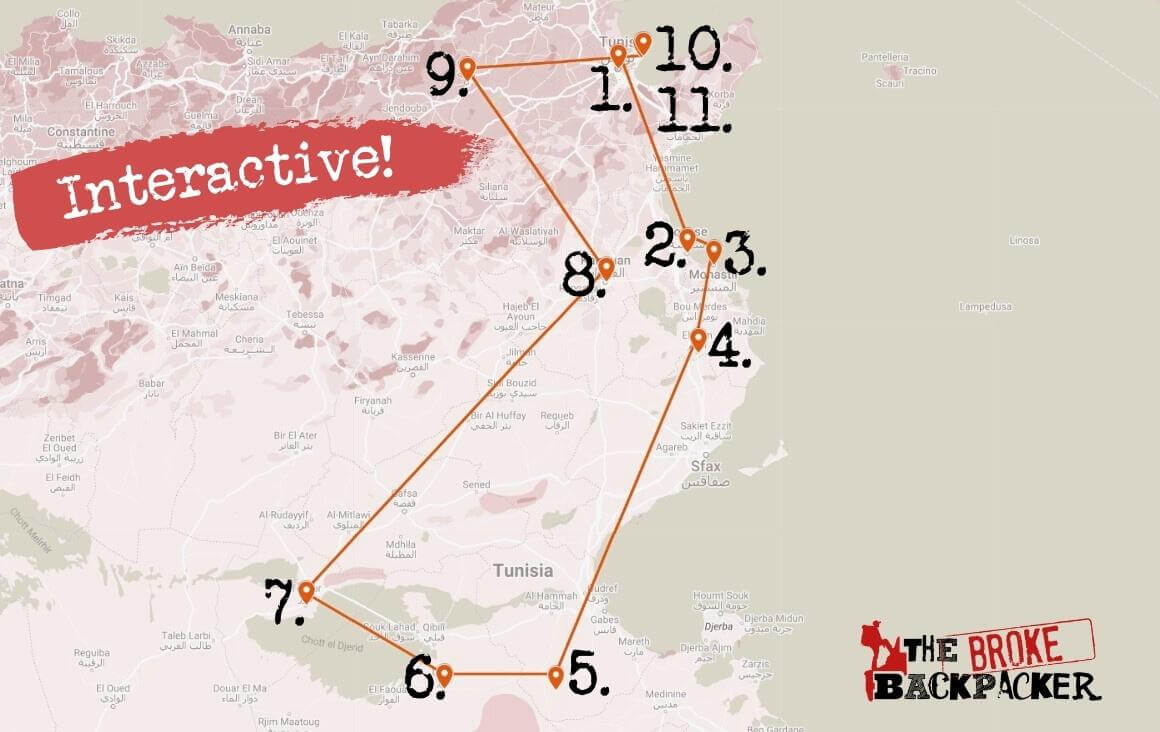
For those with longer on the road, the range of historical sites and natural wonder on offer could fill a month or more.
This itinerary forms a loop from Tunis , hugging the coast through the beachside hangouts of Sousse and Monastir , and the marvellous Amphitheatre of El Jem .
Explore the southern region’s Berber culture of Matmata and Douz, and of course, the Sahara itself.
Check out Touzeur and the abandoned villages nearby. Then head North to magical Kairouan and its Great Mosque, on the way to Sousse for another medina wander.
Finally, spend a couple of days in the Beja governorate for some scenic sights and a glimpse into life in Antiquity. (Plus pomegranates. And if it’s October, a festival celebrating pomegranates.)
Return back to Tunis to round off the circuit with a mooch around Carthage and ridiculously attractive Sidi Bou Said .
Best Places to Visit in Tunisia
These are the backpacking Tunisia destinations that you just shouldn’t miss…
And if you can – do take your time. Tunisia is a fantastic place to slow travel .
Backpacking Tunis
Tunis is a marvellous blend of old and new.
Get lost in a maze of alleyways in the medina , explore the souks and shop for souvenirs, before settling into a rooftop cafe for sunset. For a capital, Tunis is very walkable, and locals will help you in the right direction.
Check out the Bardo Museum , brimming with Roman mosaics, and the Zitouna Mosque, ( although non-Muslims aren’t able to enter inside).
The Royal Mausoleum Of Tourbet El Bey is one of the most incredible sights I’ve ever seen. Ushered inside from a quiet side street, we entered a network of rooms covered in intricate Ottoman decoration. Here, many Husainid Dynasty rulers are laid to rest in marble tombs.
Also, be sure to make time for a trip out to these ‘suburbs’, easily reachable from the heart of Tunis:
In Carthage , the archeological ruins of a powerful trading empire are not to be missed. On a very affordable ticket, you can access seven fantastic sites including the Roman Villas and the Baths of Antoninus (my personal favourite.)

Nearby Sidi Bou Said is genuinely stunning. It’s a beautiful seaside town, with buildings of white and brilliant blue, where you can enjoy panoramic views for lunch. Peruse the decorative doors found throughout the town, then head to the beach and paddle board through the sunset (rentals available from ‘Lucky Boy’s .’)
If you’re after some weekend nightlife, head to Gammarth! You’ll find what feels best described as a little ‘clubbing village’, with a super friendly atmosphere. There’s an awesome selection of bars and clubs pumping music from reggae to hard rock. And it’s right by the beach, so you can round the night off with a swim if you feel so inclined.
Backpacking Douz

Douz, a.k.a. ‘ the gateway to the Sahara, ‘ is a town set amongst palm trees, and a former stop on Trans-Saharan caravan routes. Today, it’s the ideal launching point for desert trips.
In Douz itself, you can pick between luxury hotels and simple camps, tailored to your budget. You’ll find options to continue south by camel, jeep, quad bike and more. Even taking to the skies with some ‘ultralight flying’ is a possibility.
Heading into the desert, you’ll look out over the vast Chott El-Jerid, the largest salt pan in the Saharan.
Most travellers will opt for an overnighter in the desert, an excellent way to appreciate both the natural beauty of the environment, and gain insight into traditional Bedouin life. Dig into some cous-cous and settle in by the campfire for a truly magical experience.
Backpacking Gabes and Matmata
Gabes is a pretty unique place, home to one of the last remaining coastal oases in the world. Unless coastal oases are your thing (sincerely hoping there’s an enthusiast out there), the biggest attraction to the area is the Berber village of Matmata .

Explore the ‘troglodyte’ houses, cave dwellings, and discover why Matmata has made its way into two editions each of both Star Wars and Call of Duty. There’s a compact but informative museum behind Hotel Sidi Driss (a.k.a. the Lars Homestead).
Backpacking Kairouan
Kairouan is a must-see focal point of ancient Tunisia. It’s a majestic town of great importance, both in Tunisia and the Islamic world. Built in 670AD, the Great Mosque served as an epicentre of worship and education for centuries to come, and today is home to the oldest surviving minaret in the world. It is a truly impressive masterpiece.
Shopkeepers to the West side of the Great Mosque have rooftops with fantastic views over its courtyard (some may expect you to buy a souvenir in exchange for the benefit).

Kairouan has long been famous for its sublime craftsmanship, making it Tunisia’s carpet capital. You can find some incredible pieces for very reasonable prices, their designs rich in symbolism. Keep an eye out for the Kairouan Cross.
Like in Carthage, a single ticket grants access to a range of sites. A highlight of these was the Mosque Sidi Sahbi, with its endless beautiful artistry.
Note : Louages directly to Tunis are available, but onward travel to El Jem requires a change in Sousse.
Backpacking El Jem
Introducing the Rome Colesseum’s cooler cousin: the Amphitheatre of El Jem.
This small village was once home to gladiatorial battles of epic proportions, with crowds of 35,000 marvelling at the spectacle.

Spend some time exploring its underground network of tunnels and ‘beast cages’. You’ll be pretty much free to roam all over one of the biggest amphitheatres on Earth.
There’s not a lot else to do except chill out in a nearby cafe and enjoy watching the camels roll on by. For the Amphitheatre alone, El Jem is undoubtedly worth a visit.
(Note: El Jem is on the direct train line between Tunis and Gabes, but onward travel to Kairouan by louage requires a change in Sousse).
Backpacking Sousse
Sousse is fascinating: you’ll find an exemplary medina (another UNESCO World Heritage Site) and some stupendous front doors.
Check out ‘ Bab El Gharbi’ – the Western Door to the medina – and ‘Souk el Caied’, an historic area of the market.
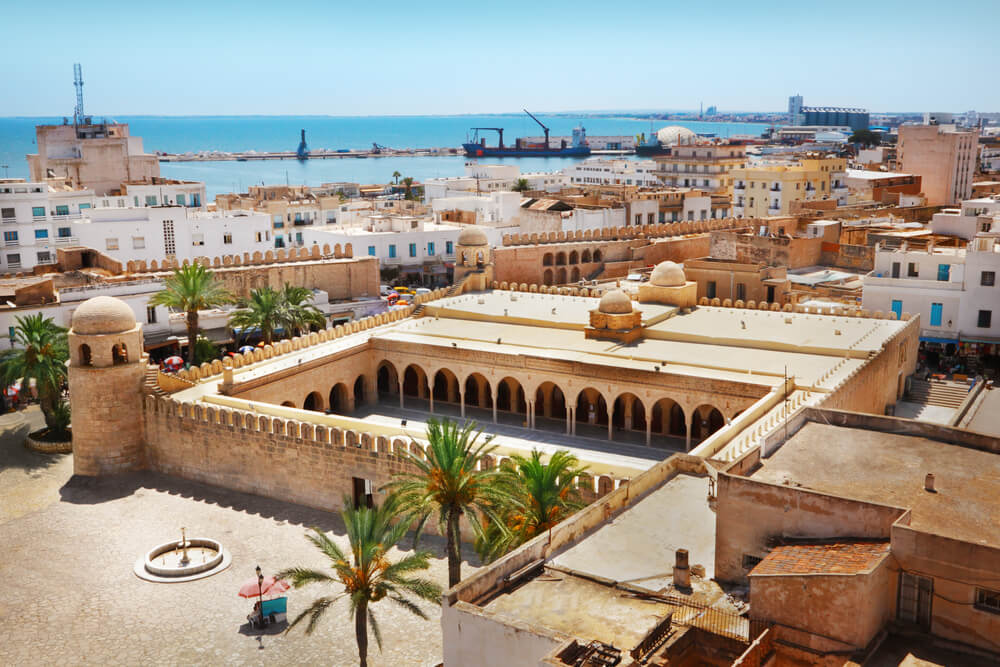
The Ribat of Sousse contains an inscription from the year 821, with impressive towers and walled construction. It’s a rather novel place, being an early Islamic city with a coastal kasbah (fortress) to protect it from piracy in the Med…
You may come across some very friendly ‘tour guides’ around the medina. I seem to recall ending up in a factory surrounded by thousands of Tunisian police jackets. Just be clear if you do not wish to pay for guiding services.
Backpacking Monastir
Monastir is an absolute gem of the Tunisian coast.
Pristine beaches reach far from the town, with ample sun to bask in. While home to a range of excellent holidaying provisions, Monastir is an ancient city. Its colossal ribat dates all the way back to the 9th century, vital in protecting the peninsula from oncoming enemy ships. Nowadays it’s just the occasional rogue pedalo from Sicily.
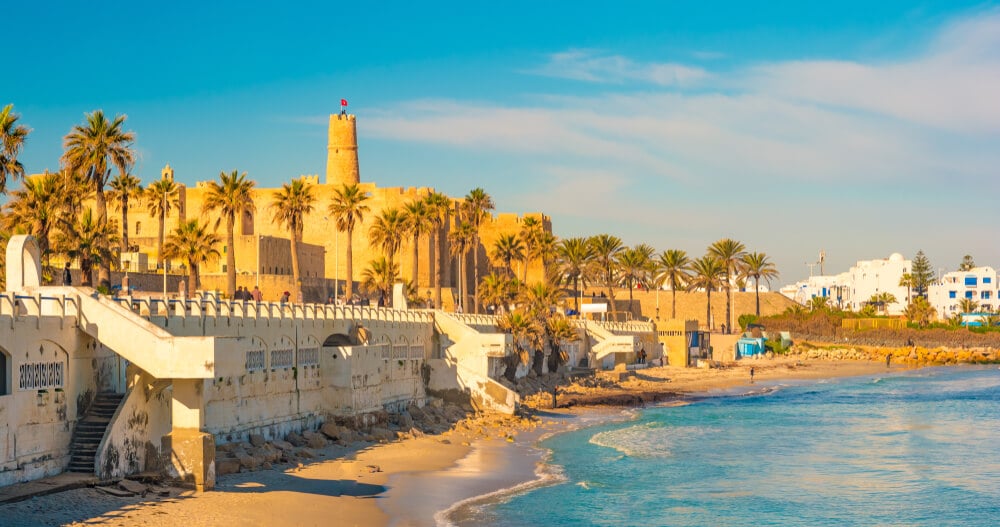
Lounge on the beach, sample the seafood, and stroll the marina, admiring the yachts. Make time for the Habib Burguiba Museum and the mighty mosaic collection there. And if you’ve ever seen Monty Python’s Life of Brian , some parts may seem familiar.
Backpacking Beja Governorate
I’ve called this section Beja Governorate, because while Beja itself is pretty interesting, it’s the surrounding areas within reach from the city that are especially special.
Dougga was inhabited across periods of Berber, Roman and Arab control. It’s an unbelievably well-preserved example of life long-gone; like visiting a great aunt and finding tins of beans from a previous century, but on steroids (the ancient artefacts, not your aunty). Explore the city ruins on foot, taking in the forum, baths, arches, marketplace and much, much more. You could try hitching; most visitors take a taxi from Beja or Tunis.
Beja Bridge is a much younger but still impressive structure, stretching between hilltops in the rolling countryside. Again, hitching here would definitely be an option, lying just 10km outside o Beja city. Half an hour northeast of Dougga, you’ll find Testour .

This small town, oozing Spanish influence, is set in the hills against a wonderful green backdrop. If you’re lucky enough to be here in October, you may just catch the annual Testour Pomegranate Festival, which has placed the town firmly on the pomegranate map (if such a thing exists).
A Side Note for Star Wars Fans…
I’ll be honest, sci-fi is not my forte. But when I showed this list to a mate who knows his ewoks from his lightsabers, he seemed suitably impressed.
Tunisia is home to many Star Wars filming locations that fans can visit, including:
- Mos Espa – Located near Tozeur, this is where the slave quarters in Episode I: The Phantom Menace were filmed.
- Ksar Ouled Soltane – This fortified granary near Tataouine was used as a backdrop for the slave quarters in Episode IV: A New Hope.
- Matmata – The underground Troglodyte homes of Matmata were used as the filming location for Luke Skywalker’s childhood home on the planet of ‘Tatooine’ in Episode IV. (The planet itself was inspired by the Southern city of ‘Tataouine’, its name adapted by Lucas.)
- Medenine – The town of Medenine served as the filming location for the exterior of the home of Anakin Skywalker in Episode I.
- Onk Jemal – This salt lake near Tozeur was used for the podrace scenes in Episode I. These locations offer fans a chance to immerse themselves in the world of the Star Wars saga and experience the unique Tunisian landscapes that contributed greatly to the films.
Getting Off the Beaten Path in Tunisia
In Tunisia, I would urge you to venture boldly, to places Google Maps’ Street View hasn’t made it to. Conveniently, this is practically everywhere.
As an underrated paradise for off the beaten path travel, getting off the tourist track is easy as. I’m convinced Tunisia would be an ideal country for hitchhiking around; walking through the countryside in Beja Governerate, I had all manner of vehicle (and animal) driver stop for a chat and offer a lift.

Bikes, tractors, cars, donkeys; getting off the beaten track is Tunisia is one mighty adventure.
You could try catching a train to a ‘random’ stop between well-known destinations, or scouting out cool places on longer louage journeys. People from more rural spots are likely to be super keen to show you their hometown, with unrivalled Tunisian hospitality.
Top Things to Do in Tunisia
Don’t visit Tunisia without checking off these must-sees…
1. Sleep in the Sahara!
Embark on a dreamy adventure into the heart of the Sahara . Spend an afternoon under the Saharan sun, or get stuck into a multi-day getaway. Sleep in a Bedouin-style tent or outside, under the stars. Whether you opt for a camel, jeep, quad bike or your own two feet, it’s bound to be an unforgettable foray amongst the dunes.
2. Visit The Amphithreatre of El Jem
It’s like the one in Rome but different.
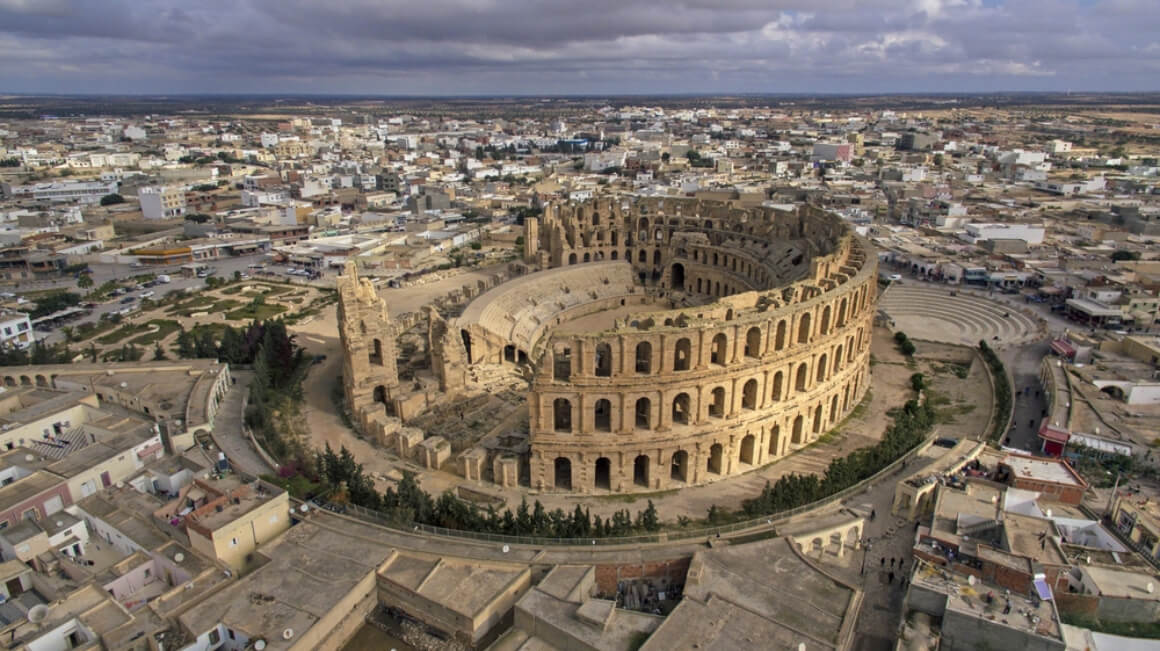
The Amphitheatre of El Jem is a sight to see. Marvel at the superbly preserved infrastructure that has stood the test of time, surviving seventeen centuries to be here today. It’s not hard to envisage scenes of immense scale and ferocity, when reading about the gladiators and animals battling here for the purpose of entertainment.
3. Dig into some Tunisian cuisine
Tuna. Harissa. Olives. Three inescapable tenets of Tunisian life. Whether or not these flavours tickle your fancy, you’re guaranteed to find some downright incredible dishes on any Tunisian menu. Sampling a range of local delicacies across the country is a pastime worthy of your hard-earned Dinar.
4. Wander aimlessly around Tunis Medina
Go and get lost. With over 700 monuments in the medina arena, you’re bound to stumble across something remarkable. The area is a composite of souks, mosques, mausoleums and more, guaranteed to satisfy your intrigue.
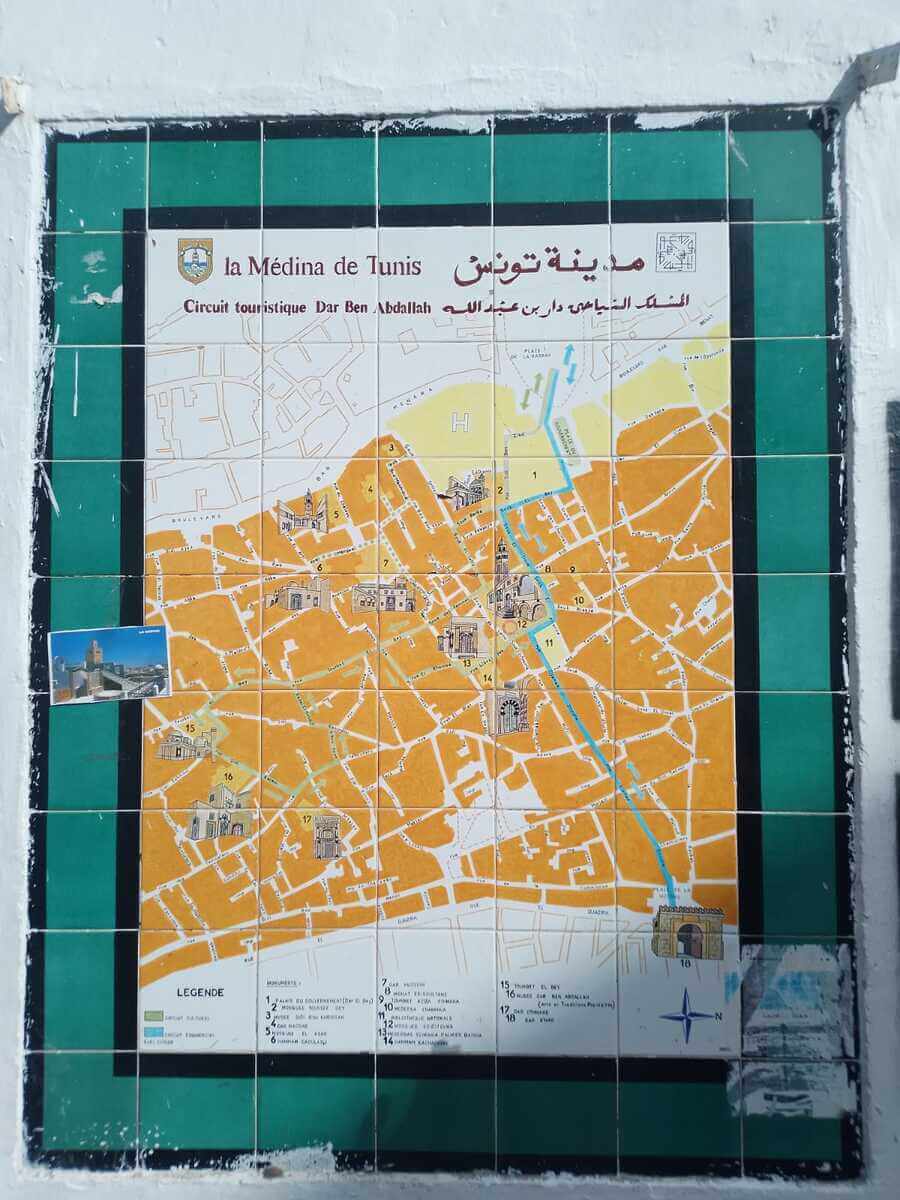
5. Lay eyes on the Great Mosque of Kairouan
Wandering and chatting your way through Kairouan, you naturally pick up on a sense of stature surrounding the place. The town is incredibly symbolic for Muslims, held as the fourth most holy city in Islam. For those that are unable to make it to Mecca itself, seven trips here is considered equivalent. Laying eyes on the Great Mosque is truly special.
6. Explore Sidi Bou Said and Carthage
In most cities, a day in the ‘suburbs’ may not sound too invigorating. Tunis is different.
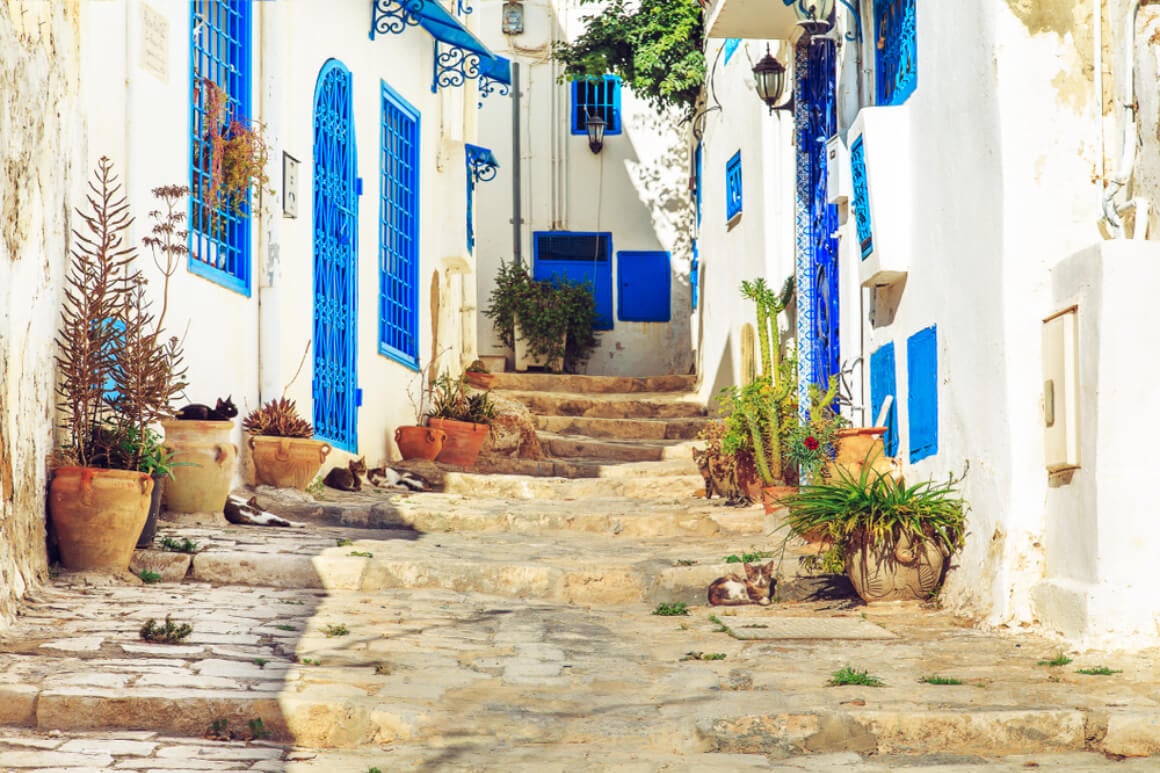
Sidi Bou Said is as picturesque as anywhere, a maze of blue and white houses, overlooking a tremendous beach for both paddleboarding and cotching. The ruins of Carthage are rather awesome and not to be missed. Take the TGM for a top day out.
Backpacker Accommodation in Tunisia
Now, when it comes to budget accommodation in Tunisia, there’s not a huge hostelling scene…
However, it is incredibly encouraging to see two BRAND NEW abodes appear on Hostelworld in early 2023 in Tunis and Djerba – here’s to hoping this is the start of a hostelling revolution in Tunisia.
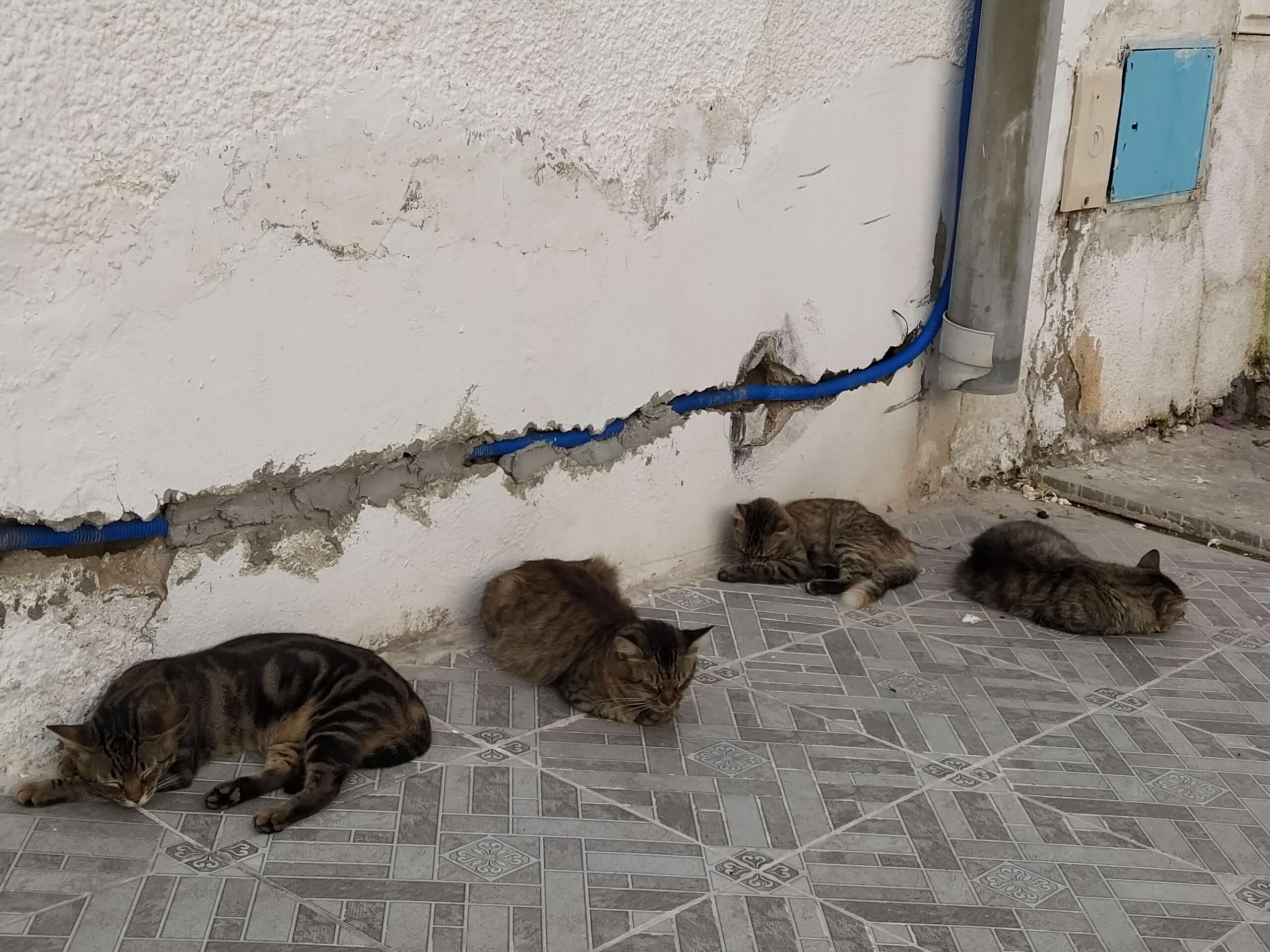
Outside of these places, you’ll most likely be scouting out a guesthouse of your liking, many of which are very affordable.
We’re not talking Asia cheap, but there are certainly options around for Broke Backpackers.
And for the occasional ‘cheat night’, upping the budget slightly will unlock some magnificent places to stay…
Tunisia Backpacking Costs
Tunisia is an underrated gem for cheap and incredible adventures !
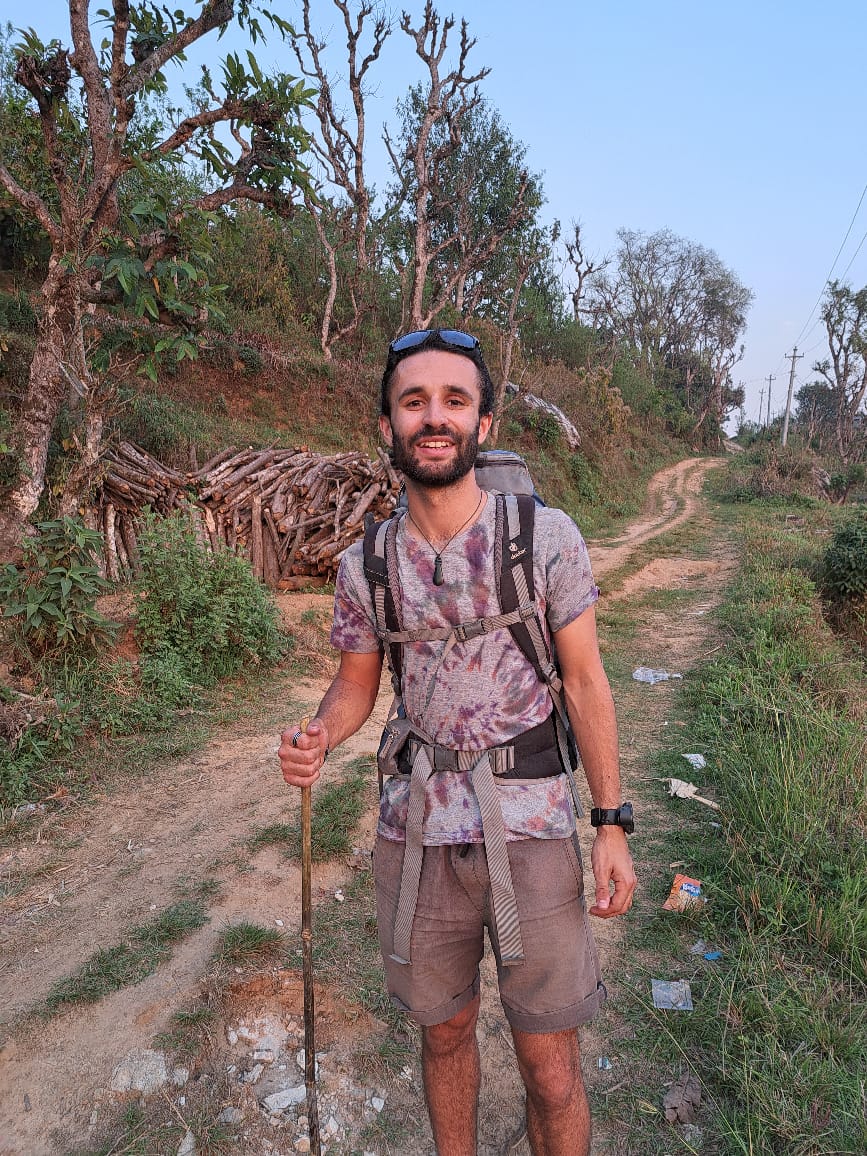
Particularly when you consider its proximity to Western Europe, costs for all backpacker basics are very reasonable. If you know where to look, there is some splendid food available for super low prices, and taking the louage won’t set you back a great deal.
Budget accommodation may sometimes appear elusive, but there are very cheap options around. Seek, and you shall find.
Tickets to main attractions are also extremely good value. You can be amongst some of the most incredible archaeological sites in the world, for less than the price of a Starbucks.
If you’re ever feeling like ‘splashing out’, sampling an upmarket eating establishment will absolutely not break the bank and there are some pretty fancy options.
Plus, if you want to go the whole hog and throw in some hitchhiking, couchsurfing or camping, you really could explore Tunisia on a shoestring budget…
A Daily Budget in Tunisia
Money in tunisia.
To get your first plate of cous cous, you’re going to need to get your hands on some Tunisian Dinar. At the moment, one Dinar is worth approximately 3 US dollars.
You may see the abbreviation DT, occasionally TD, or TND. Same thing; these are all references to the local dinero.
For some prices, particularly on the low end, you’ll see a number followed by several zeros. This is just to show the ‘milim’ (thousandth) denomination for extra precision. Don’t panic, that chapati omelette is still an absolute bargain.
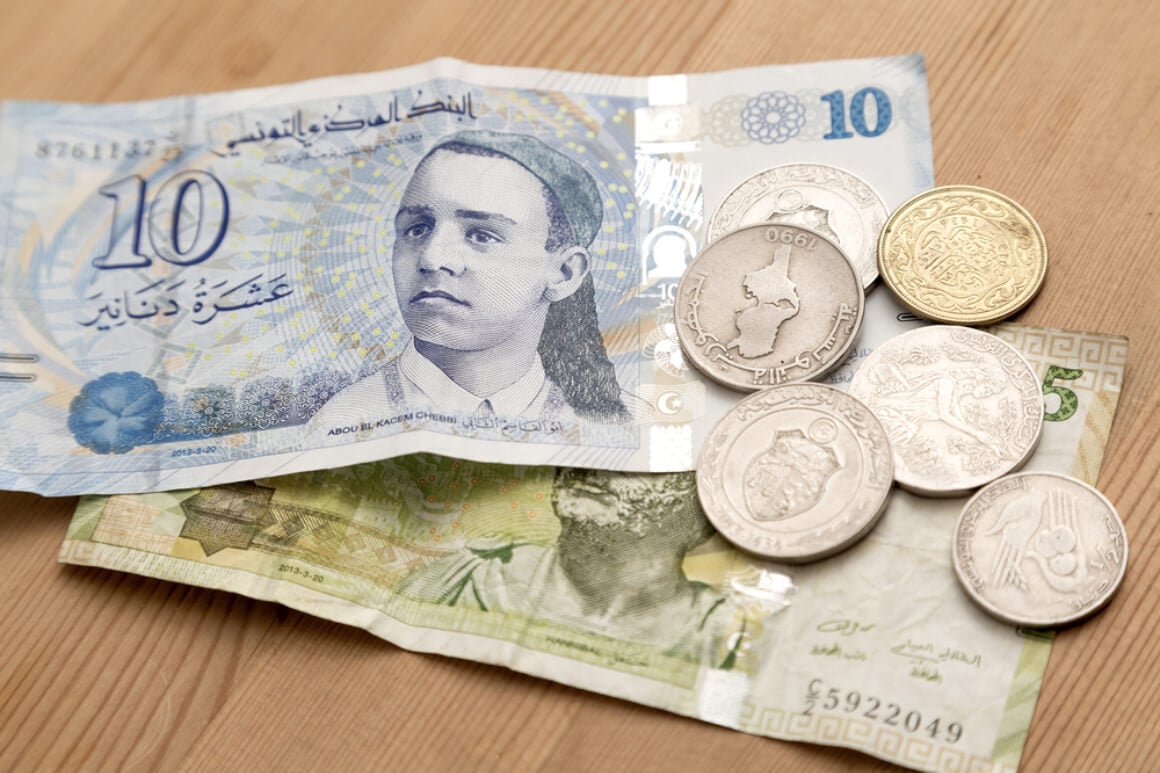
There’s also a coin in circulation with THIRTEEN flat sides. As far as I can tell, only the Czech Republic can claim to match it. Some excellent coinage to be found in Tunisia.
You can’t take Dinar out of the country though, so enjoy examining them while you can.
ATMs are pretty easy to find, but charge a few dollars for withdrawal, so it’s best to take out reasonably large chunks at a time. Otherwise, you can exchange currencies without much hassle (US dollars being the most simple).
For all matters of finance and accounting on the road, The Broke Backpacker strongly recommends Wise – The Artist Formerly Known as Transferwise! Our favourite online platform for holding funds, transferring money, and even paying for goods, Wise is a 100% FREE platform with considerably lower fees than Paypal or traditional banks. But the real question is… is it better than Western Union? Yes, it most certainly is.
Travel Tips – Tunisia on a Budget
As seen in the daily budget above, you could spend quite a hefty sum in Tunisia, living a life of absolute luxury.
Rest assured, however: with a few tips and trips, you’ll be able to keep expenses very low if that’s a priority, and have an unforgettable adventure.
In fact, I strongly believe that following any of these, at least on occasion, will lead to a much richer travel experience than splashing out on fancy hotels every night.
- Eat local street food. Street food is incredibly affordable if you know where to look. We’re talking lunch for less than a dollar. Rest assured, you won’t being going hungry. Seek out the likes of chapati omelette, leblebi, and brika (more on these to follow).
- Hitchhiking. Don’t get me wrong, the louages, buses and trains are very well priced. But for an extra dose of both adventure and savings, Tunisia would be awesome for thumbing lifts. I recall turning down many offers because I was enjoying walking. It certainly seemed catching a ride wouldn’t take much waiting in a lot of places.
- Couchsurfing. There are no less than 60,000 hosts listed on Couchsurfing within Tunisia! You’re likely to make new mates and be treated extremely well as a guest, while keeping costs down.
- Workaway. There are some beaut looking Workaways in Tunisia. Most involve helping out for a few hours a day in exchange for a bed and board, while garnering unique insight into everyday life in Tunisia.
Why Should You Travel to Tunisia with a Water Bottle?
As travellers, we have a joint responsibility to reduce the environmental impact of our excursions, and plastic waste is one of the biggest problems facing countries across the globe.
While local water quality has improved greatly in Tunisia, for peace of mind, travelling with a water filter is a wise move. There’s no better option than the Grayl Geopress: this water bottle and filter system removes all manner of threat, including viruses and heavy metals – no mean feat.
It’ll last for years, reduce plastic waste, and save you money. The Grayl Geopress is a sound investment for any intrepid adventurer.

Drink water from ANYWHERE. The Grayl Geopress is the worlds leading filtered water bottle protecting you from all manner of waterborne nasties.
Single-use plastic bottles are a MASSIVE threat to marine life. Be a part of the solution and travel with a filter water bottle. Save money and the environment!
We’ve tested the Geopress rigorously from the icy heights of Pakistan to the tropical jungles of Bali, and can confirm: it’s the best water bottle you’ll ever buy!
Best Time to Travel to Tunisia
Beach lovers are in for a treat: there’s an abundance of sunrays to be sought in Tunisia, and swimmable water temperatures for most of the year. Just don’t accidentally backstroke into Libya.
The best times for a Tunisia trip are probably around the fringes of summer. Spring and early Autumn mean the North is still very pleasantly warm and beach days are comfy, while the desert isn’t stiflingly hot, like in the peak of Summer.
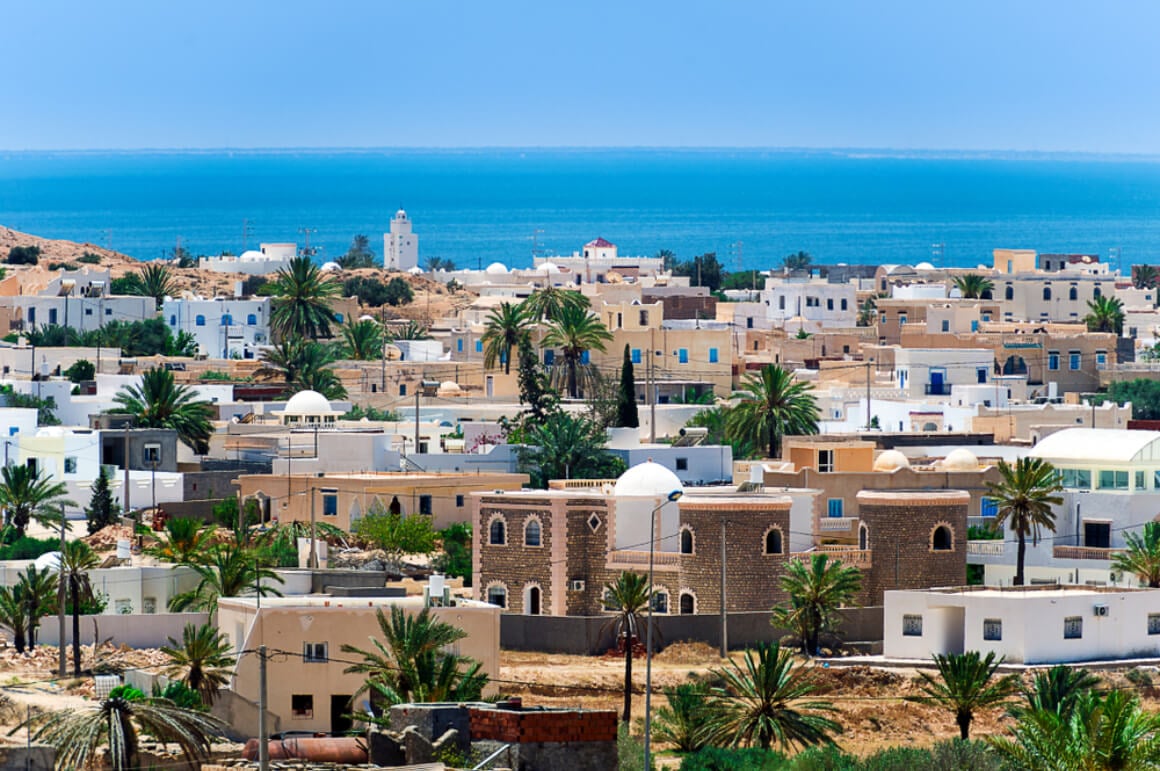
In fact, most desert excursions won’t run from June to September; the heat around this time does not sound remotely enjoyable. You’d be sweating like ( insert favourite unacceptable innuendo). Plan accordingly to fulfil any Saharan dreams.
The months from October to May inclusive are optimal for Tunisia trips, if you want to have all options on the table during your travels.
What to Pack for Tunisia
You won’t need to add anything too out of the ordinary to your backpacking packing list .
On the clothes front, just pack some stuff that’s both loose and cool (temperature-wise; I’m not here to judge on fashion.) Tunisia is liberal compared to other Arabic nations, but it’s a good idea to make an effort to dress more conservatively – outside of Tunis especially – with some long sleeves and trousers.
Also throw in a warm layer or two for a night amongst the Saharan zephyr.
As always, investing in some trusty gear will improve life on every backpacking trip, and last ages. Here’s a pick of the bunch:

Travel Security Belt
This is a regular looking belt with a concealed pocket on the inside – you can hide up to twenty notes inside and wear it through airport scanners without it setting them off.

Microfiber Towel
Hostel towels are scummy and take forever to dry. Microfibre towels dry quickly, are compact, lightweight, and can be used as a blanket or yoga mat if need be.

Petzl Actik Core Headlamp
A decent head torch could save your life. If you want to explore caves, unlit temples, or simply find your way to the bathroom during a blackout, a headtorch is a must.

‘Monopoly Deal’
Forget about Poker! Monopoly Deal is the single best travel card game that we have ever played. Works with 2-5 players and guarantees happy days.
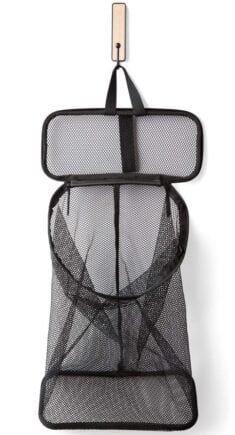
Hanging Laundry Bag
Trust us, this is an absolute game changer. Super compact, a hanging mesh laundry bag stops your dirty clothes from stinking, you don’t know how much you need one of these… so just get it, thank us later.
Staying Safe in Tunisia
Yes – there are some regions best left alone – but on the whole, Tunisia really feels safe to travel.
I consistently felt the Tunisian people were always there to help, and never felt at risk.
Tunisia was the catalyst for the emergence of the Arab Spring in 2011, and heralded as a relative success story from this period of immense change.
However, 2015 saw three tragic incidents occur, when terrorist shootings in Sousse and Tunis led to a significant loss of life. Since then, much work has been done on improving safety and security, and thankfully nothing like the tragedy of 2015 has occurred in the aftermath.
It’s important to contextualize terrorism risk. Even countries like the United Kingdom have not escaped terrible incidents over the last decade. Personally, I believe Tunisia is a safe country to travel to, and the overwhelming majority of trips to Tunisia will be filled with kindness and a very warm welcome.
Be a bit sensible and follow your usual travel safety tips , though: the borders with Libya and Algeria should be avoided, as should the vicinity of any protests.
Sex, Drugs, and Rock ‘n’ Roll in Tunisia
Tunisia may not be the first place that springs to mind when you think of wild nights out.
While a relatively new development, there is an excellent party scene in Tunis. Many young Tunisians like to go out on the toon. My mate even found her way to a desert rave, which looked highly exuberant…
Being a predominantly Muslim country, most people don’t consume alcohol. It is available for sure, but there are restrictions, and we should make efforts to be cognizant of cultural norms. As such, alcohol sales are restricted on Fridays in most places, and during Ramadan.
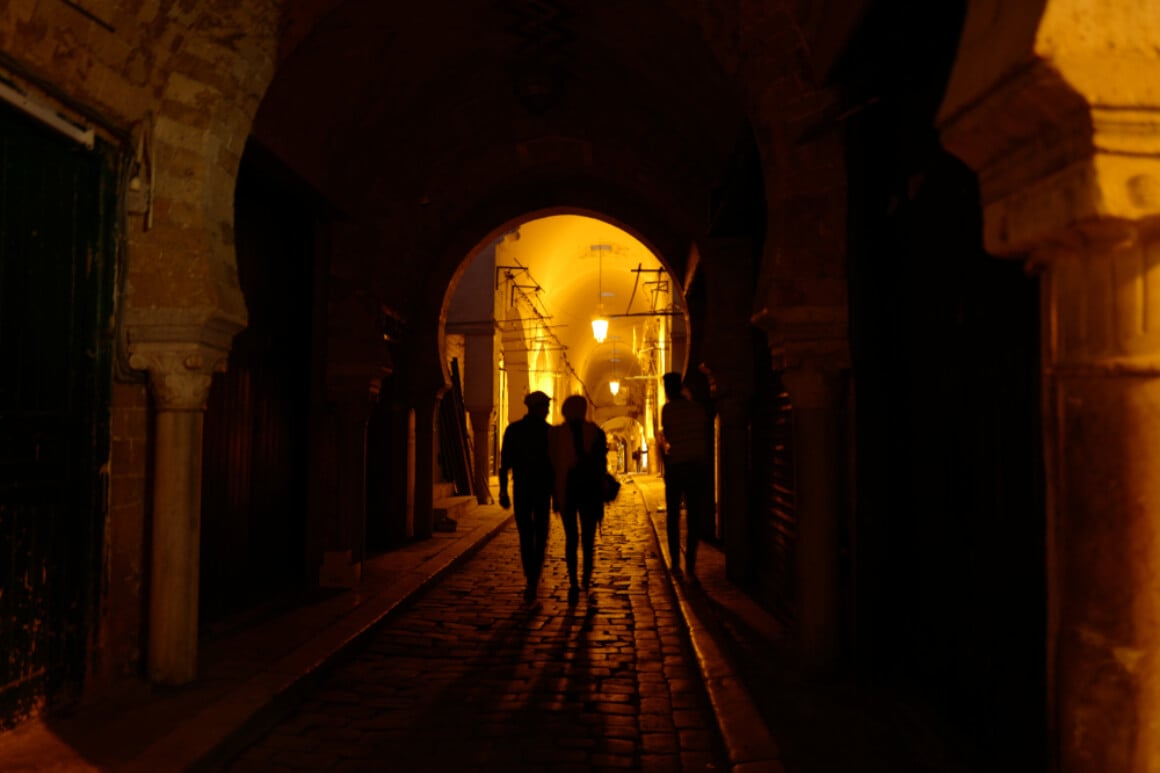
Cannabis is the most commonly used drug, but laws are tight – as of a few years ago, something like a quarter of all prisoners were being locked up for drug offences. Personally, I’d avoid the drug scene while in Tunisia, but if you do decide to risk it great caution should be urged.
Tunisia is forging an accommodating compromise, whereby tourists and locals can drink their way through the witching hour if they so please, with a tea or cool lager.
But just remember to be respectful . Tunisia is a very welcoming country, and really quite liberal compared to other Arabic societies, so let loose and have a blast with the locals, but be mindful in your jollification…
Getting Insured BEFORE Visiting Tunisia
Now, it may not be the most thrilling part of trip planning, but getting properly insured BEFORE travelling is a wise addition to any backpacking to-do list.
ALWAYS sort out your backpacker insurance before your trip. There’s plenty to choose from in that department, but a good place to start is Safety Wing .
They offer month-to-month payments, no lock-in contracts, and require absolutely no itineraries: that’s the exact kind of insurance long-term travellers and digital nomads need.

SafetyWing is cheap, easy, and admin-free: just sign up lickety-split so you can get back to it!
Click the button below to learn more about SafetyWing’s setup or read our insider review for the full tasty scoop.
How to Get Into Tunisia
Tunisia is very well connected by air, with flights running every day from across Europe and beyond. Most flights will go into Tunis Carthage airport, but there are also options to fly directly into the likes of Monastir, Djerba and Sfax.
Another great option is to sail from Europe across to Tunis – there are several options from Italy (Palermo, Genoa, and Salerno) and France, with 5 weekly crossings departing from Marseille.
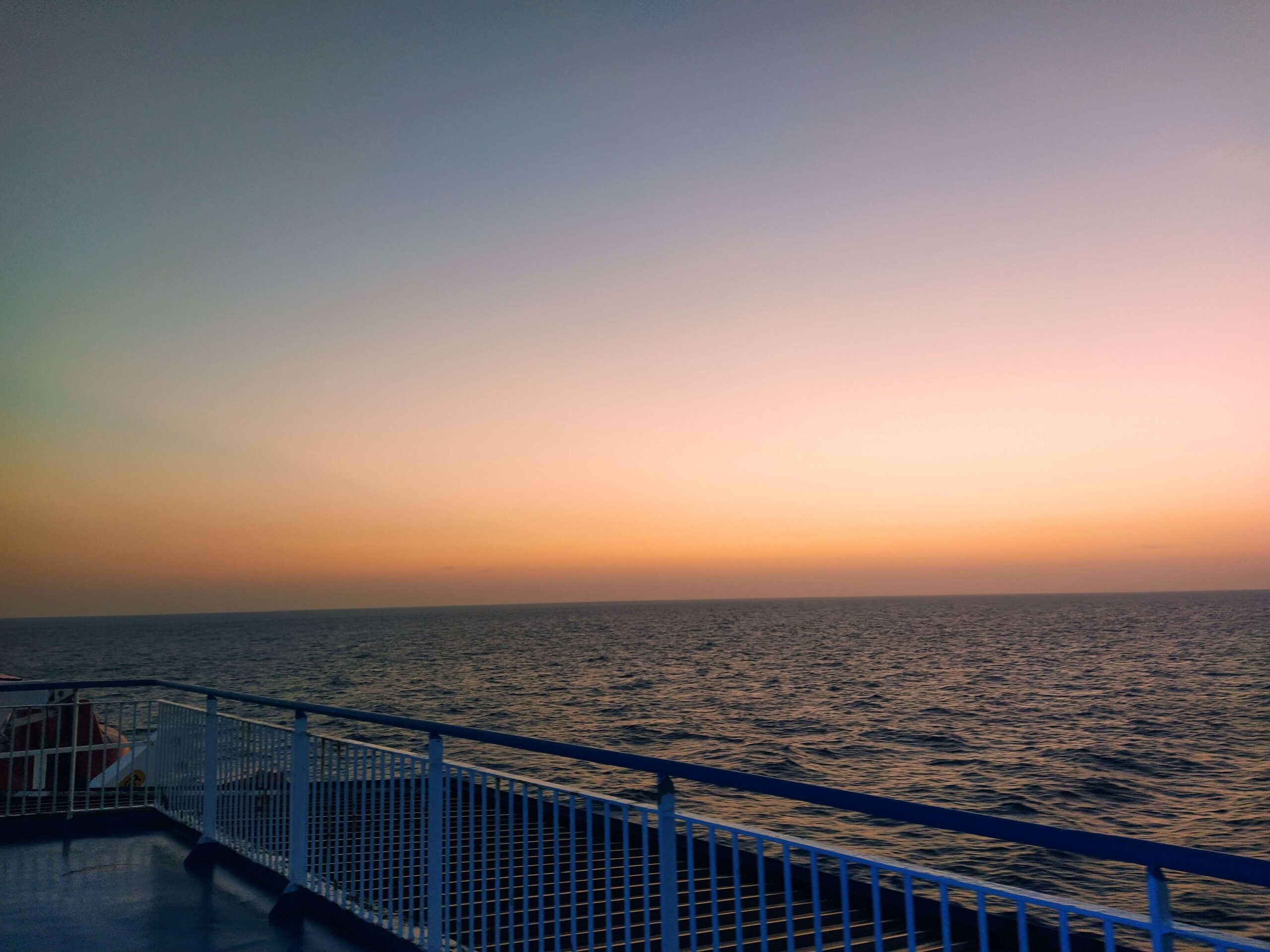
Don’t expect a luxury cruise liner, but voyage by boat is a very exciting way to arrive in North Africa. It’s affordable – especially for budget backpackers who don’t fork out on a cabin – and tickets can be booked online.
(One word of advice – don’t turn up late for check-in. To no avail, a good-natured Tunisian policeman called the ferry captain, who replied: “ you know how you have a Plan A and a Plan B? Well, it’s now time for Plan B.” Next boat leaves Wednesday…)
Entry Requirements for Tunisia
More dreamy news – travellers from most countries can receive a visa on arrival, free of charge!
Check your government’s travel guidance for relevant details, but for lots of travellers, the Tunisia visa on arrival is valid for three months!
The government also recently announced the removal of all Covid-19- related requirements, such as proof of vaccination or recent testing.
Apparently going through passport control at Tunis Airport isn’t the most pleasant experience, but stay strong. It’ll all be worth it.
Officially, you need to provide an address for your initial stay on arrival, but it’s luck of the draw whether this is questioned. I’d just recommend having the address of a hotel lined up to provide if requested.

Get 15% OFF when you book through our link — and support the site you love so dearly 😉
Booking.com is quickly becoming our go-to for accommodation. From cheap hostels to stylish homestays and nice hotels, they’ve got it all!
How to Get Around Tunisia
Trains, camels, quad bikes, to name a few. Tunisia has some brilliant transportation, the shining star of which is undoubtedly the louage. Read on for the low-down on how to plan your trip …
While journeys may take a smidgen longer than planned, and/or be a bit toasty, the locals in Tunisia will make sure you get to wherever you’re heading.
Travelling By Louage In Tunisia
I genuinely loved these. So bloody much.
In most Tunisian towns and cities, you’ll find a building or area, full of minivans. These are louage stations.
Every day, hundreds of these vans ferry people back and forth between settlements, forming a network that links nearly all areas of the country together.

You turn up at the station and buy a ticket, at the ticket counter. (In smaller places, it may be an individual roaming between vehicles, or in the louage itself.) The big stations may appear rather Byzantine, but there are signs showing the destination of each louage, and you’ll be helped on your merry way.
One thing to note: the driver will wait until all seats on the van are filled before setting off. This is usually pretty quick, but can take a while on routes-less-travelled.
On longer forays across the country, you’ll likely have a break for some grub. These pitstops in potentially more remote places were super cool experiences. When travelling with Tunisians, friendliness, warmth and good food abounds.
As you’d expect, not all towns are connected directly by louage. For example, to travel between Kairouan and El Jem, one must change first in Sousse. Ask around at the station for optimal routing choices.
Travelling By Train In Tunisia
Train travel in Tunisia is superb.
You can see the landscape changing in real-time as you venture down the coast, and tickets are good value.
In Tunis, the ‘TGM’ runs from the city centre to La Marsa, with stops at places like Carthage and Sidi Bou Said en route. This is a fantastic way to get around the capital, and makes the suburbs easily accessible for day trips. Tickets are extremely cheap, and come in the form of a little blue paper slip.
It may be useful to visualise your travel options in Tunisia, so click here for a map of the railway network run by SNCFT, and here for the timetables of scheduled departures. Advance warning, however: do not expect Japanese-style punctuality. On longer journeys in particular, you may end up hanging around for a while with delays, but just settle in with some snacks and watch the world go by.
And if delays do cause you any difficulty, locals will help you out. For example, arriving late in Sousse, a gentleman asked where I was headed. He insisted I share his taxi, which he rerouted for a drop-off at some budget accommodation, and refused point blank to accept any monetary contribution for the trouble. True hospitality.
During your Tunisia trip, taking to the railways at least once is a must.
Onwards Travel from Tunisia
Unfortunately, onward travel by land from Tunisia is rather limited by its proximity to unstable neighbouring Libya…
Tunisia’s only other border, shared with Algeria, has reopened since Covid, but all travel to this area is advised against by most governments.
If you’d like to continue on an African Odyssey, there are reasonably cheap flight options available across the North, to Morocco or Egypt, perhaps Mauritania or even beyond.
- Backpacking Egypt
- Backpacking Ethiopia
- Backpacking South Africa
- Backpacking Italy
Working and Volunteering in Tunisia
Volunteering is a brilliant way to have a positive impact while on your travels and immerse yourself in real Tunisian life. You’re likely to make special connections, help drive real change, and save money. Helping out on a locally-led project can be a real win-win situation for both volunteers and hosts.

Worldpackers: connecting travellers with meaningful travel experiences.

A new country, a new contract, a new piece of plastic – booooring. Instead, buy an eSIM!
An eSIM works just like an app: you buy it, you download it, and BOOM! You’re connected the minute you land. It’s that easy.
Is your phone eSIM ready? Read about how e-Sims work or click below to see one of the top eSIM providers on the market and ditch the plastic .
Tunisian Culture
Tunisian culture is a unique intermingling of Mediterranean, Arabic, and African influences. Being predominantly Muslim, Islam plays a large role in everyday Tunisian life, as does the value of family.
The region, originally inhabited by Berber tribes, has had parts ruled by Phoenicians, Romans, Arabs, Ottomans and French, to name a few. It’s been home to cities of trade for vast empires, numerous bloody wars, and was mainly Christian for centuries before transitioning towards a Muslim society. The result today is an incredibly rich cultural landscape.
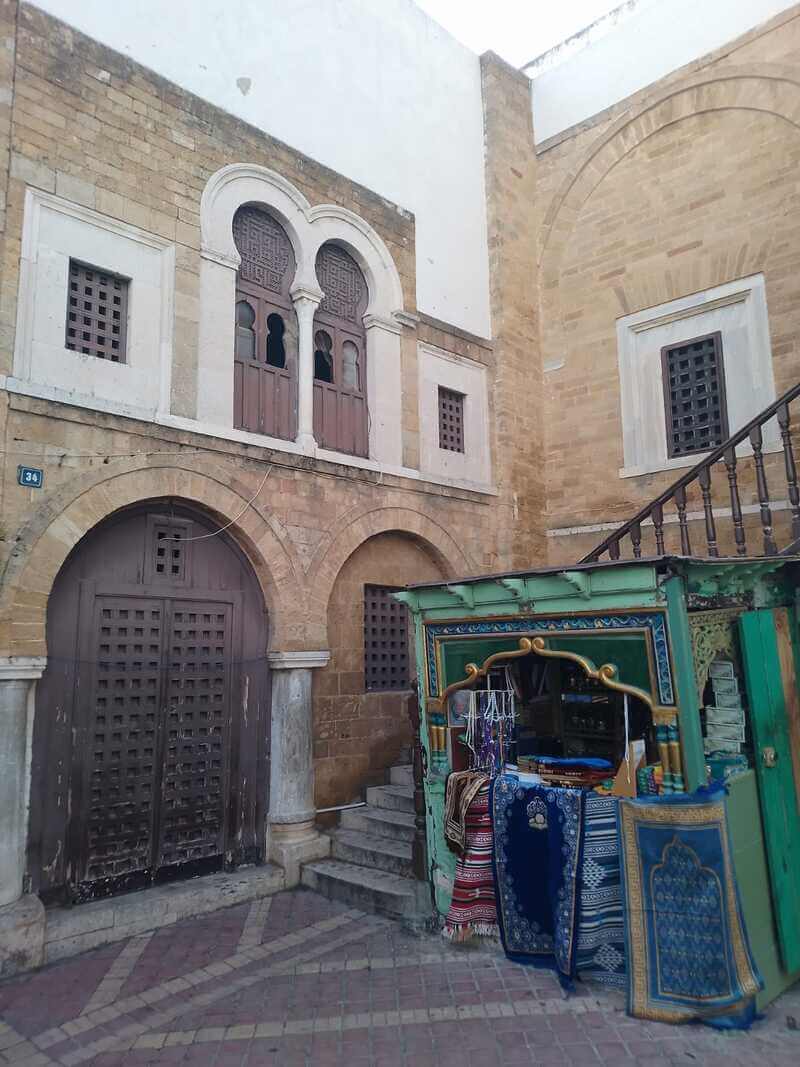
You’ll find an eclectic range of sights to see, food to sample, and people to learn from. Many of the ruins in Tunisia beautifully showcase what life might have been like in a civilisation so different from our own. The best examples are in Carthage and Dougga, the latter a supremely preserved settlement from Berber, Roman and Punic times.
In terms of cuisine, Tunisians proudly hang on to the spicy legacy of their Arab influence. Seriously, you may want to ask them to go easy on the harissa. Seriously. That stuff can cause damage.
By wandering around practically anywhere in Tunisia, you can sense the history of the place. The large mosaics, intricate weavings on carpets, and decorative front doors all point to its illustrious past. In addition, Tunisian life is underpinned by a culture of hospitality and goodwill, that you’re bound to uncover.
Simply get stuck in: delve into the history, artwork, poetry and music. There’s a quite magical heritage to be found practically everywhere.
Useful Travel Phrases for Tunisia
Learning a bit of the language (Tunisian Arabic) can be useful before your trip…
Hello = A – sleh – ma
Goodbye = bi – sle – ma
How are you? = le – be -ss?
Good, thanks! = le – be – ss!
Yes = ay / naam
Please = aish – ik
Thank you = aish – ik
Sorry = asif (from male) asifa (from female)
No problem = mush mushkil
I would like = n’ Hib
I would not like = ma n’ Hib-sh
Can I have___ = mumkin ___
Where is ___? = Way-n ___?
What to Eat in Tunisia

Can’t lie, I’m usually not a huge fan of two-thirds of that set. But somehow, in Tunisia, it just works. There’s some sensational grub to dig into.
Of course, this ingredient list isn’t exhaustive, but you’ll find these quite a lot throughout the Tunisian culinary scene. Harissa is a paste, blended from a range of spices and herbs including chilli, garlic and cumin,. UNESCO names it as part of Tunisia’s ‘Intangible Cultural Heritage’: it’s very, very popular throughout the land.
Like so many other things in Tunisia, the cuisine has been sculpted by numerous cultural influences from its history. The main features, however, are hearty stews , some grilled meats and vegetables, and a healthy dose of spices .
Do your insides a favour, and ask for a modest allocation of harissa for your first outing, and work your way up from there. Sadly, I could never hack it like the Tunisians, but it was still bloody delicious.
Street food stalls are a top place to investigate the local delicacies, and are super cheap. Given the variation in climate and culture, Tunisian food can change greatly between regions, so asking locally for pointers in the right direction on the menu can be fruitful.
Look out for some of these popular options below which are certainly worth sampling, but don’t be afraid to get stuck into some untranslatable soup or seemingly improbable flavour combination. It may well become a firm favourite.
Popular Dishes in Tunisia
- Cous-cous : A Tunisian and North African staple, made of steamed semolina. Usually served with stewed meat, vegetables (and of course, some harissa.)
- Lablabi : Another staple. Chickpea stew, heavy on the garlic and cumin, topped with egg and bread. Can be an acquired taste.
- Kafteji : A hearty dish packed with fried vegetables, sometimes topped with fried egg and/or merguez (Maghrebi lamb sausage). And harissa. Obviously.
- Brik : Very popular, often an appetiser. Thin pastry encasing some kind of filling in a triangular formation. Cheese, egg, meat, tuna. It varies.
- Ojja : This is a top, top feed. Hearty, thick, soupy, tomato-based dish with eggs and vegetables. Often served with merguez. And harissa.
- Chapati Omelette : Chapati, but not as you know it. Thick, round pieces of bread, served warm and fresh, hugging an omelette. IMHO, the best cheap lunch in the land.
A Brief History of Tunisia
I’ll keep it brief, but this section could have been encyclopaedically long. With a rich history that spans thousands of years, there’s a lot to be uncovered.
This land has seen the rise and fall of whopping great empires, and its history is evident in its diversity.
Rewind a long way.
Tunisia is inhabited by Berber tribes, but later becomes part of the Phoenician Empire, a powerful city-state to rival Rome.
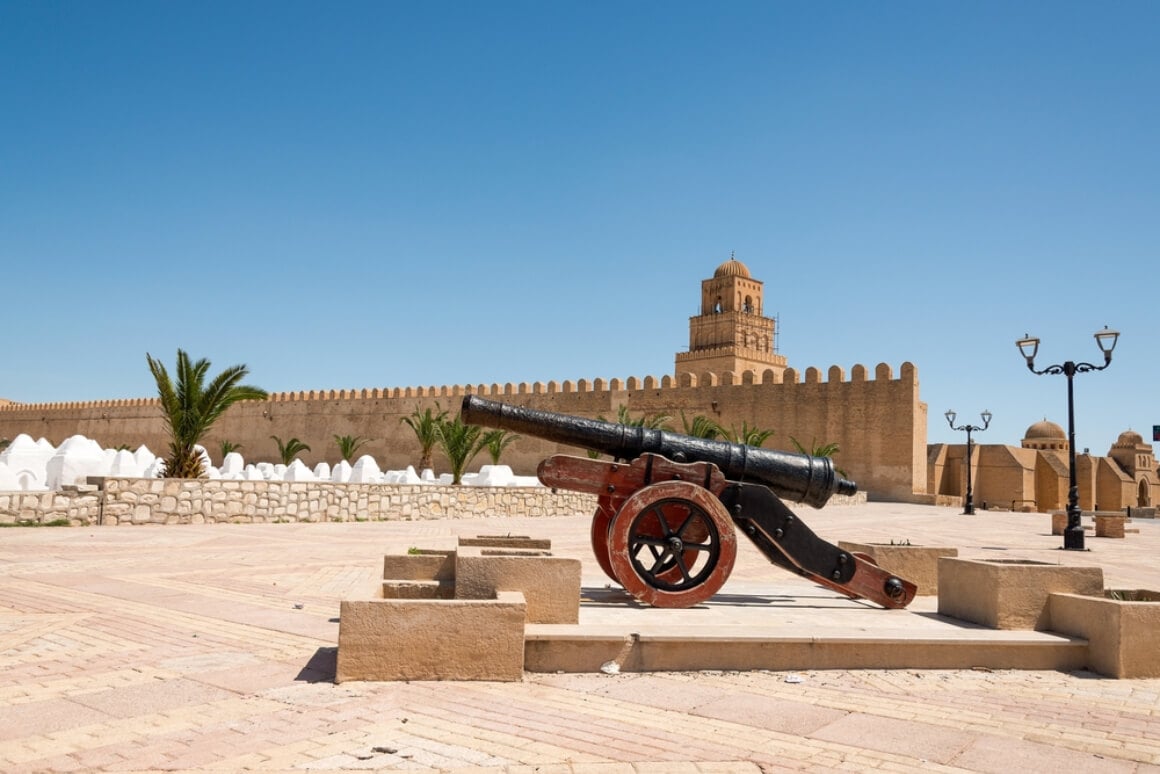
During the Roman era, Tunisia flourished as a province of the Empire. The grandeur of Roman ambition is in full view at the ruins of Dougga and El Jem’s imposing colosseum.
In the 7th century, Tunisia came under Arab rule, and Islam became the dominant religion. The medinas of cities like Tunis, Sousse, and Kairouan boast beautiful examples of Islamic architecture, such as the Great Mosque of Kairouan, one of the oldest mosques in Africa.
In the Middle Ages, Tunisia was a centre of learning and trade. It housed influences from various cultures, including Arab, Berber, Ottoman (whose empire was at the reigns for a few hundred years) and Andalusian. The medina of Tunis showcases the fusion of different architectural styles, with narrow alleys and intricately designed doors.
Next to arrive were the French, who conquered in the late 1800s. Tunisia gained its independence from France in 1956 and has since developed a unique modern culture, while preserving its rich history. (As a result, a great deal of the population speak French, so if you can remember any from school days, you’ll be cruising). The markets are known for their souks, where you can find traditional crafts and spices.
The Arab Spring
The modern history is no less dramatic. The Tunisian Revolution started in 2011 following street vendor Mohamed Bouazizi tragically setting himself alight, while standing in traffic outside the local governor’s office.
Protests against widespread corruption and inequality grew into a historic uprising. The revolution led to the overthrow of the authoritarian regime and president, sparked similar protests in other Arab countries, and is considered a catalyst for the Arab Spring.
Chatting to Tunisians throughout the country, you will get a real sense of the depth and variety of history that contributes to their completely unique identity.

Things go wrong on the road ALL THE TIME. Be prepared for what life throws at you.
Buy an AMK Travel Medical Kit before you head out on your next adventure – don’t be daft!
FAQs About Backpacking in Tunisia
Is tunisia safe to visit .
On the whole, Tunisia DOES feel safe to travel. An overwhelming proportion of people are extremely welcoming. Like everywhere, there are some areas that feel ever so slightly sketchy. The taxi ranks of the ferry port at night may qualify. Don’t be put off. Just be aware. Tourism in Tunisia saw an understandable decline around 2015, when three tragic incidents occurred in Sousse and Tunis. Since then, things have improved , and the vast, vast majority of visits are trouble-free . It is wise to avoid the borders with Algeria and Libya (as per most governments’ advice), and not to get stuck into any protests you come across. On the whole, I would be confident that travellers heading to Tunisia will be looked after and embraced with open arms.
Is Travelling in Tunisia Cheap?
Ah. The Office for Budget Responsibility has arrived. In short, yes. In Tunisia, absolute bargains are plentiful. There’s some really tasty value to be found in the food department, especially if you stick to local dishes and keep a lid on the beer consumption ( most of the time, a Gammarth night out is worth an exception). Follow the tips listed in this guide and Tunisia will remain an extremely affordable travel destination on the proverbial European doorstep.
When Should I Visit Tunisia?
A trip to Tunisia is worthy of your time, any month of the year. BUT, for desert dreamers, the summer is worth avoiding: most Saharan trips won’t be running from June to August. Therefore, we recommend September to May as optimal . Be aware when booking those tickets.
Final Advice Before Visiting Tunisia
On the road, I’ve met a handful of other travellers who found themselves in Tunisia. They all agreed: it’s a criminally underrated destination, made to measure for budget adventuring.
Remember to be respectful on your exploration! In visiting North Africa, we’re fortunate to be welcomed and experience a culture that may be very different from life back home.
Travelling amidst things like Ramadan requires an adequate dose of cultural sensitivity; in fact, Eid celebrations induce a superb atmosphere to get stuck into. Rest assured; if any questions pop up, just ask. Exploring with a positive attitude soon be repaid with great kindness and warmth.
You may go for the desert and the beach, but want to return for the people. The hospitality on display throughout Tunisia is truly special.
If you’re somehow still on the fence, honestly, just do it!
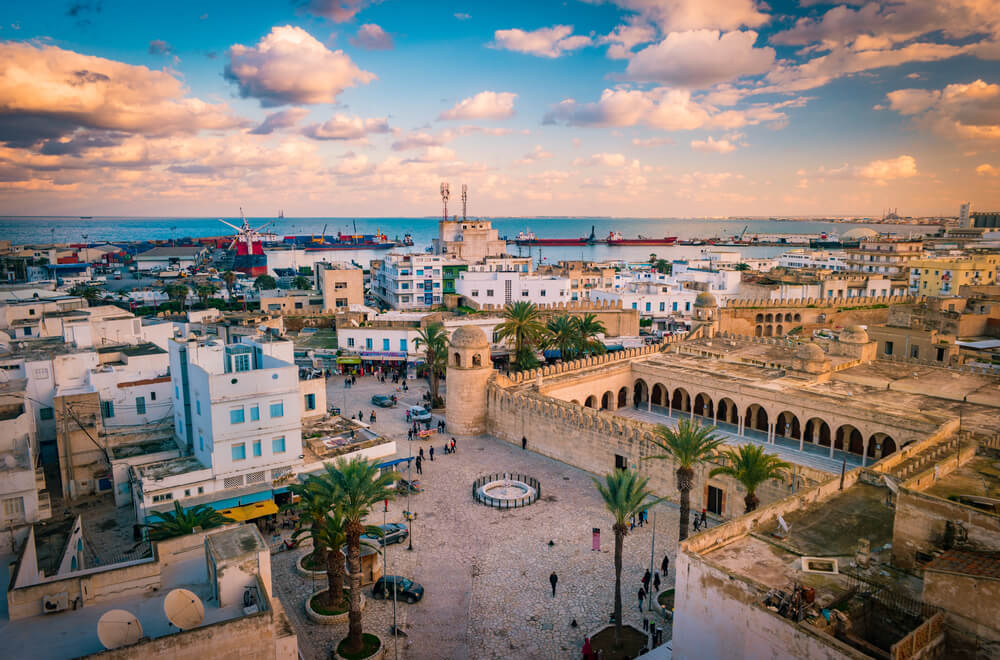
And for transparency’s sake, please know that some of the links in our content are affiliate links . That means that if you book your accommodation, buy your gear, or sort your insurance through our link, we earn a small commission (at no extra cost to you). That said, we only link to the gear we trust and never recommend services we don’t believe are up to scratch. Again, thank you!
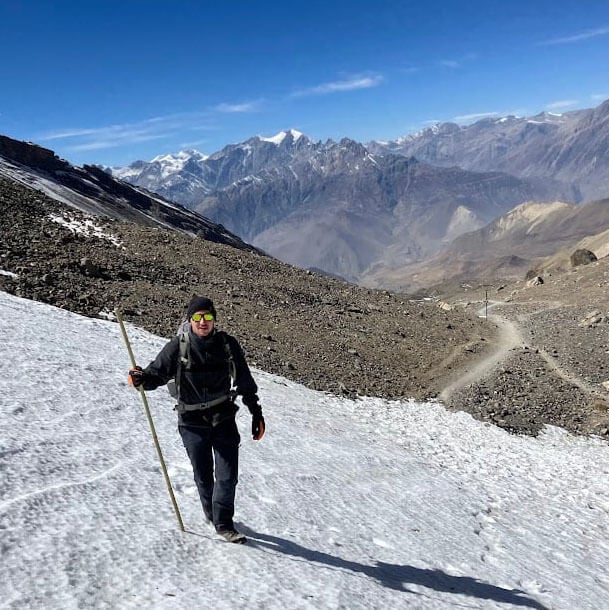
Share or save this post

Leave a Reply Cancel reply
Your email address will not be published. Required fields are marked *
Save my name, email, and website in this browser for the next time I comment.
Notify me of followup comments via e-mail.

VOICE OF GUIDES
Tunisia travel guide and itinerary (5 days, 7 days, 10 days).
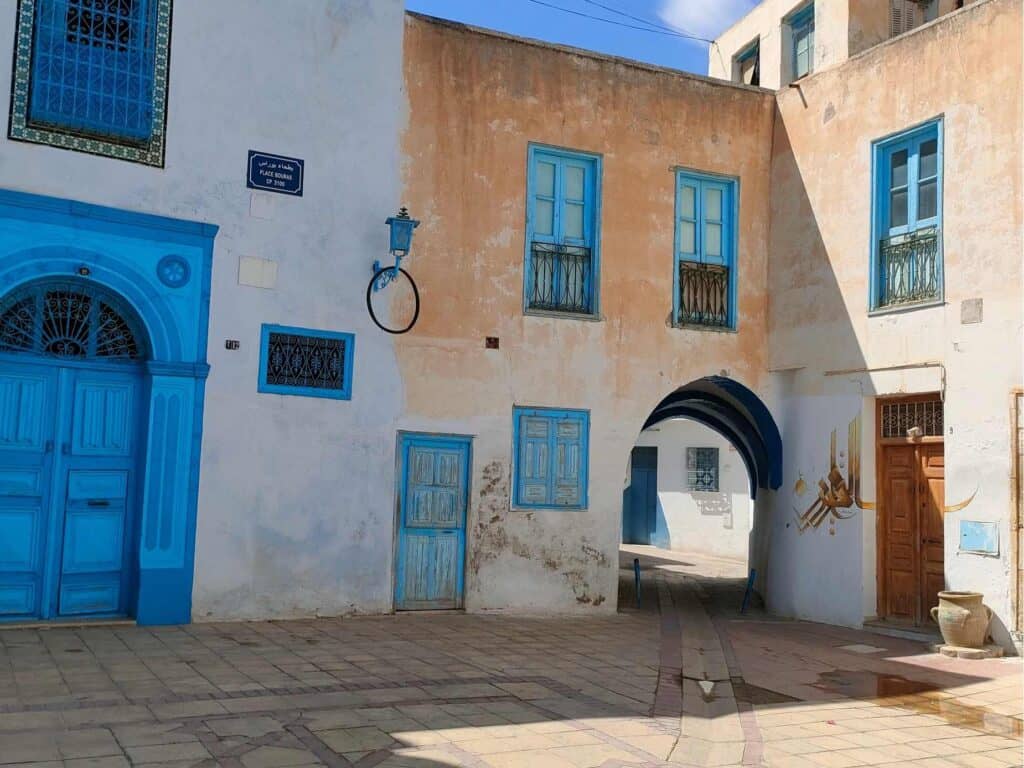
This article may contain affiliate / compensated links. For full information, please see our disclaimer here.
If you are new to Arab countries, Tunisia is a good option to start with. You can get there in only 2 hours with a flight from a couple of European cities. Although Tunisia is often identified with beach holidays, there is much more to see: the world’s biggest mosaic collection, a stunning amphitheater, Berber villages and their underground houses, desert activities, canyons and oases, charming medinas, forts, and mosques. Only to see the highlights, you need to spend one week in Tunisia. It is possible to travel around by public transport except in the southern part, but a road trip in Tunisia is also much less challenging than in other Arab countries, like Lebanon . Here you find a 5-day, one-week, and 10-day road trip itinerary that, with a few days added, you can also use for backpacking in Tunisia.
Visa to Tunisia
Citizens of many countries can visit Tunisia for up to 90 days without a visa, including the countries of the European Union. Check out if your country is among the visa-free countries.
Travel insurance to Tunisia
I always use SafetyWing for my travels, an affordable medical insurance that covers almost every country except Iran, North Korea and Cuba.
Getting to Tunisia
The fastest option to go to Tunisia is to take a flight.
Tunisia Air has direct flights from several European cities in Spain, Italy, France, Germany, and other Arab countries.
Here you can check flights with Tunis Air .
Air France also has several flights to Tunis from Paris.
It is good to know that the low-cost airline Easyjet has a direct flight from Geneva to Enfidha-Hammamet for as low as 35- 50 Euro for one way. It could be a great option if you arrive from Geneva or combine it with another flight.
Check the new flight aggregator, Wayaway , which lists low-cost airlines and, with one click, the prices with or without luggage. Plus, you get some cashback each time you book a flight. To get an extra 10% off the membership fee, use my discount code: VOG. You can make the most of it if you book your trip (flights, hotels, and tours) through Wayaway’s link to booking.com, GetYourGuide etc., in which case the cashback really makes a difference. I tested and wrote a separate article about it.
You can also check flights on Skyscanner and Google Flights .
You can arrive to Tunisia via land from Algeria; Oum Teboul is the main border between Tunisia and Algeria. However, I don’t have personal experience with this border crossing.
Ferry
You can get to Tunisia from France and Italy, which is the cheapest option. The common ferry routes to Tunisia:
– Genoa or Civitavecchia (Italy) to Tunis (Tunisia)
– Marseille (France) to Tunis (Tunisia)
– Palermo (Italy) to Tunis (Tunisia)
From Palermo to Tunis, it takes around 12 hours and costs 40-50 USD. It becomes, of course, much longer and costs much more if you start from Genoa. The ferry from Marseilles also takes around one day and costs approximately 100-130 USD. There is no daily ferry, so you must carefully check the schedule in advance.
You can book your ferry ticket to Tunisia here.
What is the best time to visit Tunisia?
It depends on what you want to do. July – August is considered as peak season when prices are the highest and tourists arrive in masses.
However, if you plan a cultural roundtrip, either backpacking in Tunisia or making a road trip, you had better avoid both the summer and winter months. The temperature becomes unbearable in the desert during summer and gets surprisingly cold during winter, and most places don’t have heating. Since only a few tourists come at this time of the year, prices drop significantly.
For the deserted southern area, late September to November and March to early May is the best period. At this time, however, it is a bit cold to go swimming.
I was traveling around Tunisia from north to south at the beginning of May, when the temperature was pleasant, on some days, even hot. Once the temperature rose to 38 degrees in the southern part, so we decided to escape to Djerba island, which was only 100 km away, but it was even a bit too cool to enjoy the beach. I was surprised to see that Djerba has a different microclimate. Fortunately, the temperature dropped in the deserted part the day after, and we could continue our visit. As you see, high temperatures can still occur at the beginning of May, but generally, it is still not too hot.
It can be interesting to attend the Oasis festivals of Douz and Tozeur in December and January despite the colder temperature.
Books to read about Tunisia
Bradt Tunisia: the best and most up-to-date travel guide will be released in June 2023
Lonely Planet Tunisia: it is a good base but a bit outdated
Tunisia culture smart: You can learn about religion, history and life, and all the essentials before traveling to Tunisia
Tunisia, an Arab Anomaly : This excellent book gives you a better understanding of what makes Tunisia different from other Arab countries, its recent history, and its culture.
Interesting facts about Tunisia
– Tunisia has a Western-style working week with Saturday and Sunday off
– The Bardo Museum in Tunis has the world’s biggest mosaic collection (temporarily closed, check out if it reopened before your visit)
– Tunisians speak Tunsi, the local dialect that people of Arab countries outside the Maghreb don’t understand
– The first Arab country to adopt a constitution in 1861
– The only Arab country where nonbelievers are not prosecuted for apostasy
– Tunisia is one of the most progressive countries in the Arab world in terms of women’s rights
– The first non-European country to sign an association agreement with the European Union in 1995
– The Arab Spring that spread over the Arab countries started with the protests in Tunisia after the self-immolation of a vegetable seller in Sidi Bouzid
– “Harissa” is a hot chili pepper paste making most meals spicy
– The “English Patient” and the “Star Wars Trilogy” were shot in Tunisia.
– Olive trees are everywhere, making Tunisia one of the world’s biggest olive oil producers in the world
What is the most popular food/street food in Tunisia?
When we talk about Tunisian food, you must know about harissa. It is a red sauce made from dried crushed chili, garlic, and salt. Harissa is the reason why making almost every Tunisian food is spicy.
Regarding Tunisian cuisine, there’s much more than just couscous, the national dish of the Maghreb, which can be served with meat or seafood. While it’s a must-try, there are many other Tunisian specialties. Having an expansive coastline, seafood and different kinds of fish are easy to find. Tuna fish is also widely used in salads and sandwiches. As mentioned earlier, La Goulette, with a whole street of fish restaurants, is a perfect place to try it.
Merguez: spicy lamb or goat sausages
Ojja is a dish of eggs poached in a sauce of tomatoes, harissa, and onions. There are several ways to make it with sausages (merguez), seafood, chicken, or eggs.
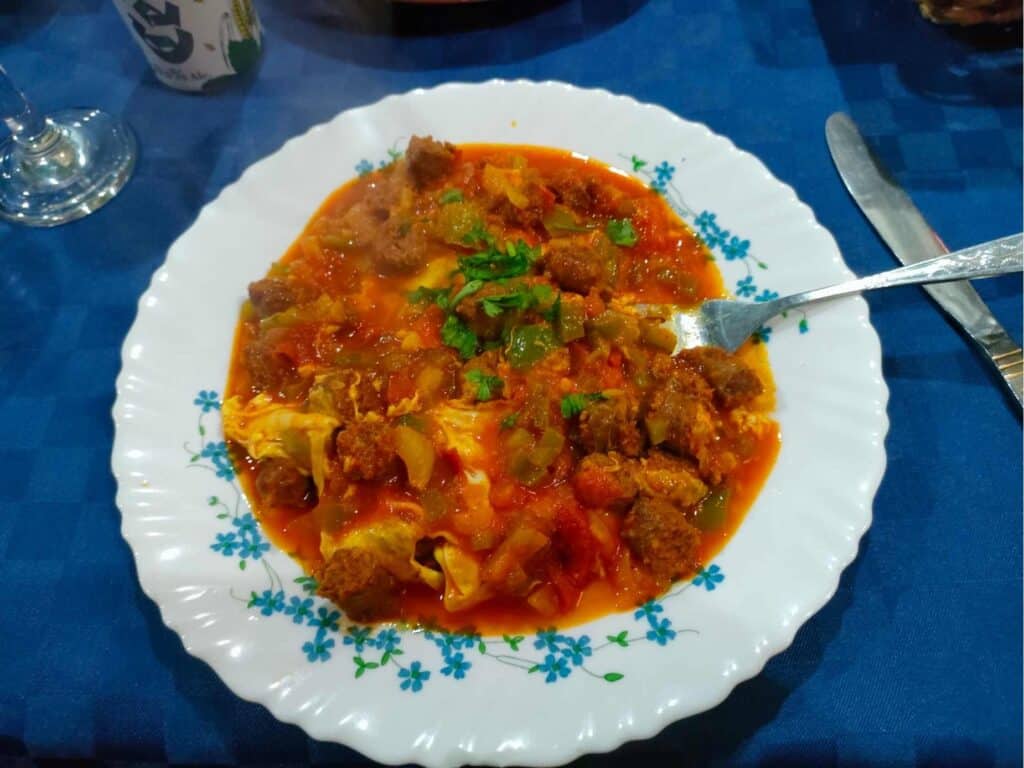

3. La Goulette
Grab only a snack in Sidi Bou Said, as the best way to finish your day is to have dinner in one of the fish restaurants in the port city, La Goulette. At the weekends, all the restaurants get packed with locals. Most restaurants are casual but have a great atmosphere and the best place to try the fish in Tunisia.
We chose a menu with fish soup and appetizers, including the Tunisian brik, fish, and seafood. This cost 25 000 TND.
How to go to La Goulette?
La Goulette is the closest stop to Tunis, along the TGM.
Day 3: Uthina, Thuburbo Majus, Sousse
Uthina archeological site.
I only heard about Uthina the day before from our driver in Carthage. Uthina was one of the oldest towns in the province of Africa that became a Roman colony for veterans. He showed some photos of this archeological site located 35 km from Tunis. It looked impressive in the pictures, so we decided to check it out. If you are fond of archaeological places, I recommend including this hidden gem in your itinerary.
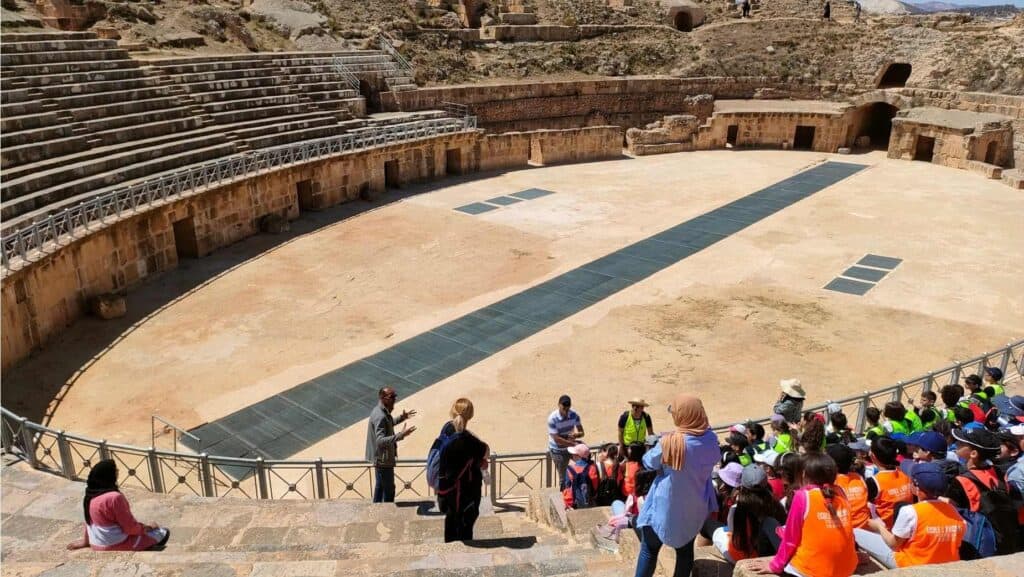
by Agnes Simigh
I’m a passionate tour guide and travel writer, who is curious to discover places that seldom catch the attention of the media or that are misrepresented. My goal is to inspire you to choose off-the-beaten-track destinations by sharing objective and detailed information. I believe that it is mainly the lack of “intel” that keeps us away from incredible places. And that just shouldn’t be the case.
2 thoughts on “TUNISIA TRAVEL GUIDE AND ITINERARY (5 DAYS, 7 DAYS, 10 DAYS)”
Amazing travelogue
Leave a Comment Cancel Reply
Your email address will not be published. Required fields are marked *
Save my name, email, and website in this browser for the next time I comment.
Privacy Overview
- TRAVEL ITINERARY PLANNING
- Ladakh Kashmir budget group tour
- TRAVEL RESOURCES
- BEST TRAVEL BLOGGING COURSES
- BEST VIRTUAL CITY AND COUNTRY TOURS
- TRAVEL GIFT IDEAS
- WAYAWAY CHEAP FLIGHTS
- Bosnia and Herzegovina
- South Africa
- El Salvador
- Bosnia and Herzegovina
- North Macedonia
- Czech Republic
- Transnistria
- Liechtenstein
- North Cyprus
- New Zealand
- Map with posts
- Alternative Guides
- Architecture Guides
- Cafe Guides
- Itineraries
- Neighborhood Guides
- Travel Guides
- Travel Tips
- Photo Galleries
- Photo Locations
- Solo female travel
- Train Travels
- Work with me
- Privacy Policy
Tunisia Travel Guide – All About Visiting Tunisia
Planning holidays in Tunisia? You will not be disappointed! The country was one of my best travel discoveries recently; I was so impressed with all the remarkable monuments, historical sites, UNESCO World Heritage Sites, beautiful landscapes, hospitable locals, and friendly vibe. Whether you are traveling to Tunisia to relax on the beach or to explore this fascinating country, you are in for a treat.

I put together this Tunisia travel guide to help you prepare for your trip to Tunisia with all the info you might need. In this article, you will find all you need to know about visiting Tunisia and having a hassle-free time there. Read on, plan your trip, and enjoy Tunisia!
Planning a trip to Tunisia?
Here are the services I always use and personally recommend:
- Accommodation : I always book a place to stay on Booking.com
- Tours: when I decide to go on a tour I use either Viator or Get Your Guide .
- For transportation and booking tickets online , I usually use 12Go or Omio
- Looking for the airport pickup ? Check Welcome Pickups!
- If you plan to rent a car during your trip to Tunisia check Discover Cars to compare prices and find the best deals
- Get insured for your trip to Tunisia with SafetyWing
Table of Contents
Basic information on Tunisia
Where is tunisia.
Tunisia, a country of over twelve million inhabitants, is located in North Africa, on the shore of the Mediterranean Sea. It neighbors Algeria on the west and Lybia on the east.
Why visit Tunisia
For some reason, Tunisia isn’t as popular among tourists as nearby Morocco and Egypt , yet the country offers exceptional sights and monuments and perfect opportunities for relaxing holidays at the sea. It is also not so spoiled by tourism as the two countries mentioned above, which makes visiting Tunisia so much easier and more pleasant.
If you are looking for exceptional Roman ruins, vibrant yet charming medinas, beautiful architecture, stunning views, or even some alternative sites – Tunisia is a place for you. There are so many great places to visit and things to do in Tunisia that you will be impressed with all the country has to offer!

Planning a trip to Tunisia
Best time to visit tunisia.
The best time to visit Tunisia is spring (April-May) or autumn (October-November). The weather is good then, perfect for relaxing on the beach and sightseeing. Summer months can be too hot even for sun lovers.
I visited Tunisia in early January, and it was perfect for sightseeing, with mostly sunny days and temperatures around 15-20C (sometimes even more). There were also very few tourists around, making sightseeing much nicer.
Insurance for Tunisia
I believe you should always have insurance when you travel as you never know what might happen, and better safe than sorry. And the same goes for a trip to Tunisia. You can buy travel insurance with the trusted company, SafetyWings, here .

Visa for Tunisia
Most nationalities don’t need a visa for a stay of up to 90 days. If you are from some countries in Africa, Asia, or South America, chances are you need a Tunisian visa before entering the country. You can get it in the embassy of Tunisia near you.
Before planning a trip to Tunisia, be sure to consult the website of the Tunisian embassy or your local Ministry of Foreign Affairs to check if a visa is required.
How to get to Tunisia
Unfortunately, Tunisia is not on the route of low-cost airlines, so getting there might be a bit tricky and expensive (that’s the most budget-consuming thing about visiting Tunisia). I flew with Air France via Paris, but you can also fly directly to Tunis from Rome, Cairo, Casablanca, Doha, Frankfurt, Istanbul, or Dubai. Check the local airline Tunisair, too, as it serves many direct flights to European airports.
Another good option to fly to Tunisia might be a charter flight. They serve primarily tourists who decide to go for resort holidays, but you don’t need to buy the whole package to use them; you can get the flight ticket only and use them too. Charter flights usually go to popular holiday destinations in Tunisia, which include the airports of Djerba, Enfidha–Hammamet, and Monastir.
I was considering flying charter to Tunisia, but flights from Poland were only once a week, on Thursdays, and the price wasn’t much lower than Air France that I used (where I could choose the dates that suited me). It’s worth checking charter flights, but in the end, the regular flight might still be your best option.

How many days for visiting Tunisia
The optimal time for visiting Tunisia is 10-14 days. This way, you can see all the highlights and best attractions in Tunisia as well as relax a bit at the seaside. Of course, the more, the better, but even with only one week in Tunisia, you can see a lot.
I spent ten days in Tunisia and was satisfied with what I saw then. Still, I wouldn’t mind spending an extra day or two simply doing nothing and enjoying the laid-back atmosphere of the seaside.
You can read my detailed 10-day Tunisia itinerary here.

What to see in Tunisia
Tunisia offers so many amazing places to visit, and what makes it a great destination is the diversity of attractions. Spectacular Roman ruins, incredible vibrant medinas, long sandy beaches, charming towns, and so much more – Tunisia has it all!
Some of the best places to visit in Tunisia (that I was lucky to see) are:
- Tunis – the capital of the country, with beautiful, UNESCO-listed medina and interesting architecture from the French colonial period
- Carthage – impressive ruins of the Phoenician city from the 6th century BCE and the most significant trade metropolis of the antique world, another UNESCO World Heritage Site
- Sidi Bou Said – a charming town on the coast just outside of Tunis, famous for its traditional white-blue houses and winding lanes
- Bulla Regia – an impressive archeological site known for its Hadrianic-era semi-subterranean housing and numerous mosaics still left in place
- Dougga – one of the best and most well-preserved Roman ruins I’ve ever seen, a massive site packed with original buildings from ancient times, another UNESCO site
- Testour – a 16th-century shelter for the Muslim and Jewish refugees from Andalusia who gave a distinctive look to the town
- El Jem – home to one of the best preserved Roman amphitheaters in the world, dating back to the 3rd century, included on the UNESCO World Heritage List
- Sousse – the third largest city in Tunisia, with UNESCO-listed medina and a great Archeological Museum, famous also for its long and sandy beach
- Kairouan – another UNESCO place, the town is known as a holy city in Islam, with incredible medina and stunning Great Mosque, among other attractions
- Djerba – the island is popular as a holiday destination for its long and sandy beaches, but you can also find there some alternative sites such as the town with over 200 murals or numerous abandoned hotels
- Ksar Ghilane – an Oasis on the edge of the Sahara desert
- Chenini – an old Berber village built into the mountains, partly abandoned
- Tataouine – the city is known primarily thanks to the Star Wars movies; you will find in and around the place numerous inspiration and filming locations for great films
Other interesting places that I missed but are still worth visiting include numerous seaside towns perfect for relaxing holidays (Hammamet, Nabeul, or Monastir), Chott el Djerid (the vast salt lake), Sbeitla (another ancient town), Matmata (the Berber village and the Star Wars filming location), or Tozeur and nearby mountain oasis villages.

How to get from Tunis airport to the center
Apparently, some infrequent buses run between the airport and the center of Tunis, but I’ve never seen them (and in total, I was four times at the Tunis Carthage airport). The best option is to take a taxi. The fair prices I found online are 30 TND in the day and 45 TND at night, but everything depends on the negotiation skills and meter use.
Fortunately, in Tunis, you can use Bolt cars and find the ride in the app. That’s what I did in Tunis, and I never paid more than 10 TND (that included my tip) for the ride between the airport and the center, doesn’t matter what time of the day I was going (once I had to be at the airport around 5 in the morning and price for Bolt was 6 TND at that time).
Since the area around the airport can be confusing for finding the car, I suggest going outside to the roundabout and getting the ride there (here is the exact location). It is so much easier and stress-free this way. When I arrived, I couldn’t find my driver at the airport, and eventually, we met at the roundabout; the second time, I went directly there and ordered my ride from that point.

How to get around cities
Again, taxis are your best option. In Tunis and Sousse, you can use Bolt, and that makes everything so much easier. In other places, like Djerba, you can use regular taxis. I found the taxi drivers in Djerba honest, and I wasn’t scammed even once there; usually, I even paid less than I assumed for the ride.
How to get around Tunisia
Tunisia doesn’t have very well-developed railway lines; however, you can use the train during your trip, especially on the Tunis – Sousse – El Jam route. You can find the schedules here, at the official website of Tunisian Railways.
The trains are a bit old but surprisingly comfortable, and the journey doesn’t take that long, although delays happen. There are two classes on the train, and I recommend getting tickets for the 1st class as they are not much more expensive, but the comfort level is much better.
Since I’m used to getting tickets in advance, just to be sure I have a seat secured, I went to the train station in Tunis shortly after arriving to get all my tickets. As it turned out, there was no need for that as everyone got the tickets just before the departure. You can go to the train station 15 minutes before the train and get the ticket there.
While the coach and seat are indicated on the ticket, no one cares about that, so sit wherever you want to, as long as the class is correct.
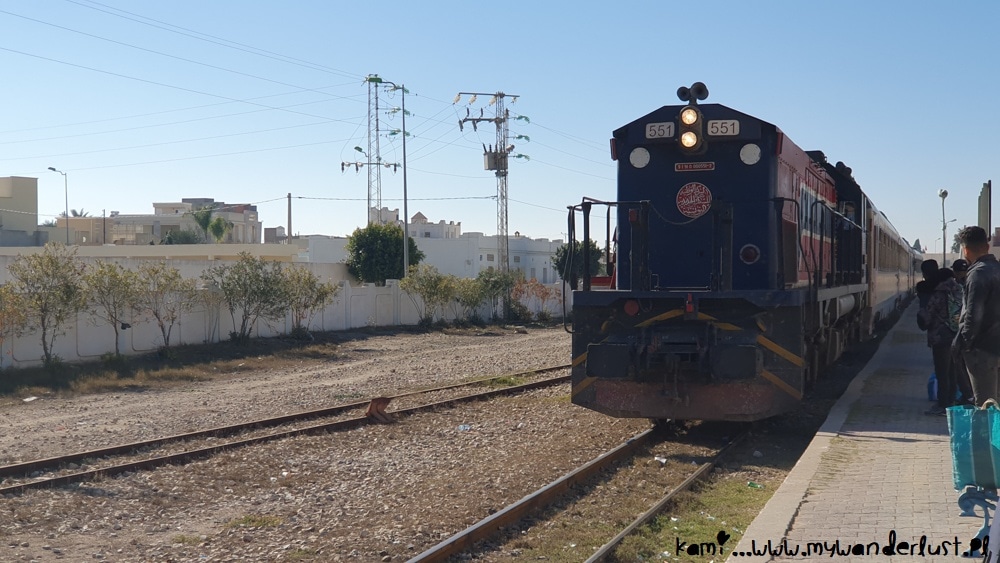
You can also take the suburban train from Tunis to Carthage and Sidi Bou Said. They depart frequently from the small Tunis Marine station, just a short walk away from the clocktower in the center of the city.
You buy the ticket in the window just before entering the platform – the same system works everywhere on this line. The ticket is really cheap, less than 1 TND for the ride from Tunis to Carthage or Sidi Bou Said.

Louages are the most popular way to travel around Tunisia. These minibusses can fit up to 10 people and depart when full. The whole system might look hectic, and the louages station can be a bit overwhelming, but everything is relatively straightforward and easy.
In bigger stations, you can find the signs with destinations, but even if they are not there, someone will tell you where to go so you won’t be lost for too long. You buy the ticket for the route you are interested in, and then you are pointed to the right car; once all the passengers arrive, you are ready to go.
I took louages from Sousse to Kairouan and back, and I never had to wait more than 5 minutes to go. As for the comfort, it depends on what kind of car you will get. On the way to Kairouan, the louage was jammed, and even if it was only an hour-long journey, my knees weren’t happy. However, on the way back to Sousse, it was spacious, and I could have easily gone in this kind of car for a few hours.

If you are short on time in your itinerary or don’t want to spend too many hours in louages, consider flying within Tunisia. At first, I was planning to take a louage from Sousse to Djerba, but it takes around 6 hours, leaving me with not enough time to explore the island, so I’ve decided to take the plane from Tunis to Djerba. And it was a perfect decision.
The flight was operated by Tunisiar Express and served by smaller planes – ATR 72. There is no online check-in, so you still need to wait in the queue at the airport, but at least you get checked luggage in the price. The flight time between Tunis and Djerba is around one hour.
Another place you might consider flying to/from is Tozeur, right in the heart of the Sahara, in the central part of the country, some 450 km away from Tunis.
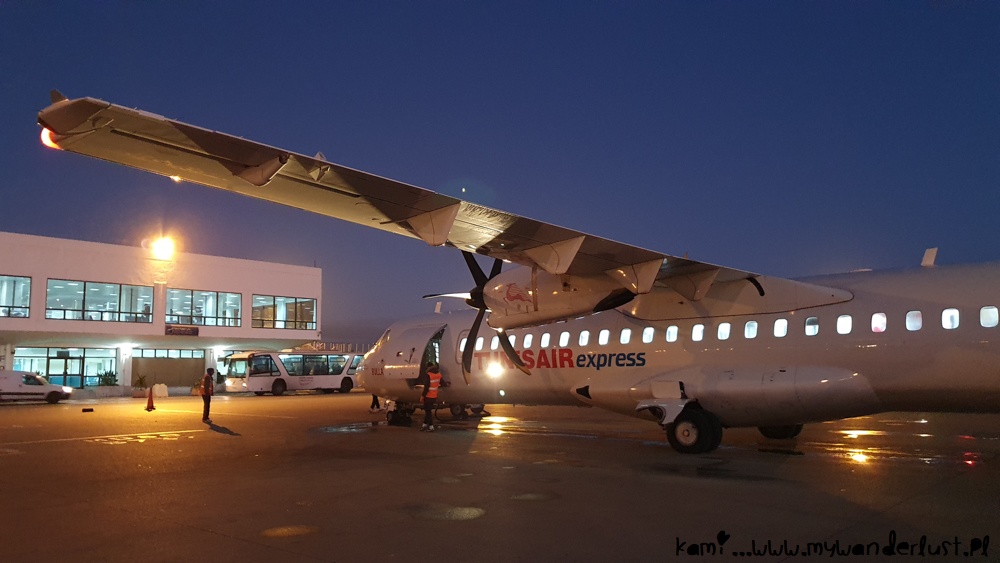
Unfortunately, not every interesting place and tourist attraction is reachable by public transport in Tunisia (or it’s too much hassle if you’re in the country only for a short time). That’s why it’s worth considering the tour. They might be a bit expensive, but in most cases, they are definitely worth it as the places you visit are pretty impressive, and it would be a pity to miss them when visiting Tunisia.
I went on two tours during my trip, from Tunis to Dougga and Bulla Regia and from Djerba to the Sahara desert and Chenini. I booked both of them in advance on Viator , and I was really satisfied with the choice as both tours and all the places were incredible. I booked both tours in advance, before arriving (that’s my preferred way of planning a trip), but I think you might also get them organized by your hotel when you are in Tunisia.

Language in Tunisia
The official language in Tunisia is Arabic, but French is widely spoken due to its history and connections with France. If you know French, you are good to go. I had to try really hard to remember some basic French from when I learned it at school some 20 years ago.
Getting around with English can be complicated as it’s not that popular, and sometimes it’s a bit hard to communicate with people only in English. But everyone is friendly, and they will do their best to help you and make you feel welcome even with the language barrier.
Money in Tunisia
The currency of Tunisia is the Tunisian dinar (TND). At the time of writing this article, 1 TND was worth 0,30€ or 0,33$. The banknotes are 5, 10, 20, and 50 TND; the coins are 5, 10, 20, 50, 100, 200 millimes, and 1/2, 1, 2 and 5 dinars.

Getting money in Tunisia
There are plenty of ATMs around where you can get money in Tunisia. Most of them charge a small fee for withdrawing money, usually 10-12 dinars – what’s interesting is that sometimes the fee varies even among the ATMs of the same bank. The only ATM that didn’t take a fee was the STB bank ATM in the arrivals at Tunis airport, just after the passport control but before collecting the luggage.
I used ATMs a few times and never had any issues, but I always use ATMs located at the bank, just in case. I also used my Revolut card.
Payment by card
Unfortunately, paying by card isn’t very common in Tunisia, so having cash with you is better; consider it when taking money from an ATM. I used a card only a handful of times, in hotels and at the airport; everywhere else, I paid by card.

Prices in Tunisia
Tunisia is, in fact, a very affordable country, and I was surprised by the prices there. To give you a few examples: a 3-star hotel in Djerba, with breakfast, was less than 30€/night, the first class train ticket from Tunis to Sousse was a bit over 3€, a hearty meal in one of the best restaurants in Sousse medina was 10€ and a quick fast food lunch was around 3€. The bottle of water is around 0,40€ and the bottle of cola around 0,80€. The fresh orange juice is around 1€. The cappuccino in Tunis cafe with the exceptional view of the medina is 2€.
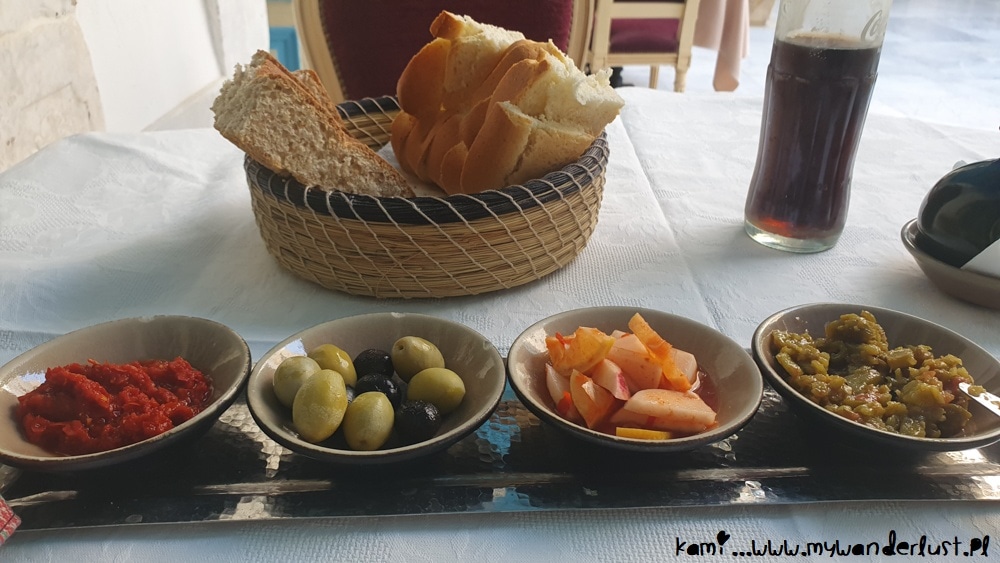
Entrance fee to attractions
Most attractions and monuments require a ticket, which is another really affordable thing in Tunisia. I paid between 5 and 12 TND for entrance fees.
If you decide to go to the Sahara desert, most likely you will go to the oasis Ksar Ghilan. You can go a bit into the desert on a camel or a quad there. The prices for around a 45-minute trip are 10€ for a camel or 30€ for a quad.

Safety in Tunisia
The most common question I got about traveling to Tunisia was about safety. As you might remember, in 2015, Tunisia was targeted by ISIS. Two of three terrorist attacks that took place then were aimed at tourists (in the Bardo Museum in Tunis and the seaside resort near Sousse). Since then, tourism in Tunisia really collapsed as people were afraid to travel to a potentially dangerous zone.
But a few years have passed, and Tunisia slowly gets back on the travel map, with more and more travelers deciding to visit the country. Most of them are, however, going on resort holidays or organized tours.
During my trip to Tunisia, I’ve barely seen independent tourists besides me, and exploring such an unpopular place was an interesting experience. But I’ve never really felt unsafe there. Quite the contrary, actually, as everyone was friendly and welcoming. I was expecting a bit of the hassle in tourist spots, similar to those you get in Morocco or Egypt, but during my whole stay there, I had only one encounter with the annoying local who insisted on showing me around the medina in Kairouan – he was quickly yelled at by the local lady from the shop and run away.
That said, you must follow safety rules like everywhere else and use common sense. Before your trip, check the warnings of your local Ministry of Foreign Affairs to see if there is any part of Tunisia that you should avoid.
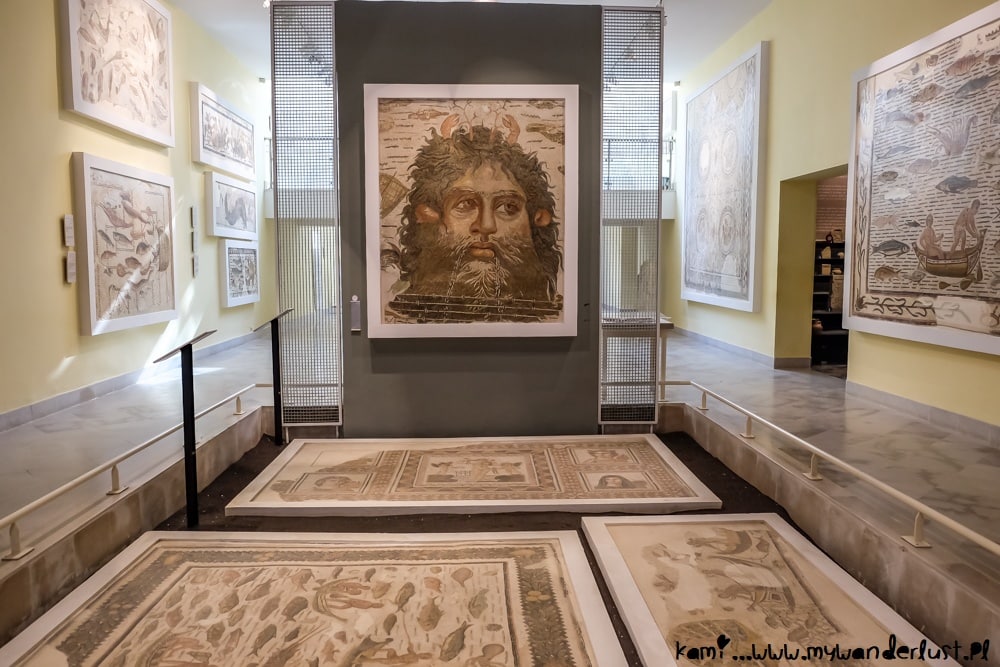
Solo female travel in Tunisia
I can’t count how many times I’ve heard the question of why I’m traveling solo in Tunisia (my usual answer was, “Why not?”). The concept of solo female travel isn’t popular there, and people couldn’t get why I’ve come there alone. But even if they didn’t fully understand, they were still very friendly and hospitable.
I didn’t have a single situation where I felt unsafe. The only time I felt more self-conscious than usual was when I was exploring abandoned hotels in Djerba, but it had nothing to do with the danger and more to do with my mind playing tricks. If you follow basic safety rules and your intuition, you will be fine.

Internet in Tunisia
Internet in Tunisia isn’t as widely available as you might wish. You can connect to wifi in hotels or some restaurants and cafes, but I would generally not rely on it too much. In two out of three hotels I’ve stayed at, I used my mobile data to surf online as wifi was too poor or acting up.
SIM card in Tunisia
As soon as I landed at Tunis airport, I got myself a local SIM card with internet data. There are three mobile phone networks you can choose from (Ooredoo, Orange, Tunisie Telecom), I went for Orange as their stand was the first one, just after passport control. There, I got a free SIM card with only a few bites included, but I went to the Orange shop in the arrivals, where they put the local SIM card in my phone and added extra bites. I paid 20 TND for 6 GB, which was more than enough for my trip. Maybe I overpaid, but then I saved the money on the Bolt ride from the airport versus taking the taxi, so I was good with that price.
When traveling around Tunisia, I didn’t complain about the network coverage. The only place where my Orange network didn’t work, but the other one (Tuntel) did, was the Sahara desert and near it.
You can also get a eSIM with Airalo for your trip to Tunisia, this way you will stay connected without all the hassle of getting a local SIM card. Click here to get the Airalo eSIM.

What to eat in Tunisia
The most popular food you can try in Tunisia is couscous, apparently the best in the world. It is prepared with spicy tomato sauce; you can choose different additions: meat, fish, or vegetables. Other dishes you might want to try include ojja – spicy tomato sauce with poached eggs and merguez; soups (like chorba or lablabi); tajine – the Tunisian version is made of eggs, potatoes, onion, garlic, parsley, grated cheese, happy cow cheese, salt, pepper, and turmeric (and then some extras, such as chicken, shrimps, or spinach), omek houria (spicy carrot salad), and tabouna (a traditional Tunisian bread).

Vegetarian in Tunisia
I was surprised by the challenge of being a vegetarian in Tunisia. In many of the restaurants, there was not a single vegetarian option on the menu, but as I quickly learned, it was not a problem at all. Everywhere I asked, they did something vegetarian for me – usually couscous with vegetables, which was so delicious I didn’t mind eating it every second day. Sometimes, it was a less fancy meal – an omelet or rice with salad, but the point is, I never was hungry.
Just a word of warning – if you can, treat the local pizza as a last resort. I had it twice, as it was the only option, and in both cases, it wasn’t the best food I’ve ever had. It was edible, of course, and I didn’t feel bad afterward; it just wasn’t very tasty, and I think the cheese was to be blamed for it.
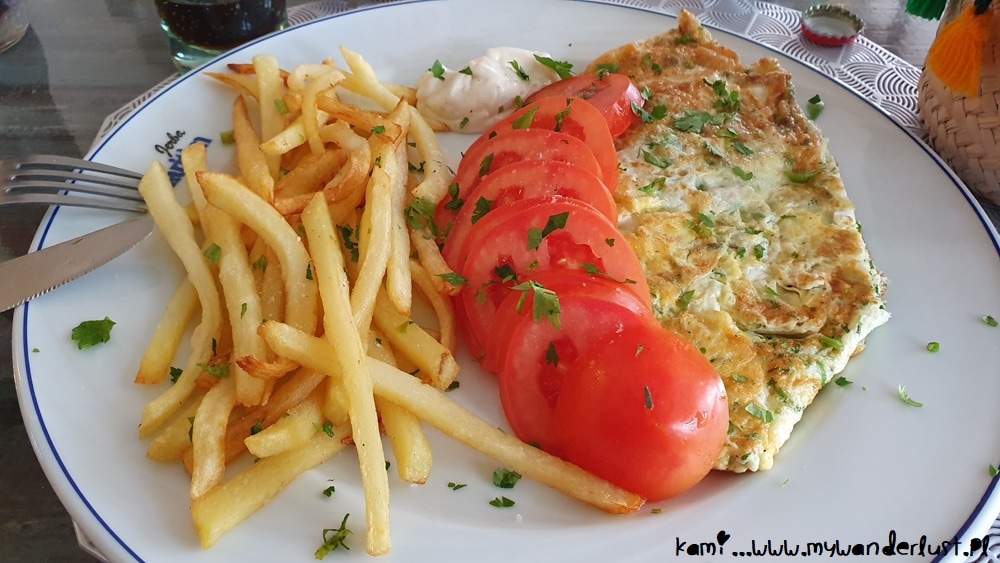
What to drink in Tunisia
The absolute best thing you can drink in Tunisia is freshly squeezed juice, most often orange, but sometimes you can also find pomegranate. You can get it in most cafes and restaurants as well as from random vendors around, and usually, it’s very cheap, like 2-3 TND for a cup. I had it every single day (sometimes a few times), and it never got boring!
Another local drink I enjoyed was the mint tea. I’m a huge black-tea-no-sugar drinker, but somehow, I enjoyed this overly sweet drink. I was familiar with this kind of tea already from Morocco, but I still ordered it numerous times during my trip and enjoyed every single cup.
Alcohol in Tunisia is legal, but you are not allowed to drink it in public spaces, such as beaches, parks, etc. You can buy it in bigger stores; alcohol is also served in some restaurants and resort hotels in popular tourist destinations.

Where to stay in Tunisia
Since Tunisia is a popular seaside destination, you can find numerous hotels, including big resorts, along the Mediterranean coast. When it comes to staying in less popular places, the choice is smaller but still there.
You can find a place to stay and book your accommodation on Booking , that’s what I did too.

Power plugs in Tunisia
Tunisia uses type C and E power plugs; the European plugs work fine there.
Useful apps
The two most useful apps for me in Tunisia were Bolt for ordering taxis in Tunis and Sousse and Google Translate, which I downloaded in French and Arabic before the trip. I also used a lot of maps.me and Google Maps when getting around.

I can’t recommend visiting Tunisia enough. It was like a better version of Morocco or Egypt, with great ancient sites and bustling medinas but without many scams, overwhelming tourism, and annoying situations. It’s a matter of time before the country becomes a tourist hotspot again, so hurry up and visit Tunisia soon and enjoy all the greatness it has to offer.

Travel Resources
Below you can find the brands I trust and use when planning trips:
- You can find the best accommodation options at Booking . They have many discounts and excellent customer service. Click here to look for the place to stay in Tunisia
- I recommend joining organized tours to get to know the place better and to visit more places during your trip. You can find a great selection of tours at Viator or Get Your Guide .
- To always stay connected I use Airalo eSim cards – click here to get yours!
- Never travel without travel insurance , you never know what might happen and better safe than sorry. You can check the insurance policy for Tunisia here.
- Make sure to have the offline map always installed on your phone, they can save you so many troubles. I always use the free app Maps.Me .
For the end I left a few announcements that might interest you:
- Sign up to my newsletter or follow me on Bloglovin to get updates about the new posts
- Join my Facebook group about Eastern Europe, the Balkans and former USSR and connect with fellow travellers and enthusiasts of these regions – just click here!
- I’ve included a few handy links of services and products I personally like and use so you can plan your own trip to Tunisia too. They are often affiliate links. This means I will get a small commission if you book/purchase anything through my links, at no extra costs for you. Thank you!
LIKED IT? PIN THIS POST FOR LATER!

If you enjoyed that post why don't you share it with your friends? That would mean so much to me! Also be sure to join 30.000+ fellow travelers and follow me on Facebook , Twitter , or Instagram for travel updates and even more pictures! If you don't want to miss new posts sign up to my newsletter or follow on Bloglovin !

12 Comments
ALI KHAMMASSI
Hi Kami, I’m a licensed tunisian guide, i just want to thank you for the great job that you did and that you are doing. You’ve been a very good ambassador for my country .
Thank you. I really enjoyed my trip to Tunisia and I’ll gladly recommend the country to other travelers.
Hi Kami yours are the most helpful infos i found on tunisia. Just 1 question. Aren’t there any mini buses? I know them from kenya and türkiye. One can get on and off anywhere. No bus stop needed. Have you seen those too?
There are no minibuses like for example in Eastern Europe but there is a shared public transport with louages. I wrote about them in this article.
Thank you so much for writing this blog! We just visited Tunisia, and there isn’t a lot of quality information out that. Super appreciation all of the information, we used your blog non stop as a guide to help!
Thank you for your kind comment, I’m really happy you found my blog useful for your trip. All the best!
Charles Stewart
Hi Kami –
I’ll be in Tunisia in March and just read your travel guide. You’ve provided some very helpful tips and answered any question I might have at the planning stage. Excellent intro to an unfamiliar country…thank you!!
I’m very glad you found it useful. Have a wonderful trip to Tunisia! I’m sure you will enjoy this fascinating country!
BENJAMIN ABOSI
Thank you for sharing your tourism experience in Tunisia, the information is very interesting and I will like to get more of your traveling experiences. I wish to be your friend because I love traveling a lot.
I’m glad you found this article useful. All the best!
Jennifer diPretoro
Thank you for such a great article about Tunisia–I’m planning a trip in early April and this is enormously helpful !
I’m glad to hear that! Have a wonderful trip!
Leave a Reply Cancel Reply
Sign me up for the newsletter!
Let’s become friends!
Join me on Facebook for even more travel updates!
Kami and the rest of the world
Travel to Tunisia in 2024: Tips + Itinerary
By Joan Torres 20 Comments Last updated on April 12, 2024

From the most epic Roman ruins in Africa to crystal Mediterranean beaches, the Sahara and a great Berber culture, Tunisia is a small piece of land with a lot to offer and is a great alternative to Morocco as, basically, you get a similar Maghrebi culture with the difference that many parts of Tunisia remain unvisited and the country is mostly free of the classic scams.
The golden era in which Tunisia used to be a prime tourist destination came to an end with the 2015 terrorist attacks – unfortunately – but, even during those times, the vast majority of visitors were resort-like tourists, the most adventurous ones visiting the most typical tourist attractions on an organized tour.
Even my parents visited Tunisia for a few days many years ago, but went there with everything organized.
This means that Tunisia hasn’t really witnessed the arrival of independent travelers and I believe this is one of the things that make any trip to Tunisia a great travel experience, as you will be continuously meeting curious, kind-hearted locals everywhere you go.
No more than a few hours from any European city by air, this is perhaps, the closest and easiest exotic, offbeat destination to visit during your 1 or 2-week holiday.
This guide contains everything you need to know to travel to Tunisia , including travel tips and a compelling 2-week itinerary.
I also recommend you read: How to visit Tunis in 3 days
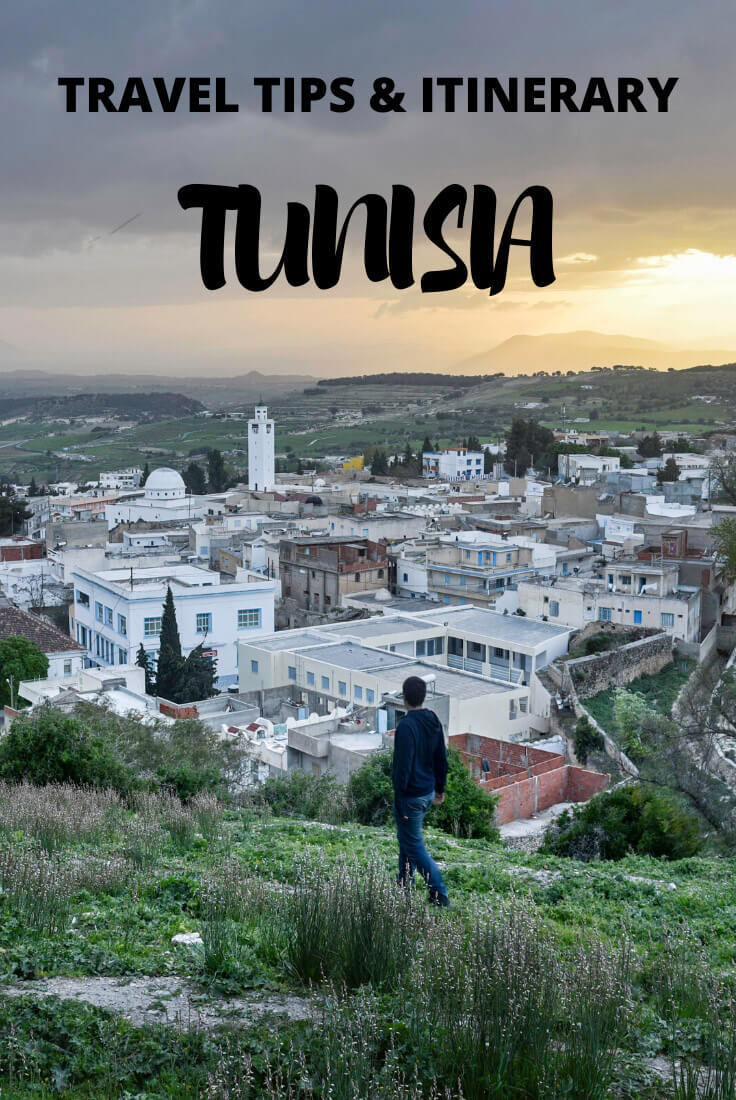
In this Tunisia travel guide you will find:
Table of Contents
- Getting there
- Travel insurance
- Best time to visit
- Tour or not?
- The people, the country
- Moving around
- Is it safe?
- Day 1, 2 – Tunis
- Day 3 – Sousse
- Day 4 – Monastir
- Day 5 – Kairouan
- Day 6 – El Jem
- Day 7 – Sfax
- Day 8, 9 – Tataouine & around
- Day 10, 11 – Tozeur & around
- Day 12 – El Kef
- Day 13 – Jugurtha Tableland
- Day 14 – Dougga
- More information
eSIM for browsing, calling and planning your itinerary in Tunisia
With Holafly , you can now get an electronic SIM card for Tunisia from home with just 2 clicks.
5% discount with the following code:
AGAINSTTHECOMPASS
🪪 How to get a tourist visa for Tunisia
Pretty much any nationality can get a 3-month visa-free on arrival.
🛫 How to get to Tunisia
How to travel to tunisia by air.
Tunis International Airport has connections with several European cities and other major cities in Africa. I recommend you check on Tunisair and Skyscanner. I personally flew from Barcelona with Tunisair.
How to travel to Tunisia by land
Tunisia has a border with Algeria and Libya .
- Algeria – You can travel to Tunisia from Algeria and use the entry point near Tabarka – not sure if foreigners can use the other borders.
- Libya – You can’t really cross from Libya, not because the border is closed but because, currently, Libya is not issuing tourist visas and the only way to get in is via an agency who will fake a business visa for you, and they don’t recommend you enter or exit via Tunisia, as it would not be credible that you came to Libya for business purposes.
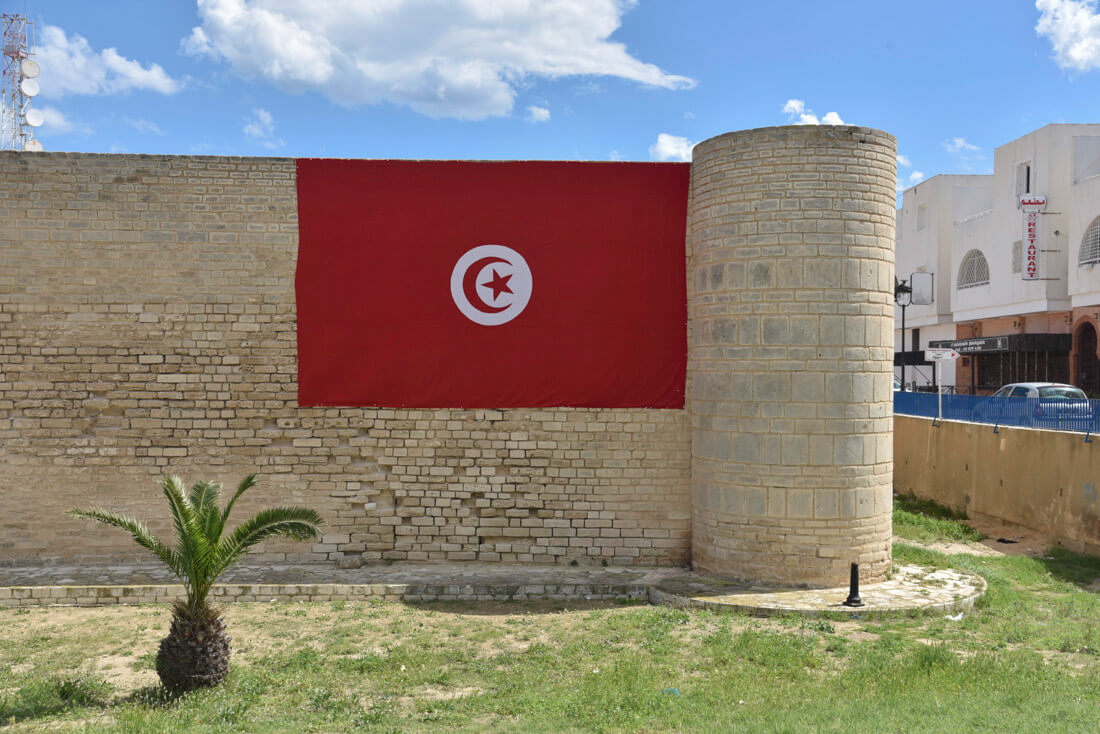
🚑 Travel Insurance for Tunisia
For Tunisia, get IATI Insurance :
- All types of plans: from families to budget backpackers
- Covers both short-term trips and up to 1-year long trips.
- Covers senior citizens too
- Readers of this blog can get a 5% exclusive discount
⛅ Best time to visit Tunisia
The best thing about Tunisia is that this is really a year-round destination.
The northern part of the country is purely Mediterranean, with mild winters and hot summers so, if you fancy the beach, July and August should prove best, and towns and cities are great to visit any time of the year. The arid south, however, is best visited in winter, otherwise, the heat might not let you enjoy it that much.
I visited Tunisia for 3 weeks from mid-April to the beginning of May and it was the perfect time. The weather in the northern part was absolutely pleasant, with a little rain sometimes, and the heat in the southern part was still quite bearable.
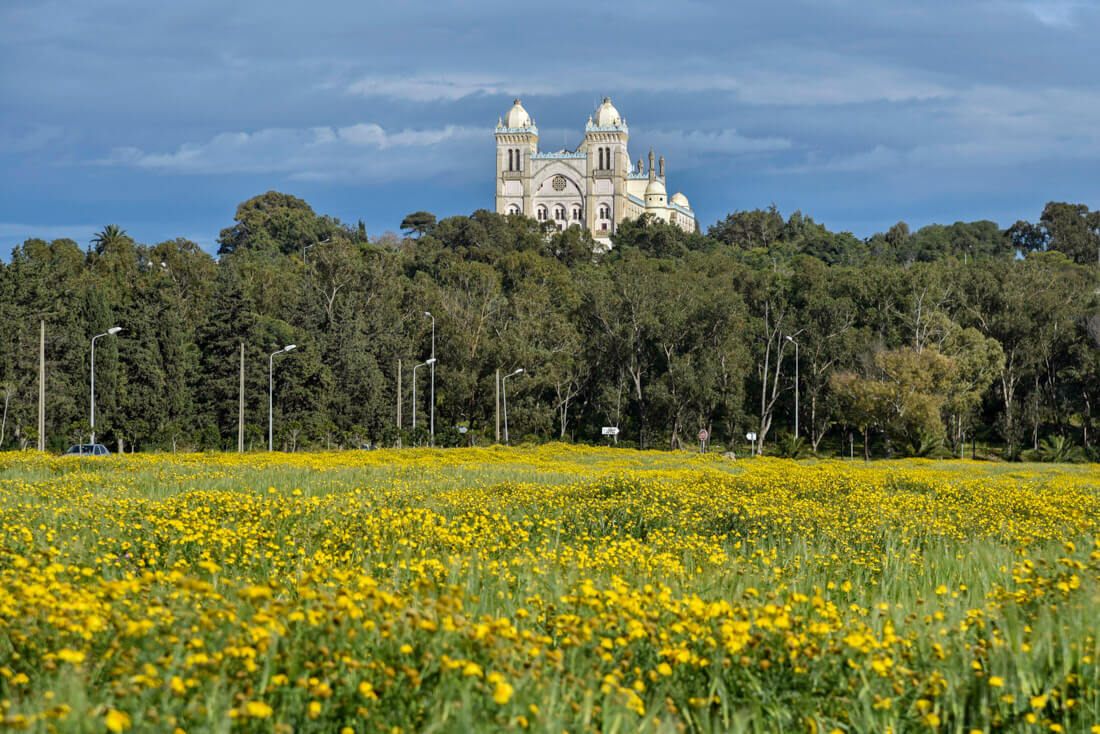
Should you travel in Tunisia independently or on an organized tour?
I visited Tunisia 100% independently, and I recommend you do the same.
However, if you are short of time and want to visit specific places on organized tours, I recommend you use GetYourGuide , a website where you can book any type of tour, from half-day trips to several-day tours with just one click.
🕌 The people and the culture
They are too African to be considered European, but they are too European to be considered African.
These are the words from an expat American woman living in the city of Tunis who I had the chance to meet during my trip to Tunisia.
Along with Beirut , Tunis might be the most secular and open-minded Arab city and you just need to go to the city center and see how people dress.
You find traditional, religious people too, of course, but the beauty of Tunis, and Tunisia in general, is that everybody is free to practice Islam the way they please and, on most occasions, you won’t be judged.

This is why in Tunis you are likely to see a young girl with a short skirt walking in a local market among other women wearing the full hijab, a mix you will rarely see in other Arab countries.
Sousse, Monastir and Sfax are other modern cities with a significant number of liberal people, especially among the young generation.
However, religion still plays an important role in Tunisia’s society. Even Tunis has its traditional districts and the rural areas are very conservative.
But what is true is that in Tunisia there isn’t much fundamentalism compared to other Arab nations and countries in the Middle East.
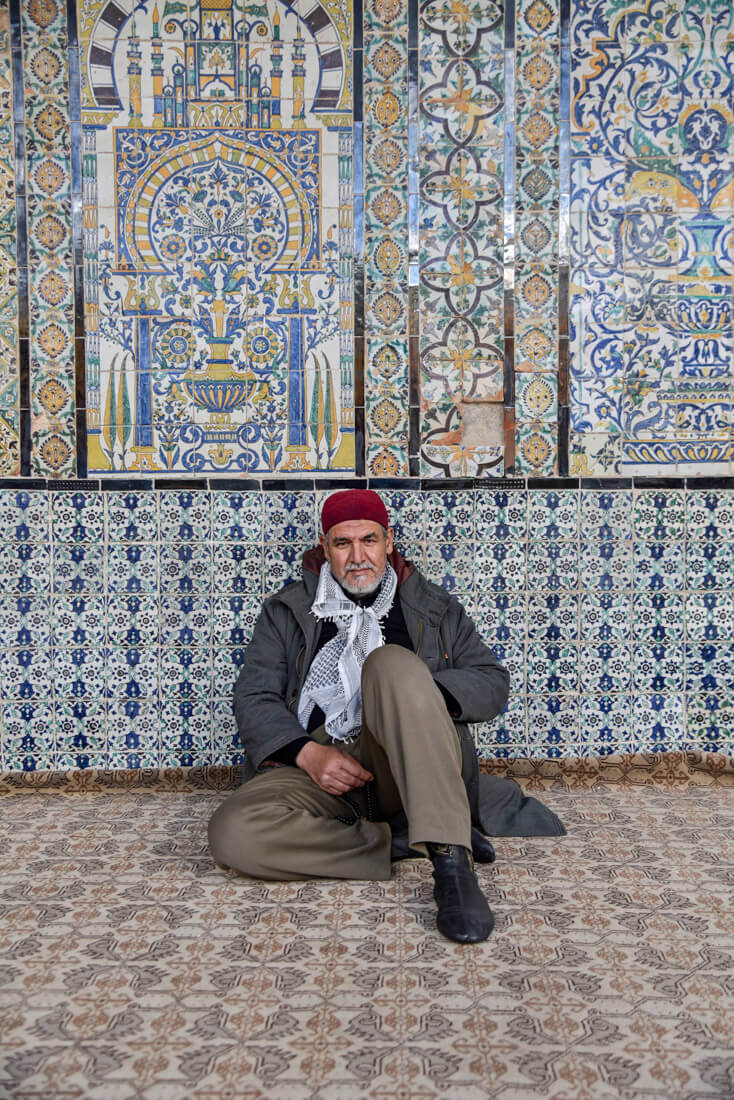
Arabic is the official language in the country, and I believe it is quite similar to the Arabic spoken in Morocco and Algeria.
However, it is very different from other Middle Eastern countries, from Egypt to Oman .
In fact, they don’t even understand each other. When I was living in Dubai, in my office there were Arabs from all the Arab countries and Tunisians would always address Middle Easterners in English.
French & English – Given this used to be a French colony, except for uneducated people from rural areas, pretty much everybody in the country speaks impeccable French, and the best educated Tunisians also have good English, so traveling in Tunisia doesn’t imply any language barrier.

🍲 Food: What can you eat when you visit Tunisia?
Just before my trip to Tunisia, I had spent around 5 weeks in Morocco, so I wasn’t really expecting to taste many different flavors, but I was very wrong.
First of all, Tunisian food is extremely spicy. Like a lot spicy, sometimes Indian-level spicy.
I don’t know why, but Tunisia must be the only Mediterranean country that uses chilis in their cuisine. They love it and also a chilli sauce named harissa , which they put everywhere.
One Tunisian lady told me that every time she travels to Europe, even if it is just for a few days, she always brings some harissa .
Moreover, due to its proximity to Italy, Italian food is a thing here, and the truth is that spaghetti with tomato sauce is a staple, something you can order in any local eatery for less than $1 sometimes, but it isn’t very good pasta to be honest.
Overall, Tunisian food is good, however, whereas in the city of Tunis (and Sousse as well) I had quite a few feasts, in the rest of the country most places would only serve very basic stuff, especially in the south, Tozeur and El Kef.

Must-try dishes in during your trip in Tunisia
- Brik – The most popular snack in Tunisia consists of a filled fried pastry, usually with egg or tuna. By the way, Tunisians love tuna.
- Ojja – Sort of a tomato stew that comes in different versions, from local sausage ( mergez ) to seafood. Ojja is available in pretty much any local eatery.
- Cous-cous – Maghrebi star-dish, and the Tunisian version is very spicy.
- Seafood – In the coastal towns of Tunisia you can find some really great seafood, the most remarkable I ate being some stewed octopus in a tomato gravy, absolutely tender and delicious. I ate it in Sousse, in a restaurant called Cafe Bellar.
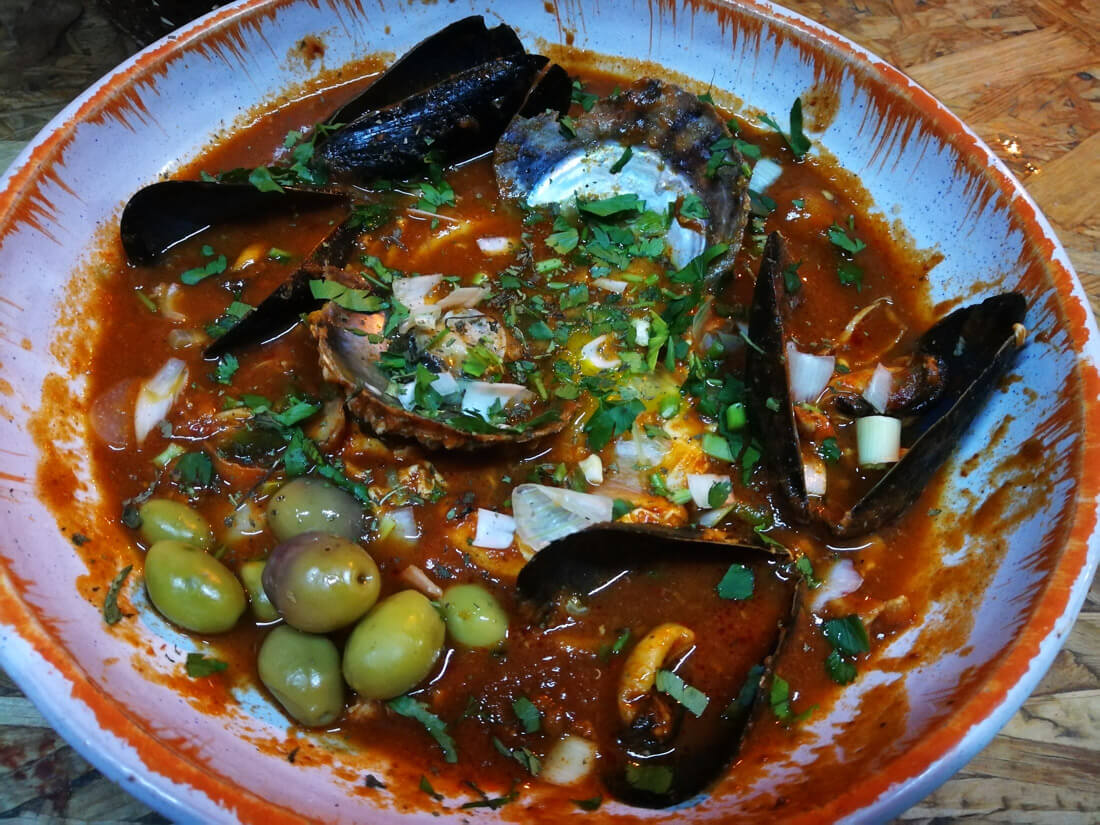
🛺 How to move around: transportation
Remember to get travel insurance for Tunisia I strongly recommend IATI Insurance as it has COVID-19 coverage + 5% discount 5% discount if purchasing via this link
Typically, there are 2 ways to travel around Tunisia:
Traveling around Tunisia by train
The Tunisian train is great. It is reliable, relatively fast and just soooo good. There is a train line that goes along the coast all the way to Gabés and, as far as I am concerned, the whole line is fully operational.
During my visit, however, the line that connects Tunis with Gabés through Tozeur, in the west of the country, had been closed for several years, but it seems they have already resumed all trains. In any case, you can check timings on the official railway website .
Traveling around Tunisia by louage
Louages are the local mini-vans which basically, you will ride for traveling to places you can’t reach by train. I used them to travel to Kairouan, El Kef and Tozeur and some places in the south. They are very cheap.
💰 Money, budget and costs
In Tunisia, they use the Tunisian Dinar (TND) and approximately:
1 USD = 3.15 TND
Most cities will have ATMs and changing either € or USD should be very easy.
How much does it cost to travel to Tunisia?
Tunisia is cheap, much more than Morocco, mainly because of the currency’s devaluation after the massive drop in tourism. Cost of the most typical things:
- Street sandwich (falafel) – 1-2 dinar
- Local meal (1 ojja) – 5 dinars
- Meal in a good restaurant – 20 dinars
- Entrance fees to places like Dougga ruins, ribats, fortresses, museums – 8 to 12 dinars
- Budget hotel – 20-30 dinars
- Mid-range hotel – From 40-50 dinars
- Transportation – I paid around 4-7 dinars for most train journeys, same for louage.
On a tight budget, I seriously think you can go backpacking in Tunisia for $ a day 20.
Please note that the below table is just an approximation.

⚠️ Is it safe to travel to Tunisia?
Tunisia has had some safety concerns in the past, especially throughout 2015, and that was the main reason why tourism dropped dramatically.
However, the situation has improved drastically and for a better understanding, I recommend you read my analysis:
Is Tunisia a safe country to visit?
Tunisia Itinerary – Places to visit in 2 weeks
How long should you go backpacking in Tunisia for?
I personally spent almost 3 weeks, went a bit slower than the suggested itinerary and visited one or two additional places not included here such as Djerba Island.
Tunisia 2-week travel itinerary map
Day 1, 2 – Visit the capital of Tunis
A third Mediterranean, a third European and a third North African, Tunis is a city with many cultural contrasts and most likely, the starting point of your Tunisia travel itinerary.
On the one hand, the old city is composed of an African, Maghrebi medina, not very different from the ones you would find in Morocco, but without the feeling of being in a tourist trap.
And, on the other hand, you also have the European part of town, which is filled with French-style facades, boulangeries and a relatively Westernized atmosphere.
In addition, think about all the nightlife, nice restaurants, the Roman ruins of Carthage and the Mediterranean-like district of Sidi Bou Said, and I seriously believe that traveling to Tunisia just for visiting Tunis is truly worthwhile.
Things to do in Tunis
I spent whole 5 days in Tunis, and managed to squeeze the things I visited in a 3-day travel guide
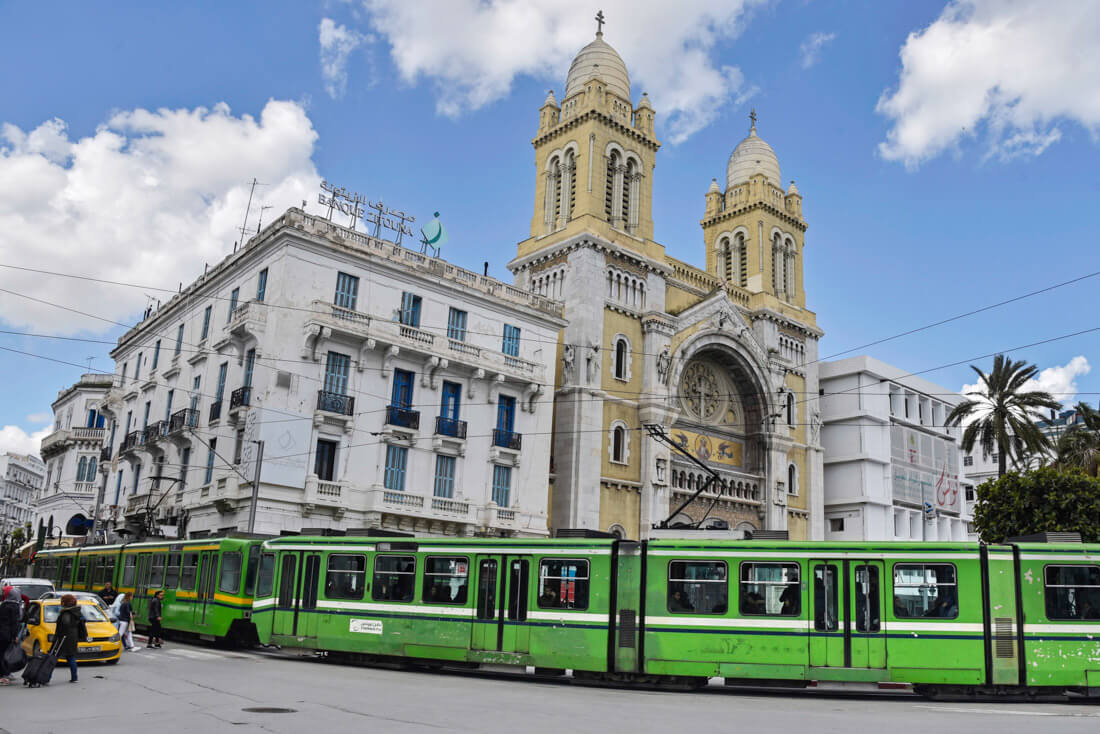
Where to stay in Tunis
Backpacker Hostel – Medina Youth Hostel – Located in the heart of the medina, this is the most backpacking-friendly hostel in Tunis.
Mid-range hotel – Dar La Leila – Super nice, traditionally decorated lovely hotel, the top-rated hotel in Tunis, and super charming staff.
Top-end hotel – Dar El Jeld Hotel and Spa – A 5-star but traditional hotel that offers all the luxuries.
Best tours in Tunis
I recommend you look for tours via GetYourGuide .
Carthage and Sidi Bou Said – Roman ruins of Carthage and the Santorini-like city of Sidi Bou Said.
Bardo Museum & Medina – The classic medina + the museum containing one of the largest collections in the world of Roman mosaics.
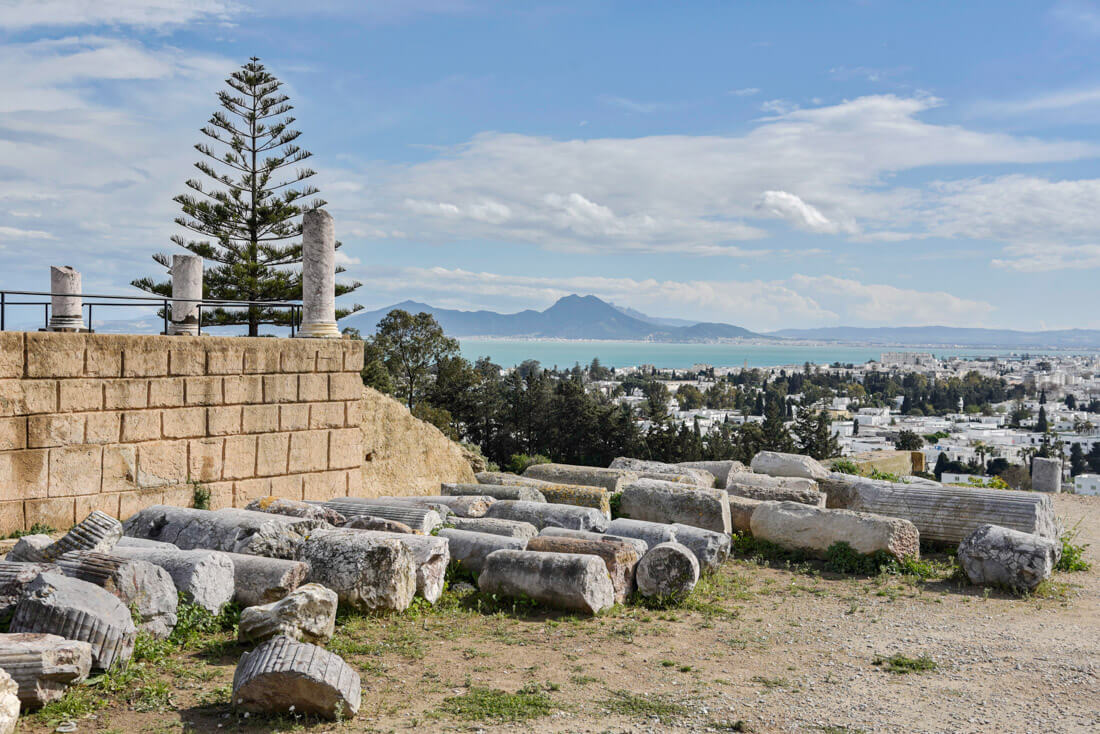
Day 3 – The resort-like town of Sousse
This is the prime tourist destination in the country, for foreigneirs and Tunisians alike, but for independent travelers, it feels a bit odd.
It feels weird because the coastal front line of the new part of town is composed of ugly, mass tourism-like buildings, restaurants with over-priced menus and just the kind of trashy tourism I would try to run away from.
However, Sousse is the city that witnessed all those unfortunate terrorist events from 2015 , so during my visit in the month of May, it felt like a real ghost town and, in any case, the old part of Sousse is a great place to get lost in, among its narrow alleys.
Moreover, Sousse is a good base to explore a few places around such as Kairouan, Monastir or El Jem. I mean, you can find accommodation in those cities but Sousse has the largest offer of hotels, restaurants, and cafés so, for me, it made sense to hang out there for a while.
Looking for visiting Sousse on a tour? CLICK HERE TO CHECK ALL AVAILABLE TOURS IN SOUSSE
Things to do in Sousse
- Medina – Like all medinas in Africa, the medina of Sousse is a maze of streets where the highlight is getting lost and escaping from the main souvenir area.
- Great Mosque – From the 8th century. They make you pay an entrance fee, a bit unusual for being a regular mosque, but Tunisia is mostly like that.
- Ribat – Old Islamic fortress from the 8th century. It contains one of the oldest praying halls in Africa.
- Sousse Archaeological Museum – I am the least museum-friendly person but I loved the museum of Sousse because it contains some of the largest collections of Roman mosaics, including a massive one of Medusa . Check the official website for timings.
Ribat – A ribat is a small Arabic fortress typically found along the northern African coast, and built during the first years of the Muslim conquest. Most coastal towns in Tunisia have their own ribat and they tend to be pretty well-preserved. The word ”ribat” means ”defense of Islam”.

Where to stay in Sousse
Budget/backpacker – Hotel Paris – Basic hotel with relatively good Wi-Fi inside the medina. I stayed here.
Mid-range – Dar Antonia – Traditional, fancy dar in the medina.
How to get to Sousse from Tunis
There are several trains a day running to Sousse from Tunis central station.
A ticket would typically cost 10,000 dinars and it takes a bit more than 2 hours.
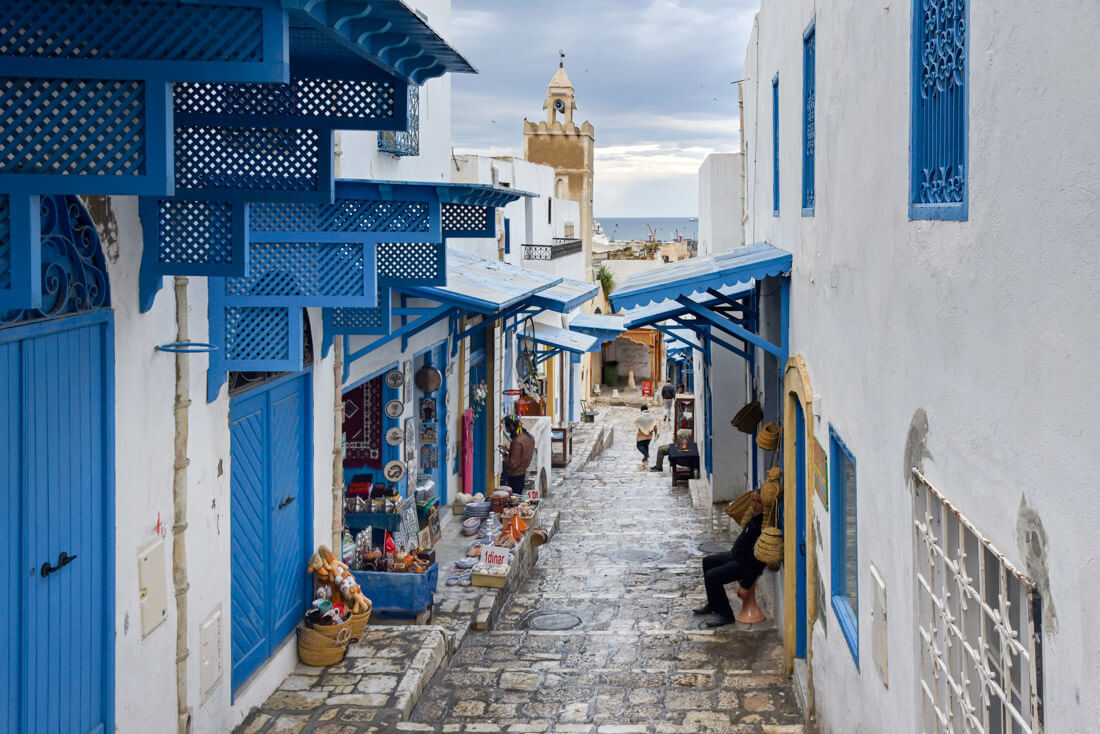
Day 4 – Day trip to Monastir
If you have the time, Monastir is a pleasant town that was founded as a Phoenician trading settlement more than 2,000 years ago.
Monastir is a peaceful, free-of-crowds town, as the touristic area is quite far away from the center, so it has managed to keep a certain charm, plus in my opinion, Monastir has the most well-preserved ribat in the country, a set of labyrinthic passages and stairways that seem taken from a movie.
Moreover, Monastir is the birthplace of Habib Bourguiba , the man who lead the country to independence from France and ruled the country from 1956 to 1987.
Other than that, Monastir is an all-right place to hang around for a while.
My visit here was a peculiar one. After visiting the ribat , I met with one local lady who had contacted me through Instagram and she took me to the local radio station’s offices – she was working there – and I kind of kept staring at what they were doing for a while.
Then, we went to Habib Bourguiba’s mausoleum.
You can also visit Monastir on an organized tour (along with Sousse) from Tunis. CLICK HERE TO LEARN MORE
How to get Monastir from Sousse
Monastir is a 20km train ride from Sousse and trains run continuously throughout the day for $1 or less.
The Great Roman Civil War Do you know about the famous Roman Civil War between Julius Caesar and Pompey ? It was the war that led Rome from a Republic to an Empire, and the last stage that guided Julius Caesar to victory occurred on the battlefield between Sousse and Monastir. The coolest thing about it is that today’s Monastir was Caesar’s base, and Sousse was Pompey’s. They even made a TV series on Netflix.
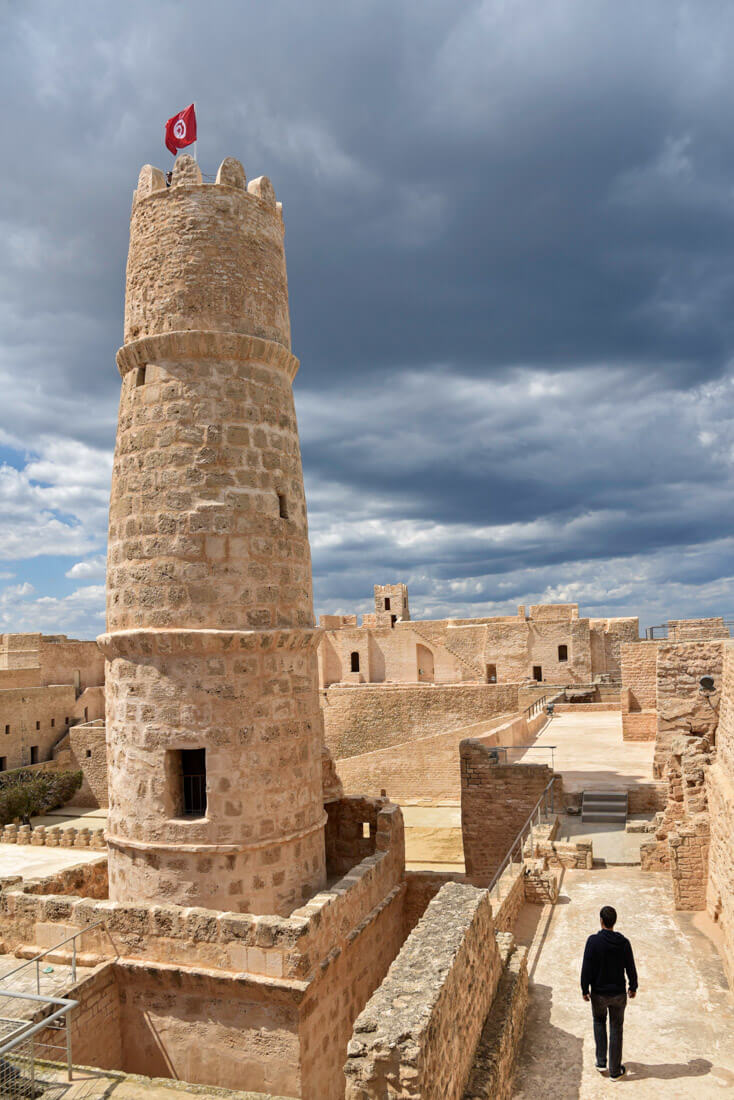
Day 5 – Day trip to Kairouan, the holiest city in Tunisia
Some sources claim Kairouan is the holiest Islamic city in Africa, and the fourth in the world after Mecca, Medina and the Dome of the Rock in Jerusalem.
I am not sure about that, however, because I have been to other places in the Middle East and Africa with the same claim but it is a fact that this is the holiest place to visit in Tunisia and the atmosphere is so different from anywhere along the coast, so low-key, so traditional and overwhelmingly welcoming.
Interested in visiting Kairouan on a guided tour? CLICK HERE TO SEE ALL AVAILABLE TOURS IN KAIROUAN
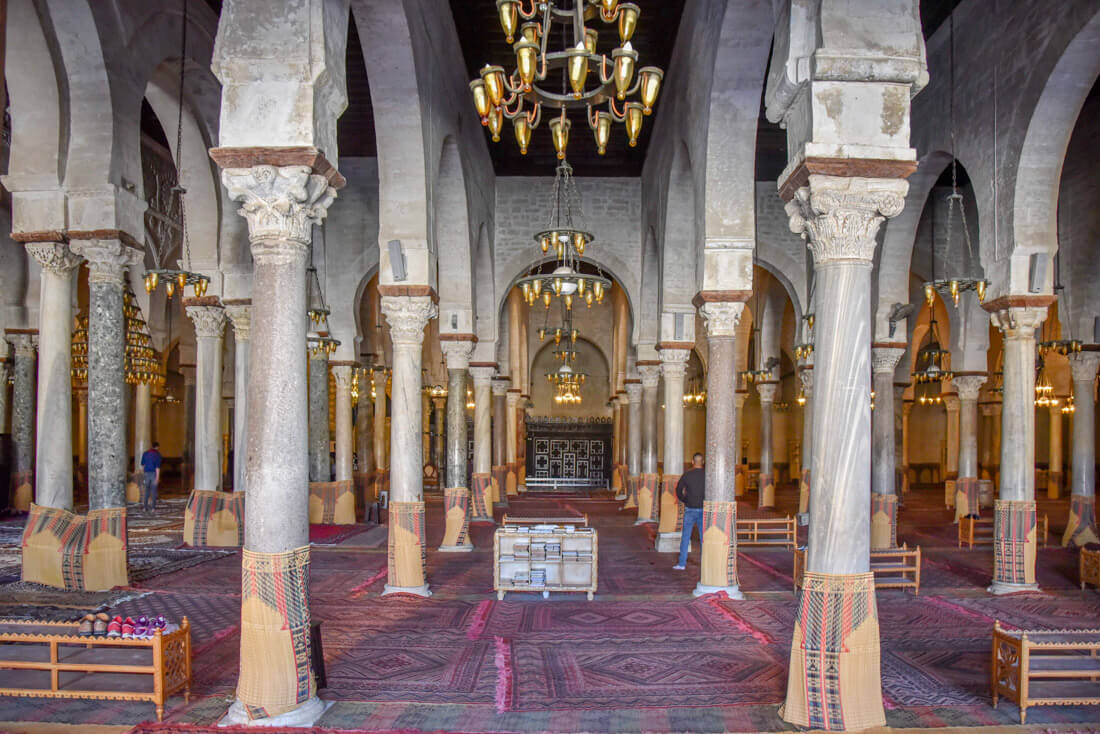
Things to do in Kairouan
At the Great Mosque, you can purchase one ticket that allows you to visit several sites and these are the ones I visited:
- Great Mosque – From the 7th century, one of the holiest Islamic places in Africa.
- Bir Barouta – An Ottoman-era building that was built around a well which apparently, connects to another well in Mecca. Sadly, they enslaved a poor camel that spends his day turning the well’s wheel.
- Zaouia of Sidi Sahab – Very beautiful Muslim complex with Andalusian-style tiles.
How to get to Kairouan from Sousse
There isn’t a train line passing through Kairouan, so you need to take a louage , which takes a bit more than 1 hour.
Sousse bus station is outside of town, here: 35.809717, 10.636374.
Mullah stories In Kairouan (in Zaouia of Sidi Sahab) I was approached by a kind Tunisian who gave me a 30-minute Islamic lesson in an attempt to persuade me to consider converting to Islam, and it was only 30 minutes because very kindly, I told him I had to leave. A very intense man, but I have bumped into many of those in my travels, and they always tell you the story of a British or an American who found God, hence inner-peace and happiness, after listening to his words.

Day 6 – Day trip to El Jem, an impressive Roman amphitheater
El Jem was one of my favorite places in my Tunisia itinerary.
This is home to one of the most epic Roman amphitheaters in the world, in fact, the 3rd largest one, built in the 2nd century, but for obvious reasons, it is much less crowded than the one in Rome.

Around 1km from the amphitheater, there is an archaeological museum also containing plenty of Roman mosaics, many of whom feature the scene when wild animals were released into the arena to eat convicts.
You must get the ticket at the amphitheater’s office, and it also includes the museum entrance.
Since it is on the way to Sfax, I took a train from Sousse early in the morning, visited El Jem for a few hours, and then I could easily get a train to Sfax.
Next to El Jem’s train station, there is a fancy hotel whose staff were kind enough to keep my backpack while I visited the city.
How to get to El Jem from Sousse
It’s a 1-hour train journey from Sousse central train station
Looking for guided visits to El Jem? CLICK HERE TO SEE ALL AVAILABLE TOURS TO EL JEM

Day 7 – Sfax, the coolest medina in Tunisia
Before traveling to Tunisia, I had read in a guidebook that the locals of Sfax were believed to be very thrifty hard-workers.
In my experience, most guidebooks are always filled with unlikely quotes but upon my arrival in Tunis, I spent some time discussing my Tunisian itinerary with a local guy who told me the exact same thing.
And, perhaps, this is the reason why, despite being untouched by tourism, Sfax has some sort of cosmopolitan feel by African standards, and many people there seem to be very open-minded.
Additionally, Sfax is also home to the best medina in the whole Tunisia, very big and authentic which hasn’t been spoiled yet by the arrival of tourists.
Things to do in Sfax
- Getting lost in the medina – As I said, this purely African medina is very traditional and authentic.
- Abandoned Synagogue – Tunisia used to be home to a large Jewish community and, in Sfax, there is an abandoned synagogue.
- Place de la Republique – French-style buildings at the entrance to the medina.
Where to stay in Sfax
There are 2 budget auberges (one next to other) 2km north west outside of the Medina.
For more hotel options in Sfax,
Jews in Tunisia Tunisia today has one of the largest Jewish communities in the Arab world, mainly living in Tunis city and Djerba Island. Of course, most of them migrated to Israel after the Israel-Palestinian war but many of them remain and a few synagogues are still functional, another fact that proves overall the tolerance in Tunisia.
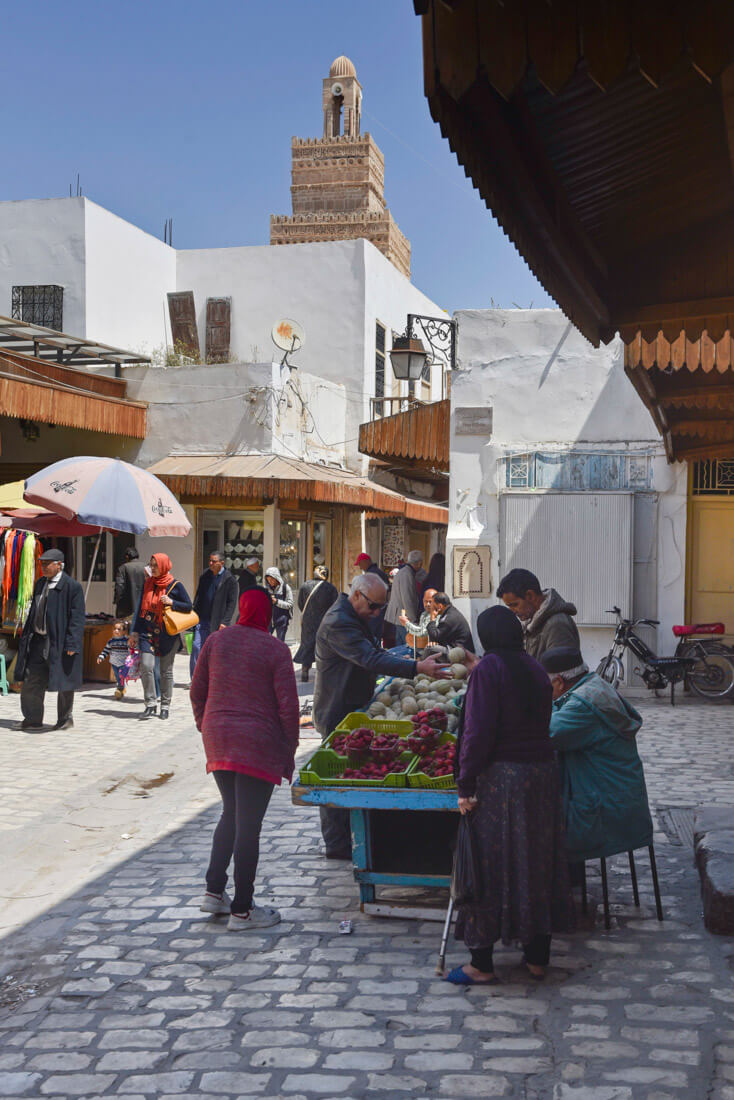
Day 8, 9 – Tataouine & around: southern Berber lands
The lesser-visited southern part of Tunisia is an arid territory that extends all the way to the Libyan border.
Berber villages, camels, ancient ksars (fortified Berber villages), and just remoteness and inhospitality, no wonder why George Lucas decided to shoot Star Wars in these lands.
This is just so different from any place you visited in Tunisia, way more conservative and home to the Berbers, the indigenous people of North Africa before the Arabs came.
How to visit Tataouine The area is vast, touristic sites are scattered, and there is no public transportation. I mean, there are a few buses but it is not a convenient way to move around, not even for backpackers. The best way to explore this area is by either renting a car or going on a tour. I rented a car for a day in a rental car office in Medenine and paid less than $25.
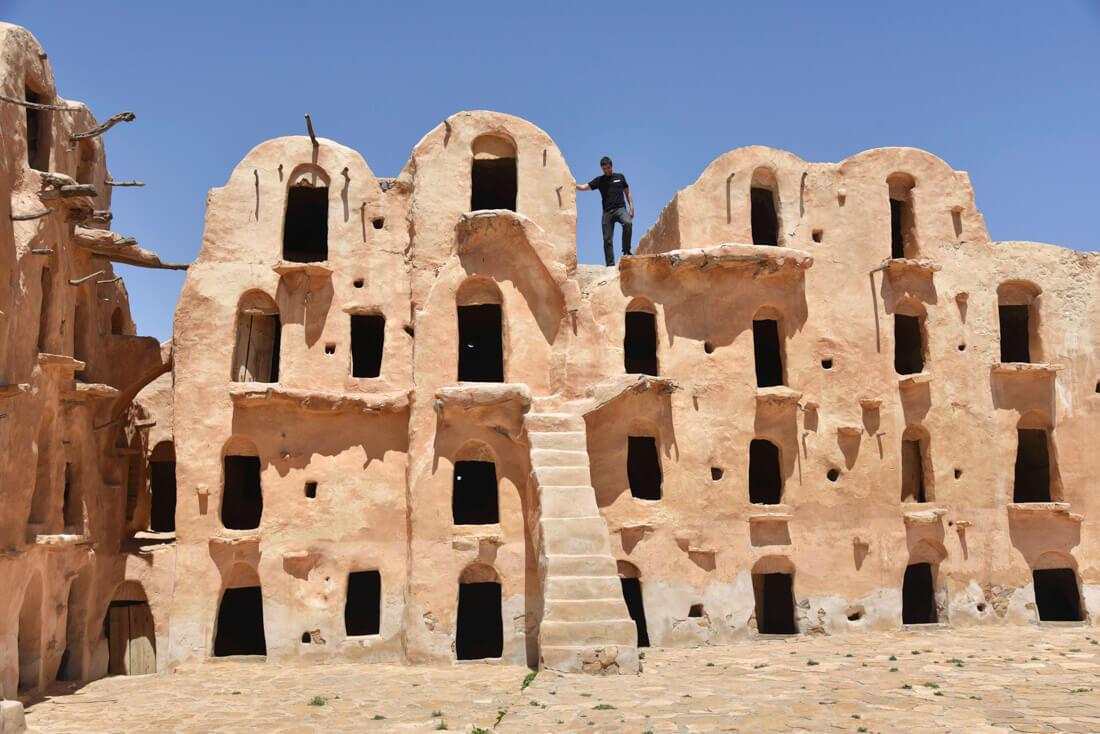
Things to do in Tataouine & around
On a normal path, you will need an entire day to visit these places, and still, you may have to rush a bit. If you want to leave early in the morning, I suggest you rent the car on the day before, as rental car shops didn’t open until 9-10am.
The ”green pins” from the previous interactive map mark the following places:
- Ksar Ouled Soltane – The most well-preserved ghorfas in the area. Ghorfas are ancient 4-story buildings that Berbers used to store the grain.
- Chenini – For me, this was the best place to visit in Tataouine. A massive ancient ksar from the 12th century sitting on a hilltop. Gorgeous.
- Guermassa – Another great ksar, not as epic as Chenini’s but still great. I only saw it from the bottom because it takes almost 1 hour to go up and I didn’t have time. The top, however, can be reached by 4WD.
- Ghomrassen – Off the beaten track modern town with pretty cool local architecture, and the ideal place to stop for lunch.
- Ksar Hadada – This ksar used to be a movie set for Star Wars. I am not a big Star Wars fan, so for me, it was not that interesting, as it was nothing more than some commercial, over-restored ghorfas .
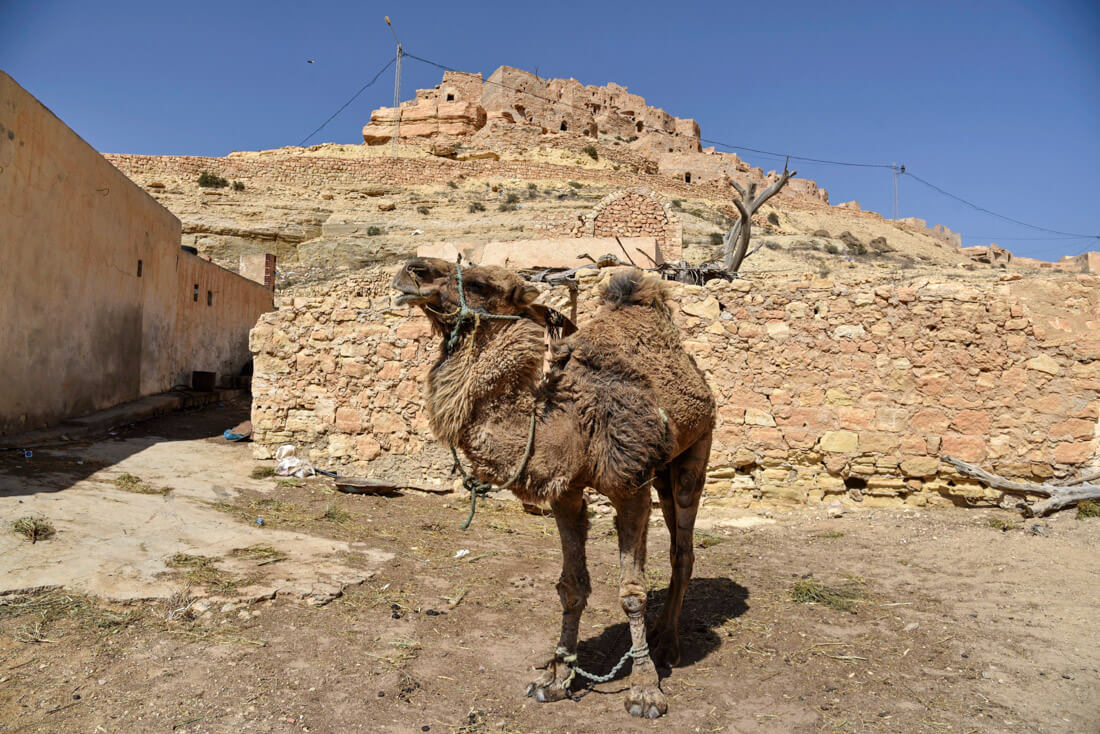
Where to stay in the area
I recommend you stay in Tataouine.
Budget – Auberge Alferdaus – An all right auberge/pension for budget travelers and backpackers.
Apartment – Dar Essadeg – Full traditional apartment.
Mid-range – Sangho Privilege Tataouine – For a comfortable stay, this oasis hotel has great facilities, including a pool, and it is not expensive at all for what you get.
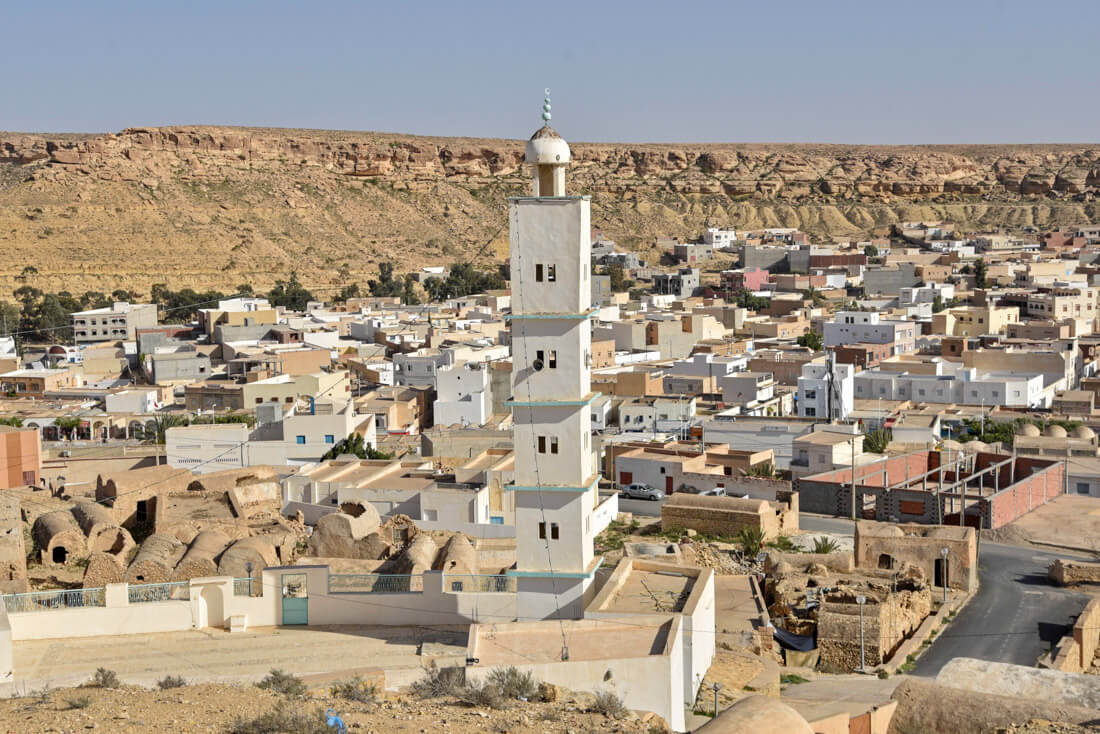
Day 10, 11 – The oasis-town of Tozeur & around
Tozeur is a pleasant oasis town with a very unique old quarter whose buildings are made of bricks (hand-made apparently) and a base from which to explore other mountain oases and check out potential camel caravans.
They claim that those oases have been inhabited for 10,000 years.
If you have been reading my blog for a while, you will know that I like to be honest, and the truth is that this was my least favorite part of my trip to Tunisia.
First of all, because all those landscapes are in my opinion, a small version of the ones you find in north Oman , a country I visited multiple times. And second of all, because this was the only place where the main sites were just packed with tourists, many of them being the irresponsible type. But to be fair, it also didn’t help that the weather was awful (loads of wind and sand).
But anyways, traveling is extremely subjective and you might have a different experience.
Like Tataouine, the area around Tozeur is best explored by car or on an organized excursion. Most hotels can arrange it for you. I personally explored all places with a local friend I had met on Instagram.
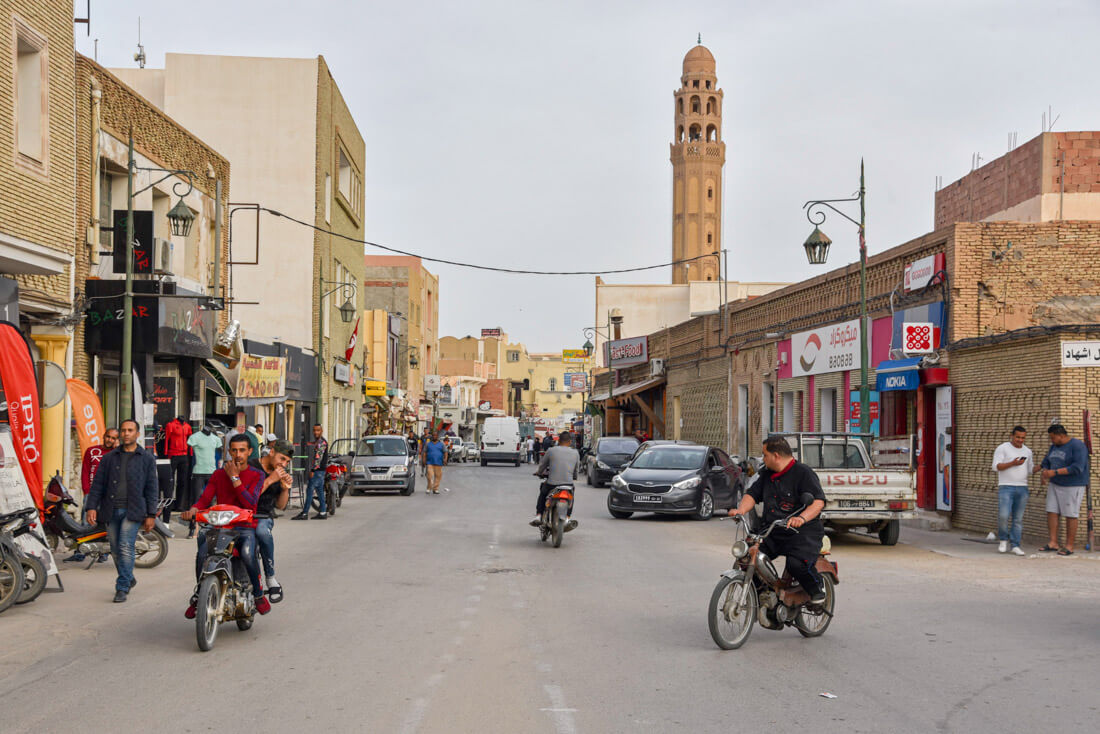
Things to do in Tozeur
Please see the ”orange pins” from the previous interactive map.
- Chebika – A small village home to a massive palmeraie.
- Tamerza – Another small village with a palmeraie, a small canyon, and a waterfall.
- Midès – And another small oasis village but the highlight is the stunning views you get to see from the road that leads to it.
- Ong Jemal – A desert famous for its sunsets and the location of a Star Wars movie set, where the original decoration still remains. Tour agencies will tell you need a 4×4 to reach the place but it is not true.
Where to stay in Tozeur
Budget – Residence Warda – A budget pension good for backpackers.
Mid-range – Residence Loued – A very pleasant traditional hotel at the heart of the Old City.
How to get to Tozeur from Tataouine
The journey is rather more than 300km.
From Tataouine, you need to take a louage to Medenine and from Medenine, another one to Gabés (not sure if you can find a direct one from Tataouine).
If you are lucky and trains are functional, you should be able to take a train from Gabés to Tozeur. Otherwise, take a louage from Gabés to Gafsa and from Gafsa to Tozeur.
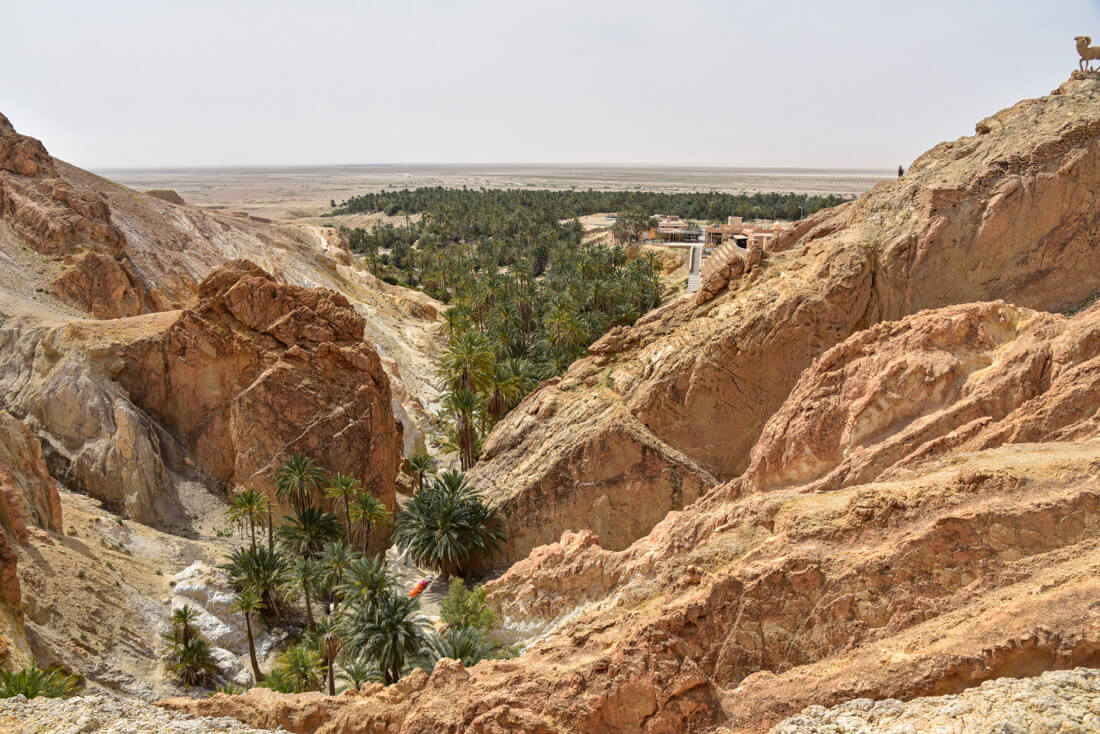
Day 12 – El Kef, traditional off the beaten track town
El Kef and the area around was my favorite part of my Tunisia itinerary.
It is a barely visited town and the top of the medina features a kasbah from where you get stunning views of the city and the green meadows surrounding it.
It has a very authentic, traditional atmosphere as well. I spent 3 nights here – as I used it as a base to explore some places around – and didn’t bump into a single tourist.
Where to stay in Le Kef
There aren’t many options, but I stayed in a hotel close to the Medina named Hotel Sicca Veneria , where I paid $15 a night. It was good!
How to get to Le Kef from Tozeur
It’s a long way, around 330km.
From Tozeur, you need to first get a louage to Gafsa. From Gafsa, a second louage to Kasserine and from Kasserine to Le Kef. It takes the entire day.
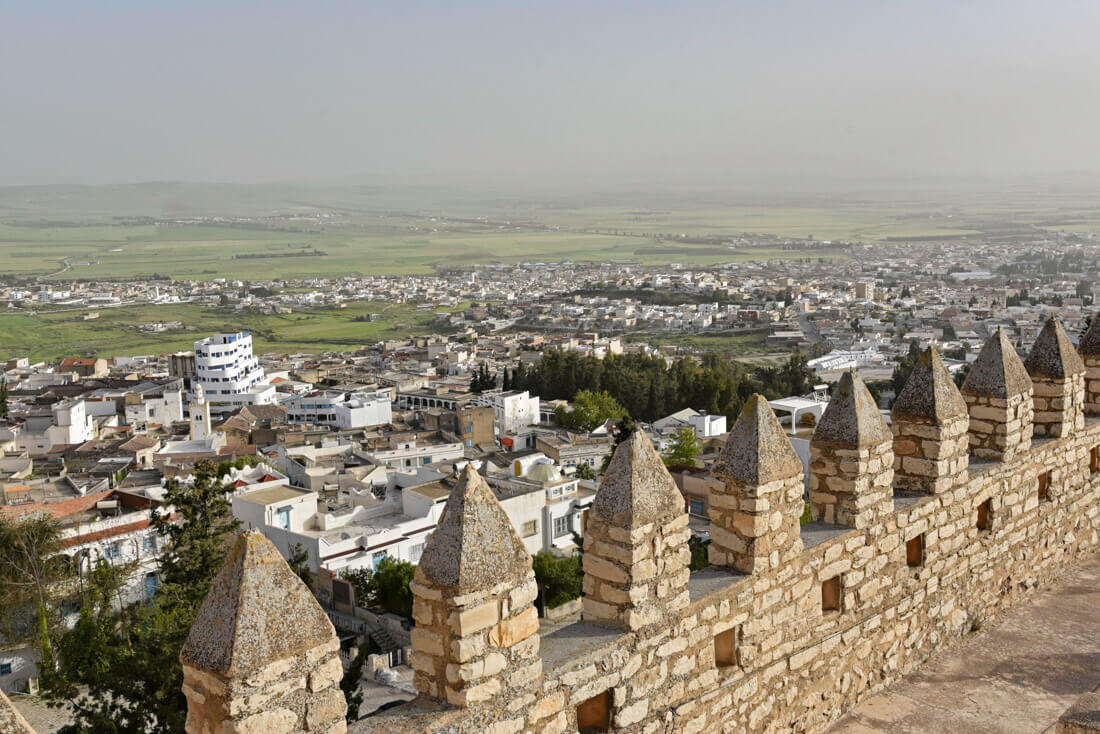
Day 13 – Day trip to Jugurtha Tableland
This off the beaten track gem was the top attraction I visited in Tunisia.
A natural military fortress, Jugurtha Tableland is a massive flat-topped mountain that rises above 1270 meters, and that has been used as a fortress for centuries, from the Romans to today’s Tunisian Army.
That’s why this is kind of a sensitive place, especially because this is a border area from where you see Algeria – stunning views of Algeria, by the way – so having a guard with you all the time is a must (free of charge).
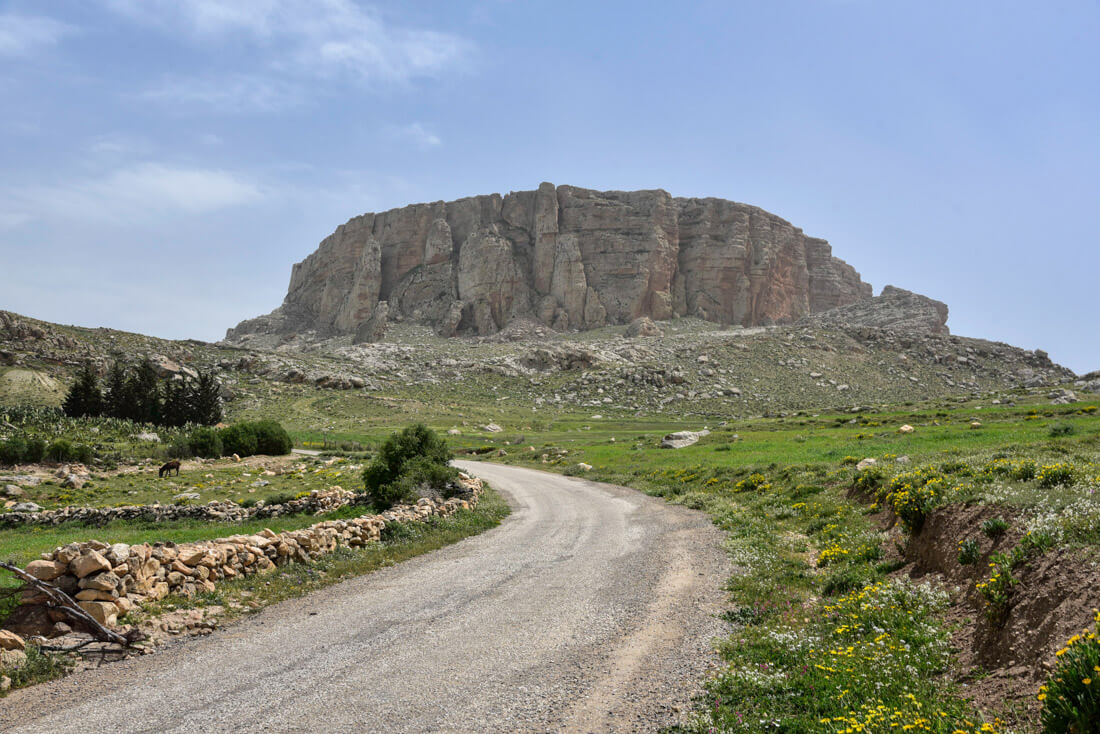
How to get to Jugurtha Tableland from El Kef
From El Kef bus station, you can take a louage to the border town with Algeria named Qalat as Sanan.
Most likely, the driver will already know about your intentions, so he will drop you at the police station, where they will make you answer a few questions and register for visiting Jugurtha.
I was extremely stupid to forget my passport in El Kef but, luckily, my Spanish ID was enough for them.
Then, the police helped me looking for a taxi to take me to the bottom of Jughurta (4km), and I paid the equivalent of around $10.
Once you arrive, an official guide will welcome you and take you to the top.
It also possible to camp at the top, but you will have to get permission at the police office, and a guard will be with you all night – I mean, they have their own huts. However, be aware that it is extremely windy.
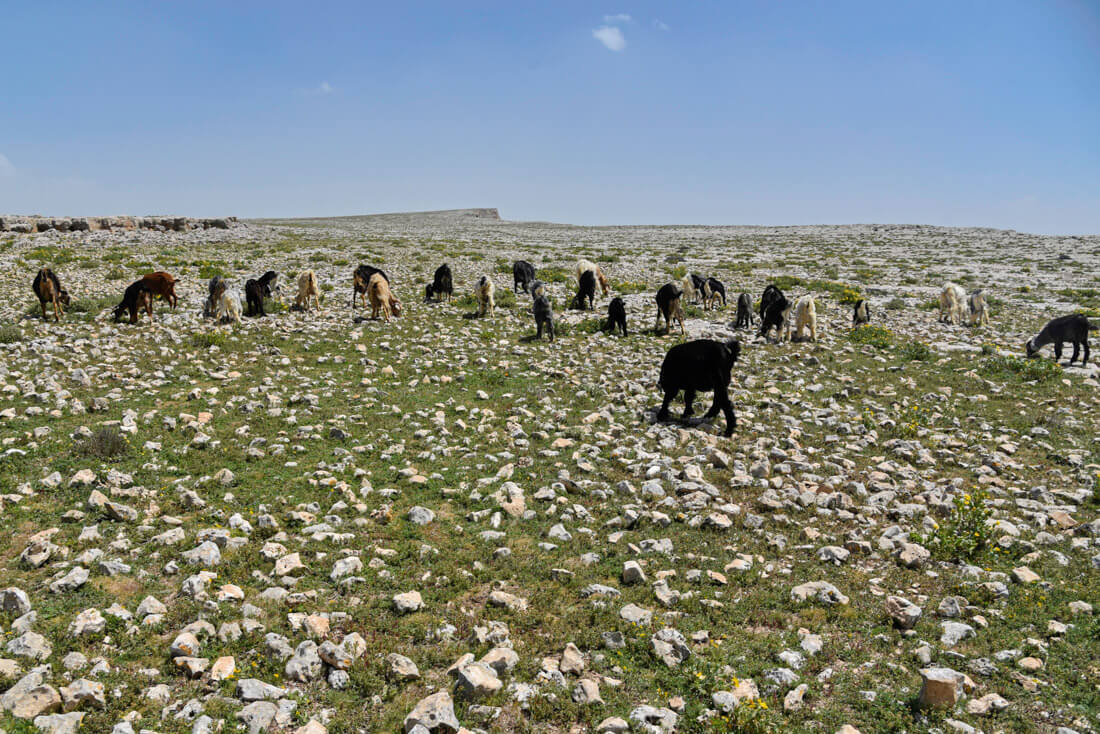
Day 14 – Day trip to Dougga Roman ruins
When I traveled to Tunisia, I also got the chance to check out this amazing place, a UNESCO World Heritage site since 1997 named Dougga,
Dougga has some of the most impressive Roman ruins I have ever seen outside of Rome, probably more stunning than the ruins of Baalbek in Lebanon , or Jerash in Jordan , not only for the ruins themselves, which are in great conditions but also because Dougga was set up in a prime, fertile location, today surrounded by beautiful olive trees and wheat plantations.
Absolutely gorgeous.
Dougga is dominated by the perfectly well-preserved Capitol, dedicated to Jupiter, but you can also find many other temples in good conditions and an amphitheater.
Allow yourself a few hours to visit the area and try to come by the end of the day, when little crowds are gone and, if possible, on a weekday.
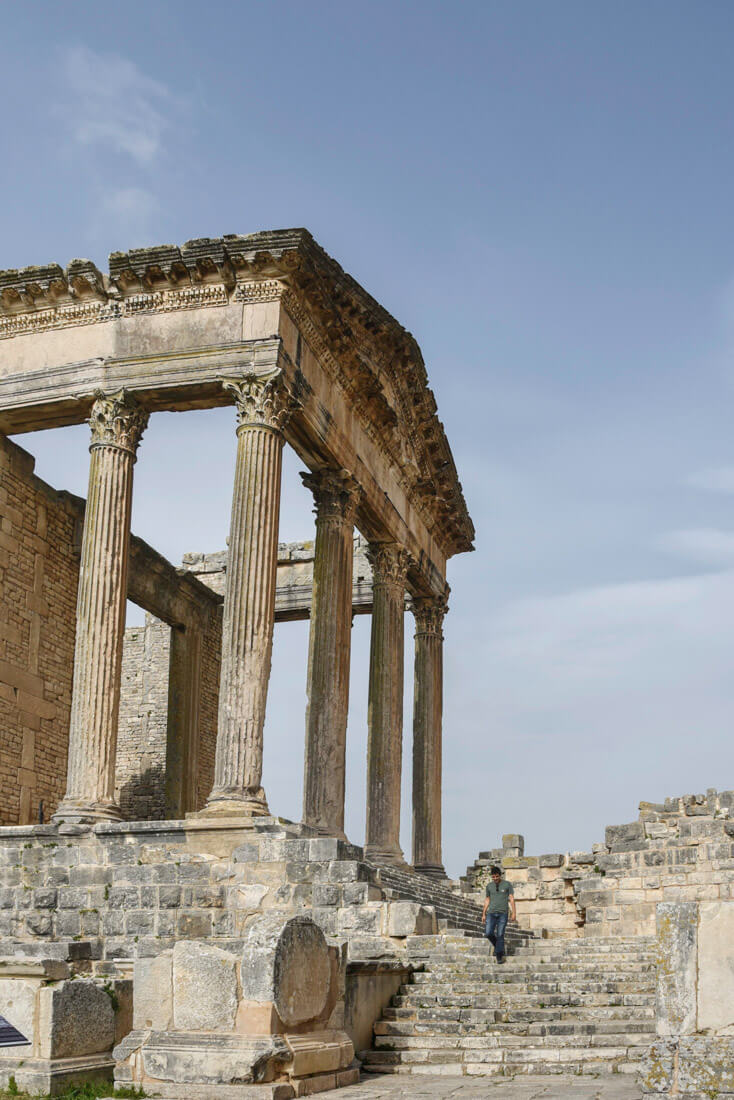
How to get to Dougga from El Keff
It was a bit complicated.
From El Kef, I took a louage to a village named Al Karib. Once in Al Karib, I asked for a louage going to Dougga town, which is 4km from the ruins, but everybody kept me saying there weren’t any, so I decided to hitchhike the remaining 20km, but it was a bit hard, as nobody would stop, don’t know why.
Then, on my way walking from Dougga town to the ruins, a kind man – a worker – picked me up.
Coming back to El Kef was fairly easy, as I just got in the first louage that passed by. By the way, from Dougga, you could easily go back to Tunis.

❗ More information for backpacking in Tunisia
📢 In my Travel Resources Page you can find the list of all the sites and services I use to book hotels, tours, travel insurance and more.
Get the Tunisia Travel Guide by Lonely Planet – A bit outdated but so far, the only one available.

All guides and articles for traveling in Tunisia destination
- Tunis Travel Guide
- Is Tunisia Safe?
Travel guides to other countries in Africa
- Ethiopia Travel Guide
- Eritrea Travel Guide
- Somaliland Travel Guide
- Travel Guide to Sudan
- Travel Guide to Egypt
- Libya Travel Guide
- Mali Travel Guide
- Travel Guide to Mauritania
PIN IT FOR LATER
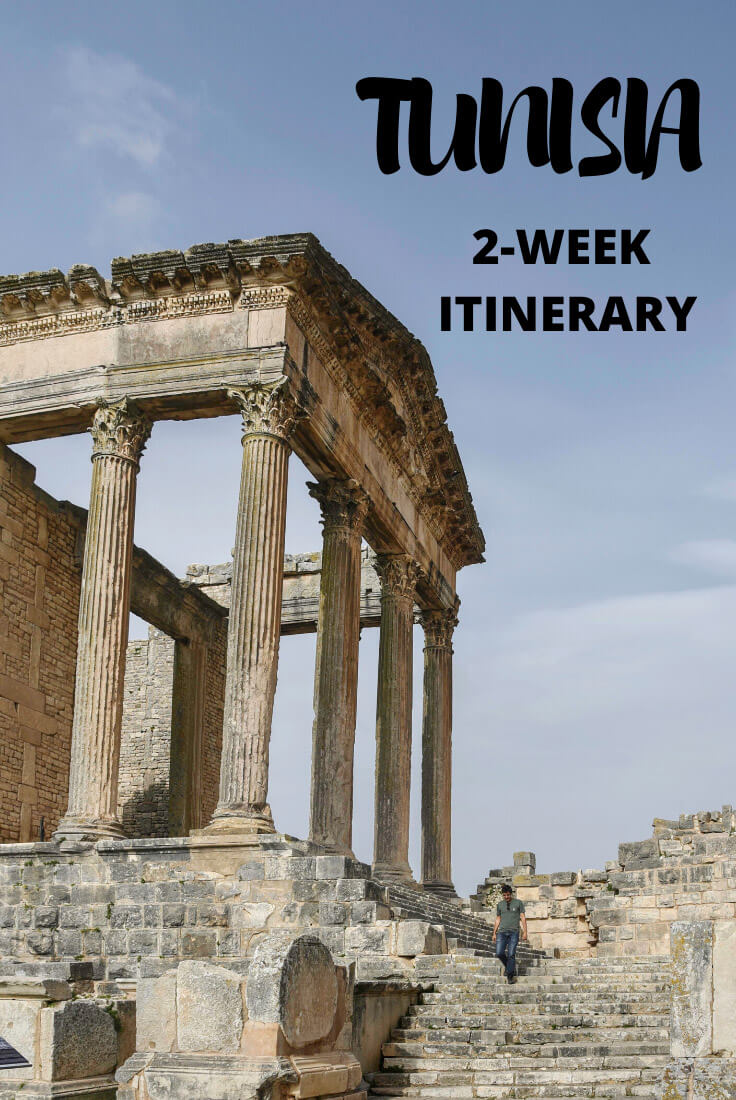
20 comments
Great blog and info as always:)Am supposed to go to Tunisia in october for 2,5 weeks ,still plan on going if……
Love reading your post, as it brings so many great memories. We have done 2 weeks roadtrip around the country too, but left the northern part for next time – I sure hope to be able to return soon and that these crazy times will be just a bad memory. All the best!
Has anyone rented a car and drove around Tunisia independently?
I did, in the south. Very easy
Man, let me tell you something and you can take it as a fact: any Arabic speaker can speak freely with another Arabic speaker from anywhere in the world. Yes, there are diferences and they can tell roughly from where the other dude is. Like I can tell a Texan from an Australian.
Hey Joan: Another great trip report. Currently planning my itinerary for my summer trip to Tunisia. This will largely be a RnR/beach vacay but looking to include some side excursions. Will likely position ourselves in Sousse and wondering if Dougga is doable as a day trip via public transportation? Also how does it compare to the amphitheatre in Busra, Syria?
Just want to make sure, the train to Sousse from Tunis is 10,000 Dinars or more than 3,000 USD for a 2 hour train ride?
Hi Joan, Thank you for a great introduction to Tunesia. Being European I typically spend my vacations at tourist hotspots in Spain, Greece, or Italy. It’s nice – but far from the adventure you’re describing. Need to convince the rest of my family to become a bit more adventourous 🙂
Mega helpful. Thank you.
Is there anyway to get from Sousse to Dougga?
Thank you for the information. Planning on a 2-week trip end of April 2023. Trying to source information about the Northern part especially traveling from/to Tunis – Bizerte – Cap Engela – Tabarka – Tunis
I’d love to visit Dougga. You said it’s possible to get back to Tunis from Dougga, is there a louage going between the two?
Hi Sarah, not from Dougga, since that is an archaeological site, but from nearby villages or towns.
Good evening, Hope everything is fine. I am planning to go to Tunisia and I wonder if there is a way to go from Medénin to Djerba Island by public transportation. If you know if there is a way I would like you to confirm it to me. Thank you in advance
Hey, I don’t remember exactly but I did go there by bus. It should be easy, just go to the bus station and ask for it
hello joan . i am planning to visit tunisia in august and move around with louages. in your article you mentioned that you visited tozeur with a louage. do you remember if it was direct ( tunis – tozeur ) or i have to change a bus in another city ? also , the station in which louage leave ( from tunis ) is called moncef bey , right ? any information will be helpful . thanks in advance and also thank you for sharing all these travel informations for countries that are not so visited . greetings from greece 🙂
Hi Konstantina! I traveled slowly from Tunis to Tozeur, stopping in many places in between, so I can’t really tell!
Hola Joan, qué tal?
A ver si hay suerte y ves el mensaje a tiempo. Estoy en Túnez y en unos tengo pensado visitar la zona alrededor de Medenine/Tataouine y estoy buscando un sitio para alquilar coche un día. Me podrías pasar el nombre, la ubicación o algún contacto aún mejor del sitio dónde alquilaste tú?
Muchas gracias, saludos!
Hola Jack, lamentablemente jamás me apunté la dirección, pero todo lo que hice fue buscar en Google Rent a Car
hello , thank you for writing about Tunisia but I think you should update your prices for the food , those prices must be from 10 years ago !
They are from 2019 but if you have any updated prices, they are most welcome 🙂
Leave a Comment Cancel reply
Your email address will not be published. Required fields are marked *
Notify me when new comments are added.
Join our Expeditions
From Syria to Iraq in Pakistan, Against the Compass is finally running expeditions to the most epic and off-the-beaten-track countries.
We have scheduled expeditions for every month of the year.
Latest posts
- Backpacking Venezuela Travel Guide (2024)
- How to travel to Afghanistan during Taliban rule (2024)
- How to visit Los Llanos in Venezuela
- How to visit Angel Falls and Canaima National Park
- Things to do in Haiti in a 1-week itinerary

Enjoy fast, free delivery, exclusive deals, and award-winning movies & TV shows with Prime Try Prime and start saving today with fast, free delivery
Amazon Prime includes:
Fast, FREE Delivery is available to Prime members. To join, select "Try Amazon Prime and start saving today with Fast, FREE Delivery" below the Add to Cart button.
- Cardmembers earn 5% Back at Amazon.com with a Prime Credit Card.
- Unlimited Free Two-Day Delivery
- Streaming of thousands of movies and TV shows with limited ads on Prime Video.
- A Kindle book to borrow for free each month - with no due dates
- Listen to over 2 million songs and hundreds of playlists
- Unlimited photo storage with anywhere access
Important: Your credit card will NOT be charged when you start your free trial or if you cancel during the trial period. If you're happy with Amazon Prime, do nothing. At the end of the free trial, your membership will automatically upgrade to a monthly membership.
Buy new: $10.99

Download the free Kindle app and start reading Kindle books instantly on your smartphone, tablet, or computer - no Kindle device required .
Read instantly on your browser with Kindle for Web.
Using your mobile phone camera - scan the code below and download the Kindle app.

Image Unavailable

- To view this video download Flash Player

Follow the author

Tunisia Travel Guide Paperback – March 22, 2022
Purchase options and add-ons.
- Print length 76 pages
- Language English
- Publication date March 22, 2022
- Dimensions 6 x 0.18 x 9 inches
- ISBN-13 979-8436986043
- See all details

Frequently bought together

Customers who viewed this item also viewed

Editorial Reviews
Product details.
- ASIN : B09W74GRSZ
- Publisher : Independently published (March 22, 2022)
- Language : English
- Paperback : 76 pages
- ISBN-13 : 979-8436986043
- Item Weight : 5.9 ounces
- Dimensions : 6 x 0.18 x 9 inches
- #6 in Tunisia Travel Guides
- #364 in General Africa Travel Books
About the author
Mike gerrard.
I'm an award-winning travel and drinks writer, contributing to newspapers, magazines and websites in the UK, USA, and worldwide. My specialities are the USA, Greece, and the UK, and for drinks I specialise in spirits.
I publish my own website combining travel and spirits, Travel Distiled:
https://www.traveldistilled.com
My first book about the drinks business is not, in fact, about spirits, but the wonderful objects in which they're matured: barrels. Cask Strength: The Story of the Barrel, the Secret Ingredient in Your Drink is published in July 2023 by Matt Holt.
"Cask Strength is a must read for all bartenders! If you think you know all there is about barrel ageing and casks, guess again. Mike Gerrard delves deep into the history of barrels and casks with an incredible amount of detail. I feel like I've really upped my knowledge with this fantastic book!"
Paula Lukas, Mixologist/Beverage Consultant
I also write about food and drink for the travel pages, having covered vineyards in Greece and New Zealand, breweries in Belgium and Britain, restaurants in Paris, a chocolate shop in Lyon, the biggest wine cellar in the world (in Florida), interviewing an English sommelier in Paris, and sipping my way through the Champagne region of France, the distilleries of Cognac, Kentucky, Scotland and Jalisco, and the sherry bodegas of Jerez.
Combining music and travel is another love: I have written pieces about Bob Marley, the Beatles, Elvis Presley and Hank Williams.
More exotic travels have taken me camel-trekking in the Sinai Desert (right), walking in the Great Rift Valley, learning to jive in Barcelona, looking for orang-utans in Sumatra, staying with a farming family in China and working as a waiter in a restaurant on Zakynthos in Greece. As a result I now leave bigger tips.
I have also written or contributed to over 30 guidebooks, especially on Greece, France and the USA. In addition, I've written three radio plays for the BBC, presented a half-hour radio travel programme about Egypt, written fiction and humour for men's magazines, written a crime novel (Strip till Dead) and even written an erotic novel. I may be the only writer to have contributed both to Mayfair (I was in the same issue as Bill Bryson) and to The Baptist Times. Not to mention writing a few minutes of the UK's favourite TV soap, Coronation Street, when my father was a scriptwriter on the programme and he gave me three scenes to write.
My wife Donna Dailey and I publish and write our own travel websites about America's Pacific Coast Highway (https://www.Pacific-Coast-Highway-Travel.com), about Arizona, where we live half the year (https://www.arizona-travel-guide.com), about Greece (https://www.Greece-Travel-Secrets.com), and a general travel website, The Travel Pages (https://thetravelpages.net).
You can find out more about me and my current activities on my personal website:
https://www.mikegerrard.com
You can also find me on Twitter:
https://twitter.com/Mike_Gerrard
https://twitter.com/TravelDistilled
Customer reviews
Customer Reviews, including Product Star Ratings help customers to learn more about the product and decide whether it is the right product for them.
To calculate the overall star rating and percentage breakdown by star, we don’t use a simple average. Instead, our system considers things like how recent a review is and if the reviewer bought the item on Amazon. It also analyzed reviews to verify trustworthiness.
- Sort reviews by Top reviews Most recent Top reviews
Top reviews from the United States
There was a problem filtering reviews right now. please try again later..

Top reviews from other countries
- Amazon Newsletter
- About Amazon
- Accessibility
- Sustainability
- Press Center
- Investor Relations
- Amazon Devices
- Amazon Science
- Sell on Amazon
- Sell apps on Amazon
- Supply to Amazon
- Protect & Build Your Brand
- Become an Affiliate
- Become a Delivery Driver
- Start a Package Delivery Business
- Advertise Your Products
- Self-Publish with Us
- Become an Amazon Hub Partner
- › See More Ways to Make Money
- Amazon Visa
- Amazon Store Card
- Amazon Secured Card
- Amazon Business Card
- Shop with Points
- Credit Card Marketplace
- Reload Your Balance
- Amazon Currency Converter
- Your Account
- Your Orders
- Shipping Rates & Policies
- Amazon Prime
- Returns & Replacements
- Manage Your Content and Devices
- Recalls and Product Safety Alerts
- Conditions of Use
- Privacy Notice
- Consumer Health Data Privacy Disclosure
- Your Ads Privacy Choices

IMAGES
VIDEO
COMMENTS
Tunisia Travel Guide 2024: An Expert Guide Packed With Detailed Rich Information Including Planning Your Trip, History and Culture, Top destinations, Natural Wonders, Hidden Gems and Insider Advice ... Journey through Tunisia Unveiling Rich Heritage and Modern Wonders Your Essential Travel Companion for 2024 (TRAVEL DESTINATIONS GUIDE BOOKS ...
Tunisia. It may be but a slim wedge of North Africa's vast horizontal expanse, but Tunisia has enough history and diverse natural beauty to pack a country many times its size. With a balmy, sand-fringed Mediterranean coast, scented with jasmine and sea breezes, and where the fish on your plate is always fresh, Tunisia is prime territory for a ...
Tunisia travel guide. Expert advice and tourist information covering Tunis, Sahara Desert, Djerba, Star Wars pilgrimages, Chott el Djerid salt lake, Sidi Bou Said, Kairouan, archaeological and heritage sites (Roman amphitheatre of El Jem, Ancient Carthage, Ribat of Monastir fort), museums, beaches, camel trekking, kitesurfing, wildlife, nightlife
This is the first definitive guide written for Tunisia in many years, and what a great guide it is.The book includes history, interesting facts, and useful travel information.The tone of the book is conversational, and the author clearly both knows and loves Tunisia.We developed our entire trip around the information in this book and had a ...
Tunisia (Bradt Travel Guides) Paperback - 26 Jun. 2023. Written by long-term resident, adventurer and experienced travel writer Oscar Scafidi, this brand new Bradt publication is the most up-to-date, comprehensive travel guidebook to Tunisia produced by a mainstream publisher. Taking account of this North African country's recent political ...
Buy Lonely Planet Tunisia (Travel Guide) 5 by Donna Wheeler, Paul Clammer, Emilie Filou (ISBN: 9781741790016) from Amazon's Book Store. Everyday low prices and free delivery on eligible orders. Lonely Planet Tunisia (Travel Guide): Amazon.co.uk: Donna Wheeler, Paul Clammer, Emilie Filou: 9781741790016: Books
Tunisia travel guide. About Tunisia. ... Book a Hotel. About The World Travel Guide. The World Travel Guide (WTG) is the flagship digital consumer brand within the Columbus Travel Media portfolio. A comprehensive guide to the world's best travel destinations, its print heritage stretches back more than 30 years, with the online portal ...
DK Eyewitness Travel Guide: Tunisia is your in-depth guide to the very best of this country in North Africa. Whether you want to lounge on its picture-perfect beaches, visit the ruins in Carthage and other treasures the ancient Romans left behind, or cross the vast Sahara on camelback as the sun sets, Tunisia proves to be a beguiling country steeped in a strong culture and history that truly ...
Promising culture, views, and experiences that will not disappoint, Tunisia is the perfect gateway from Europe to Africa. It packs vibrant cities, mountainous greenery, expansive desert, and sparkling coasts into a small area. This Tunisia travel guide will convince you to plan a trip and tell you how to! Tunisia is totally a hidden gem.
This Travel Guide to Tunisia is by award-winning travel writer Mike Gerrard. The guide covers Tunis, Carthage, Sidi Bou Said, archaeological sites like Dougga, excursions to the Sahara Desert, and all the main Tunisian beach resorts and tourist towns. There is also a practical section with advice on menus, language, Tunisian customs and culture ...
Publisher: Bradt Travel Guides. ISBN: 9781784777517. Number of pages: 408. Weight: 210 g. Dimensions: 216 x 135 mm. MEDIA REVIEWS. Buy Tunisia by Oscar Scafidi from Waterstones today! Click and Collect from your local Waterstones or get FREE UK delivery on orders over £25.
Backpacking Tunisia Travel Guide (BUDGET TIPS • 2024) Nestled in a dreamy corner of Africa, lies a small but mighty land boasting sand, sea and copious amounts of tea. Sublime scenery. Unforgettable hospitality. Tunisia is a special, special place. Lush forests disappear South into the stillness of the Sahara, flanked by a coastline of ...
Get information on Tunisia Travel Guide - Expert Picks for your Vacation hotels, restaurants, entertainment, shopping, sightseeing, and activities. Read the Fodor's reviews, or post your own.
Best Sellers Rank: #2,414,844 in Books (See Top 100 in Books) #39 in Tunisia Travel Guides #1,569 in General Africa Travel Books; Customer Reviews: 4.3 4.3 out of 5 stars 39 ratings. Brief content visible, double tap to read full content. Full content visible, double tap to read brief content.
Books to read about Tunisia. Bradt Tunisia: the best and most up-to-date travel guide will be released in June 2023. Lonely Planet Tunisia: it is a good base but a bit outdated. Tunisia culture smart: You can learn about religion, history and life, and all the essentials before traveling to Tunisia
The optimal time for visiting Tunisia is 10-14 days. This way, you can see all the highlights and best attractions in Tunisia as well as relax a bit at the seaside. Of course, the more, the better, but even with only one week in Tunisia, you can see a lot. I spent ten days in Tunisia and was satisfied with what I saw then.
Day 7 - Sfax. Day 8, 9 - Tataouine & around. Day 10, 11 - Tozeur & around. Day 12 - El Kef. Day 13 - Jugurtha Tableland. Day 14 - Dougga. More information. eSIM for browsing, calling and planning your itinerary in Tunisia. With Holafly, you can now get an electronic SIM card for Tunisia from home with just 2 clicks.
Paperback. $10.99 1 Used from $6.99 1 New from $10.99. This Travel Guide to Tunisia is by award-winning travel writer Mike Gerrard. The guide covers Tunis, Carthage, Sidi Bou Said, archaeological sites like Dougga, excursions to the Sahara Desert, and all the main Tunisian beach resorts and tourist towns. There is also a practical section with ...
Through purchasing the Tunisia Guide ebook for only $4,99 , you are going to get that satisfaction in knowing that you have done all that can be done in order to be ready to take this trip and make it one in which you will remember forever. And, you are going to find that you are not going to become one of those trademark tourists that are lost ...